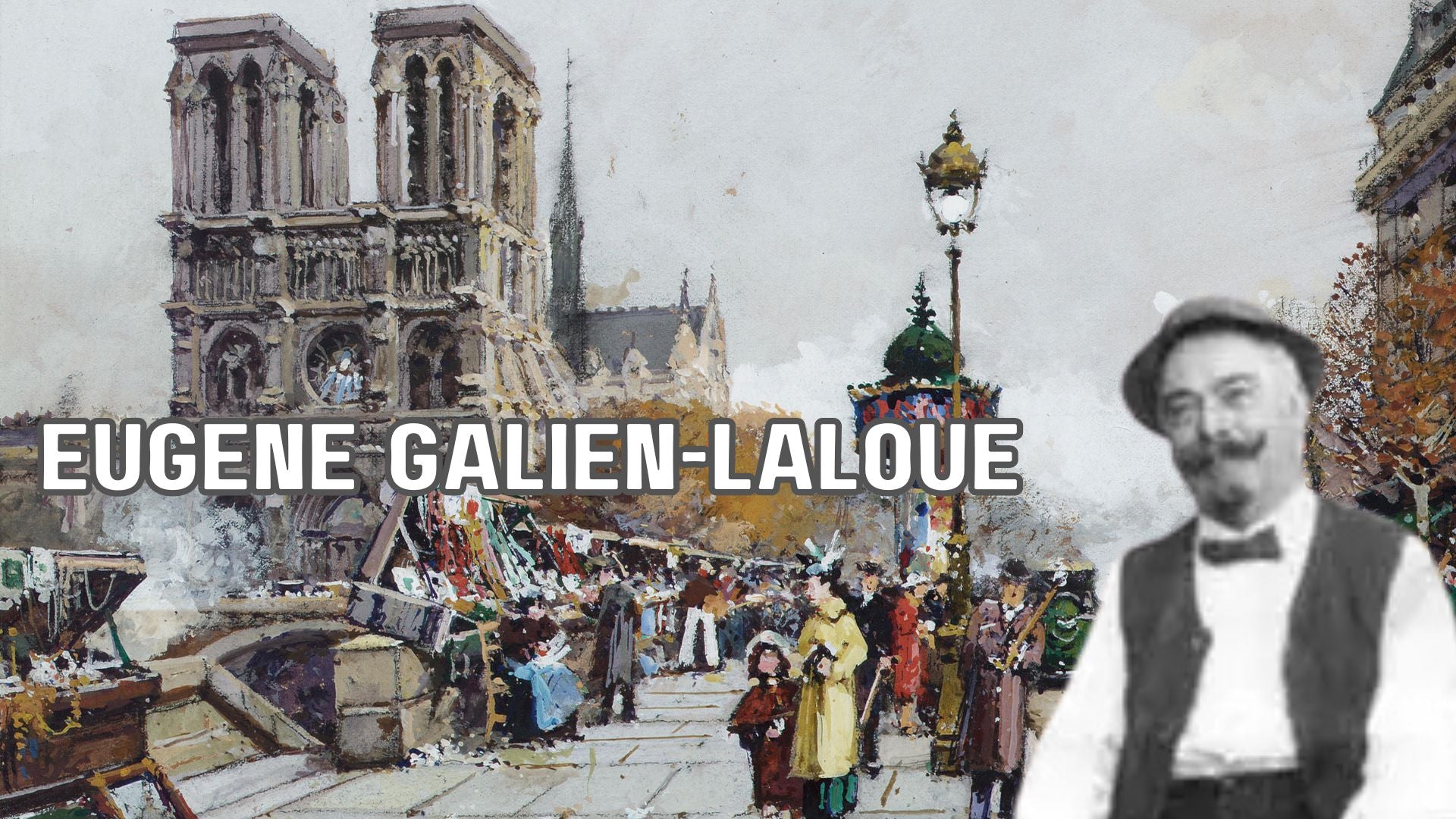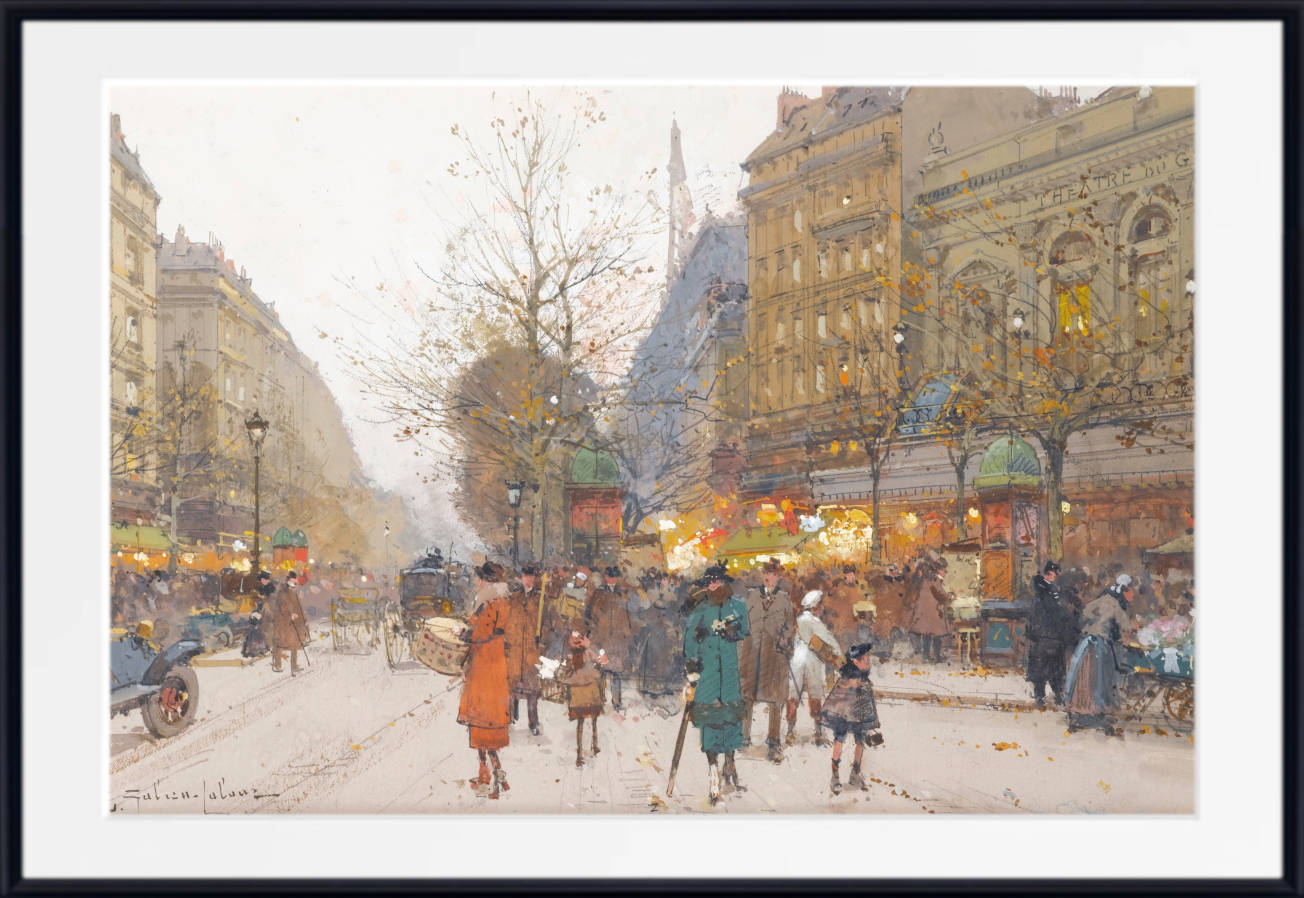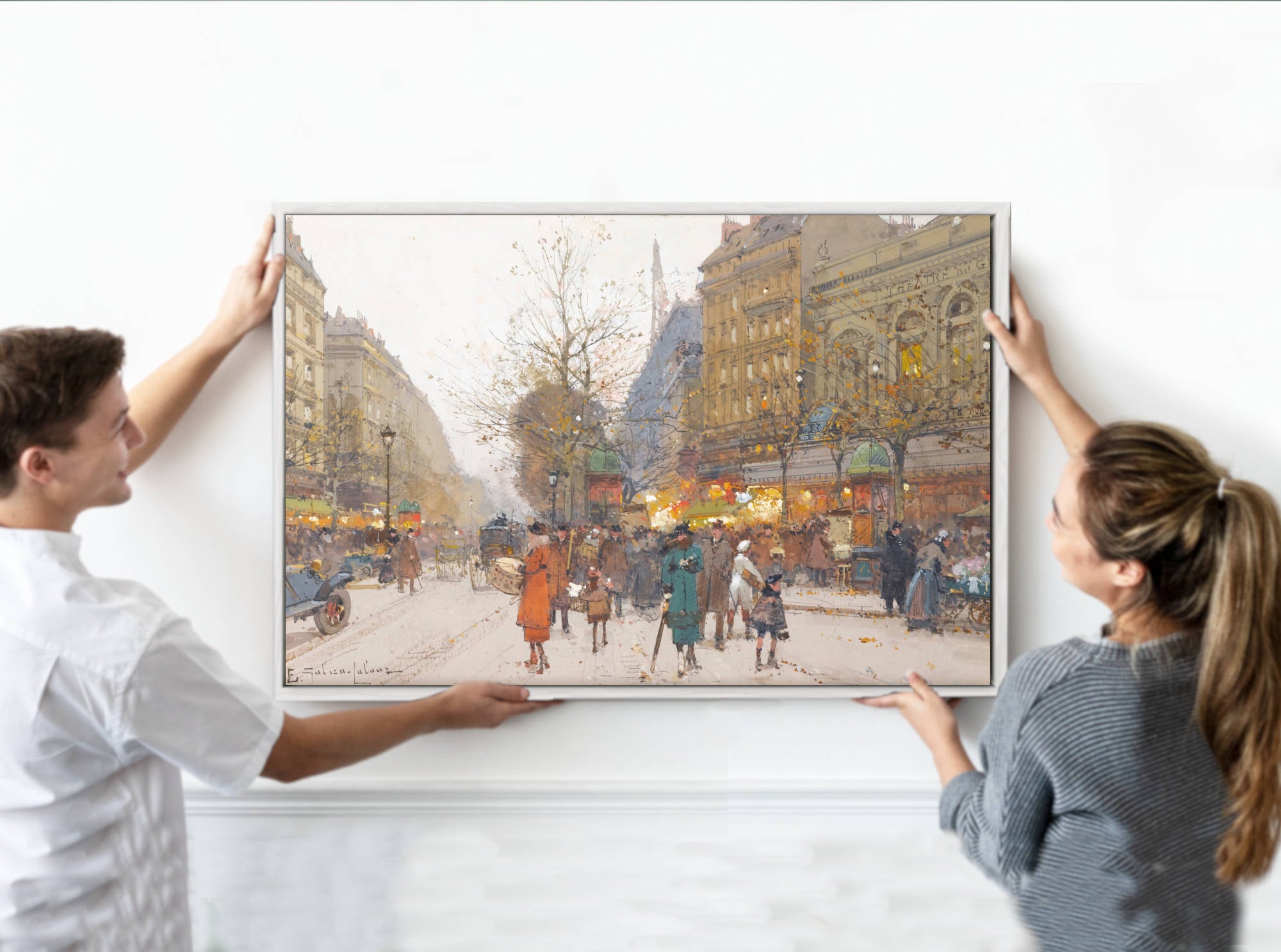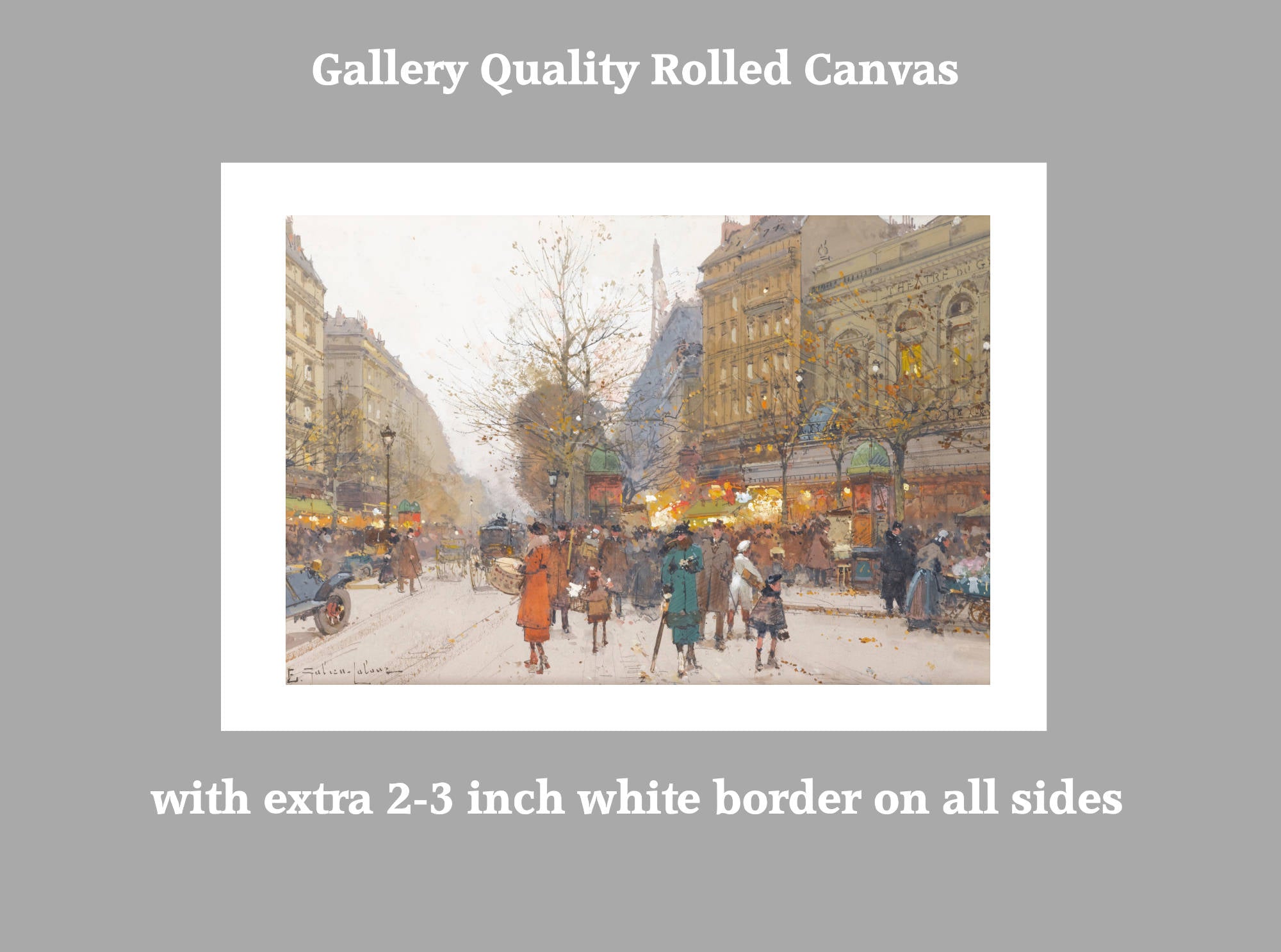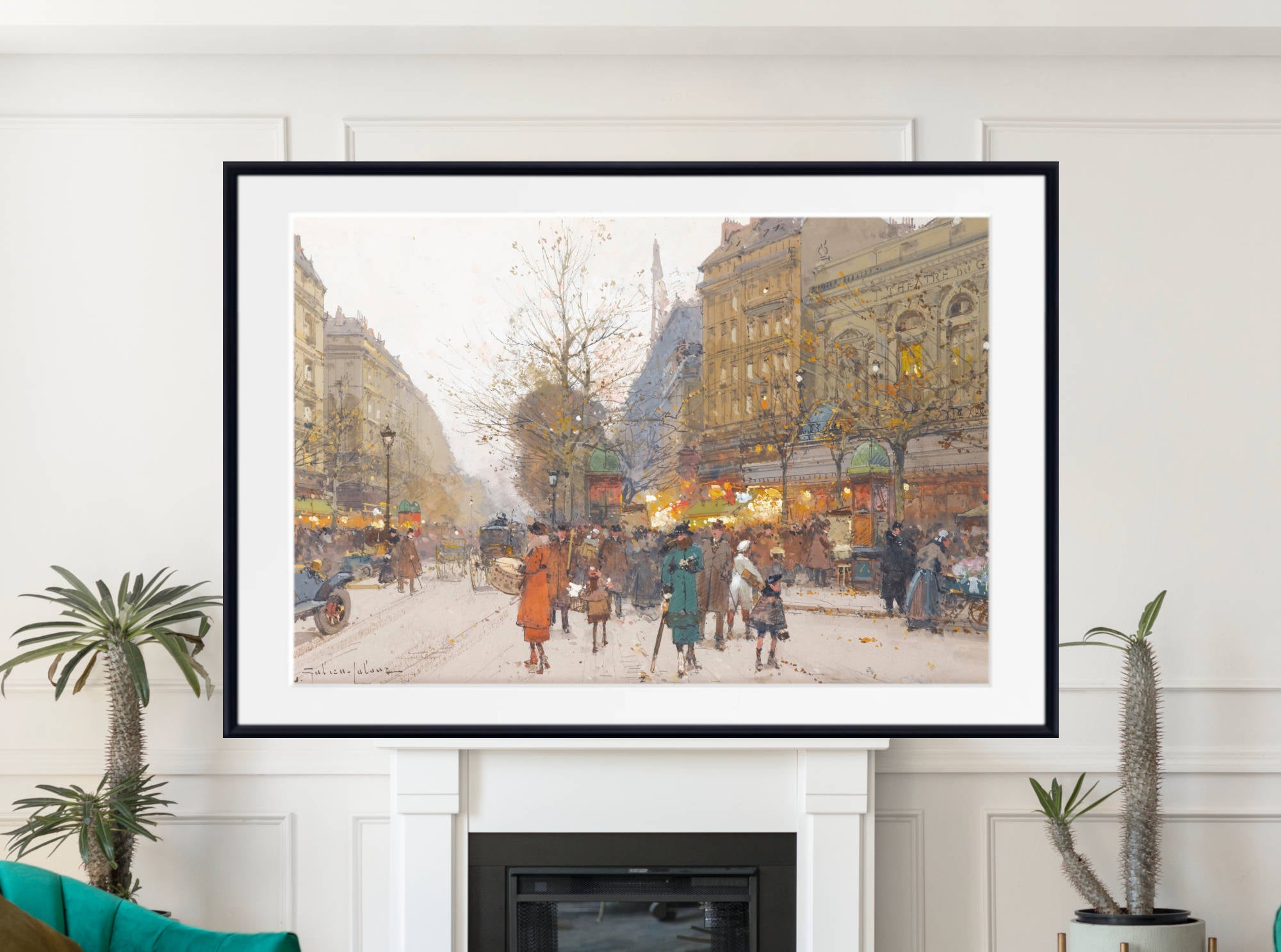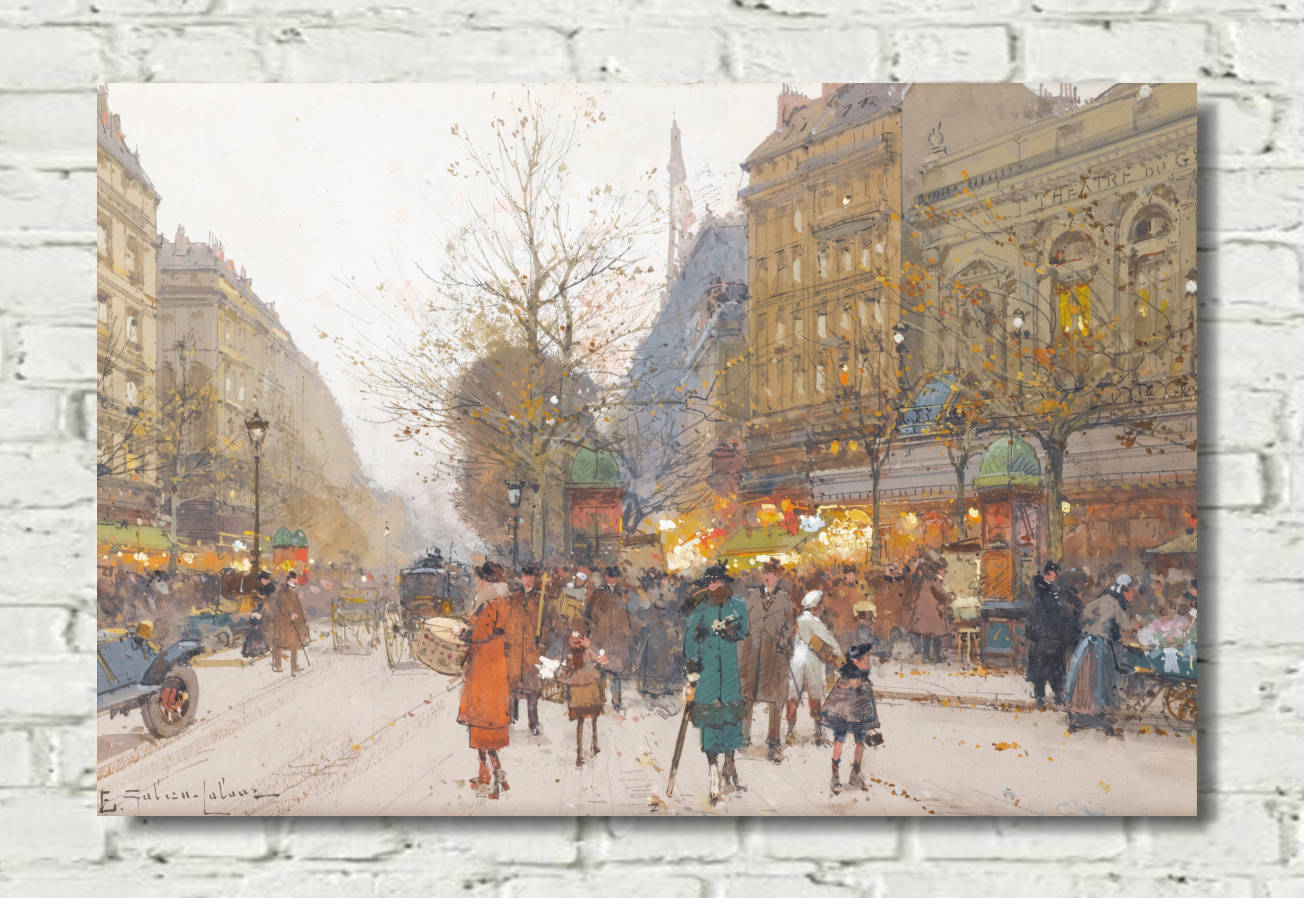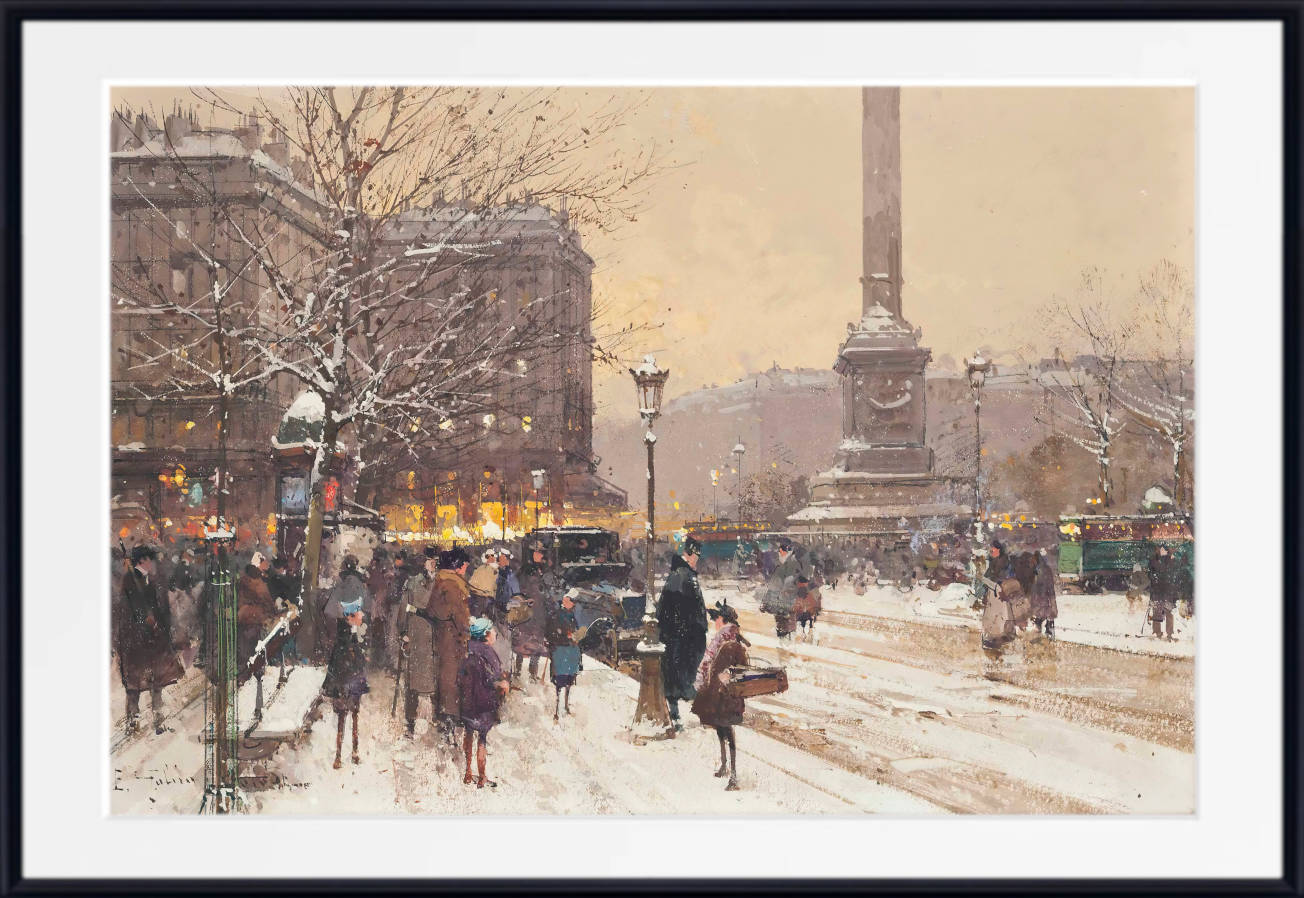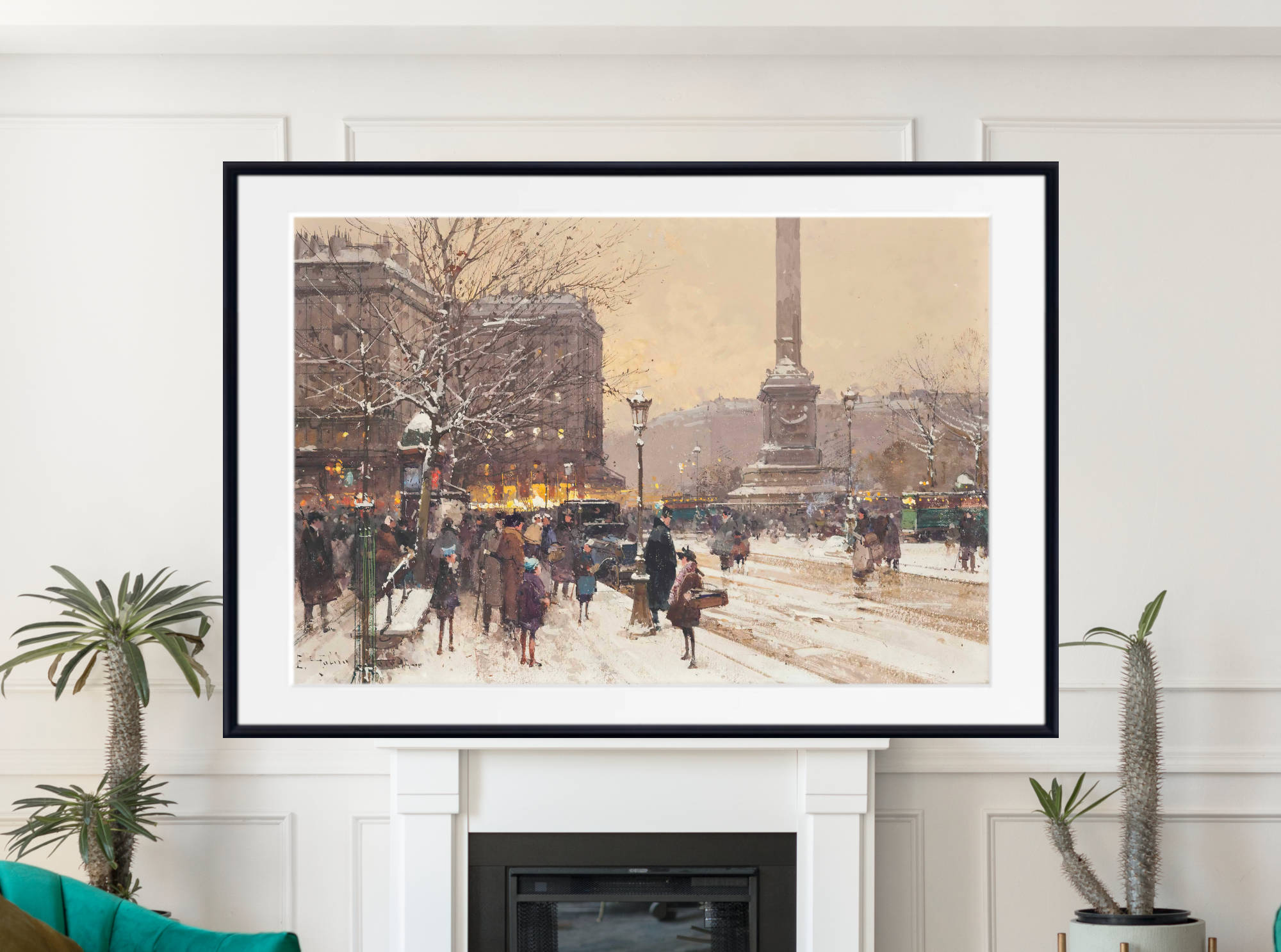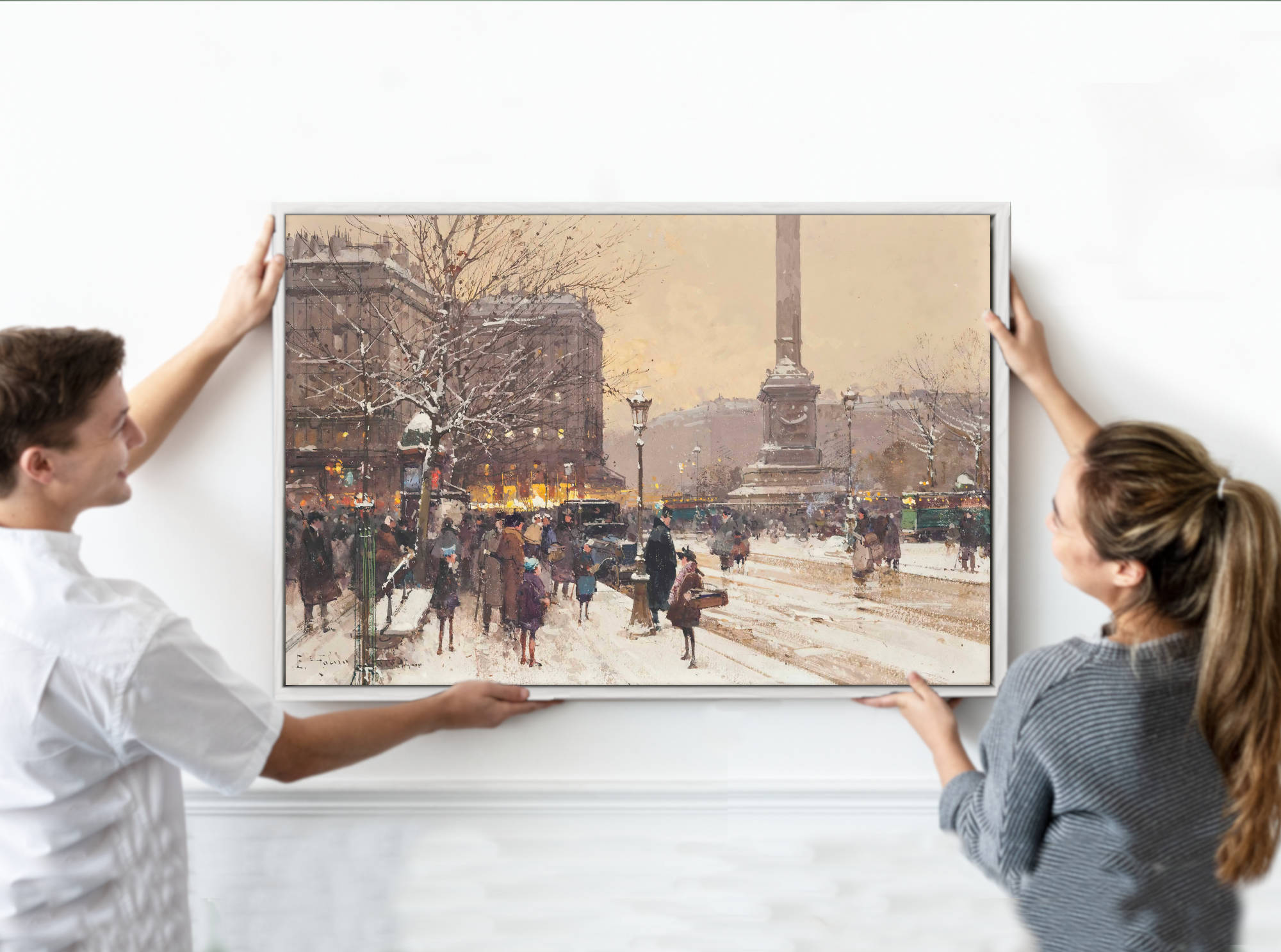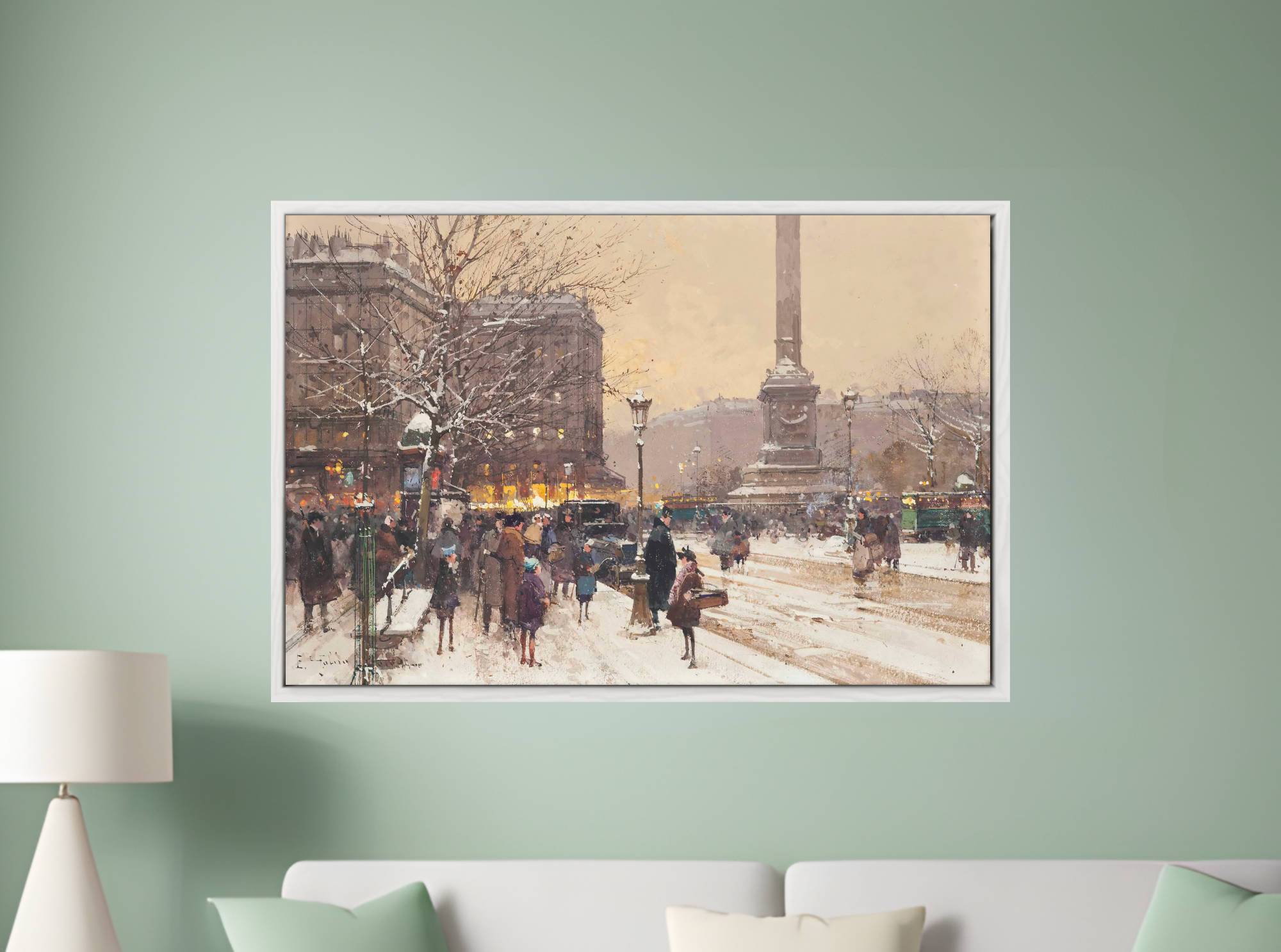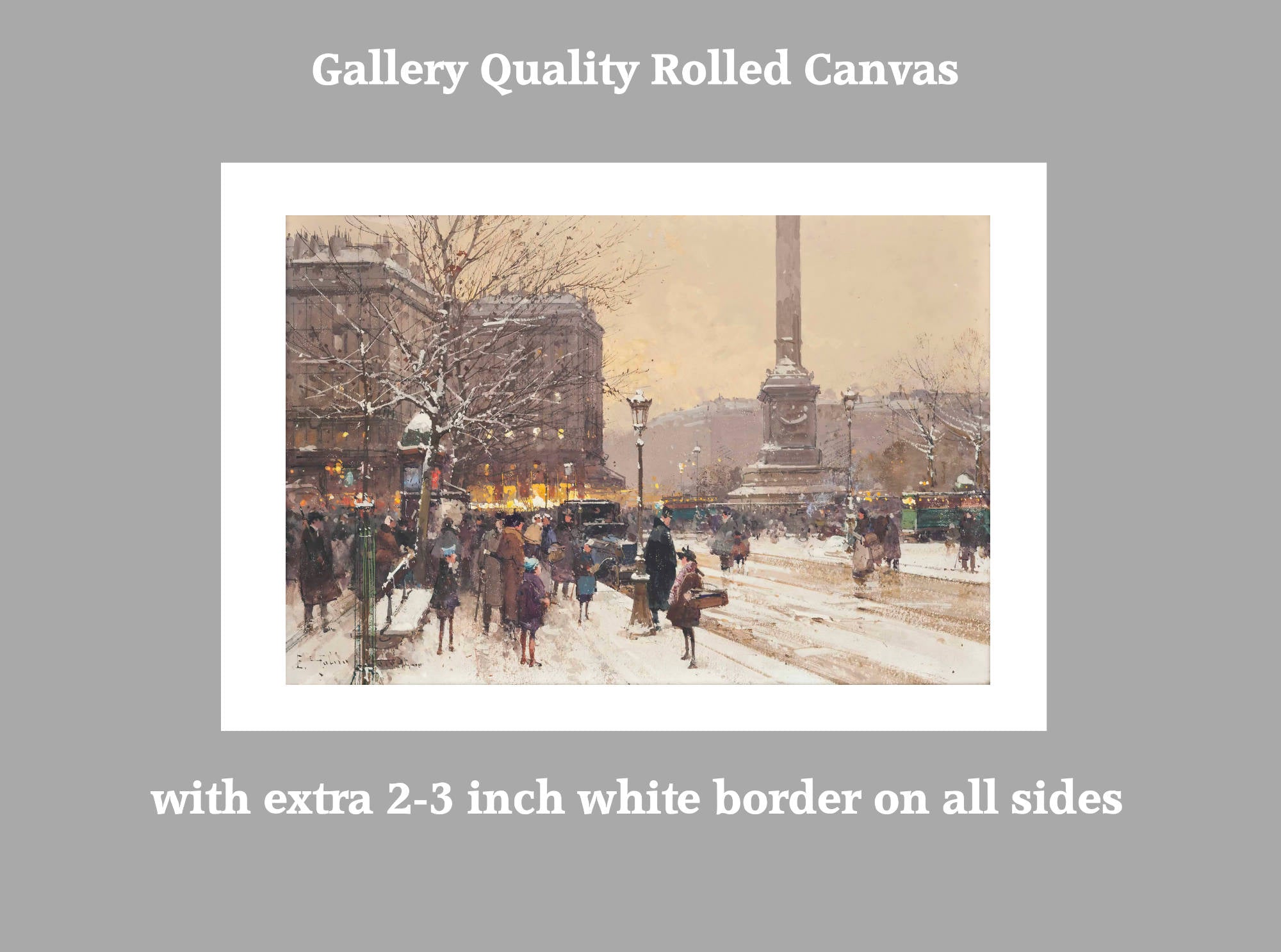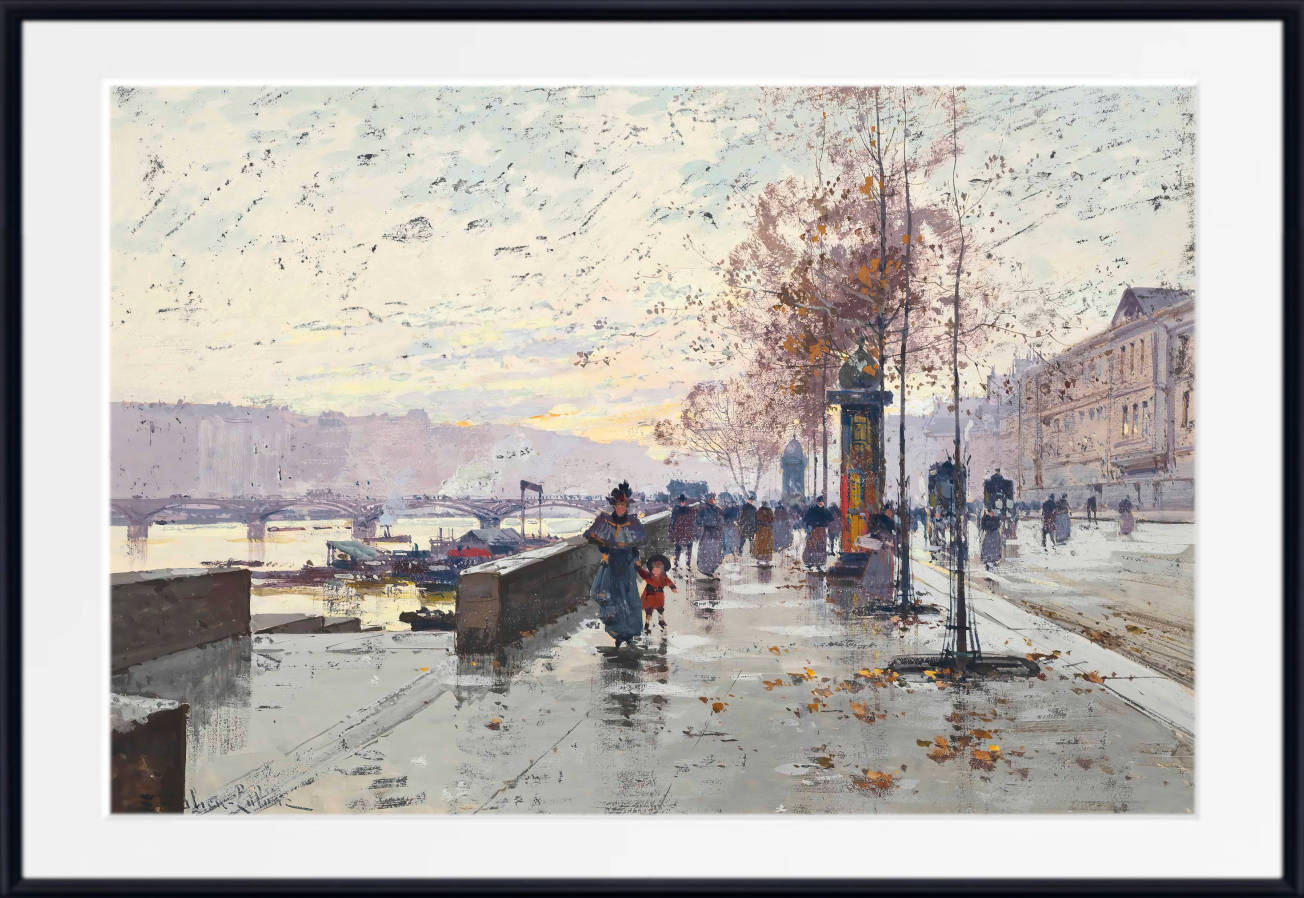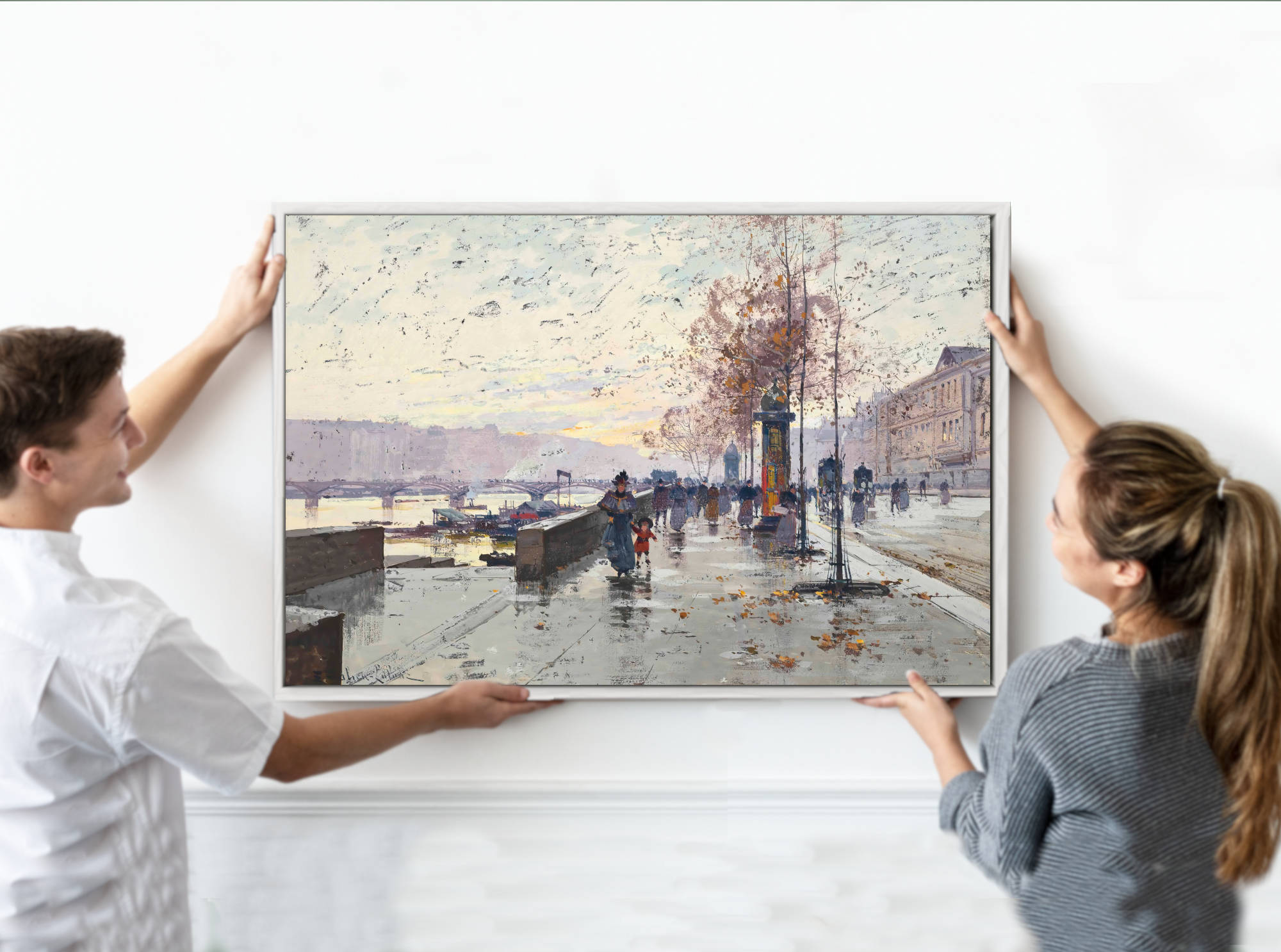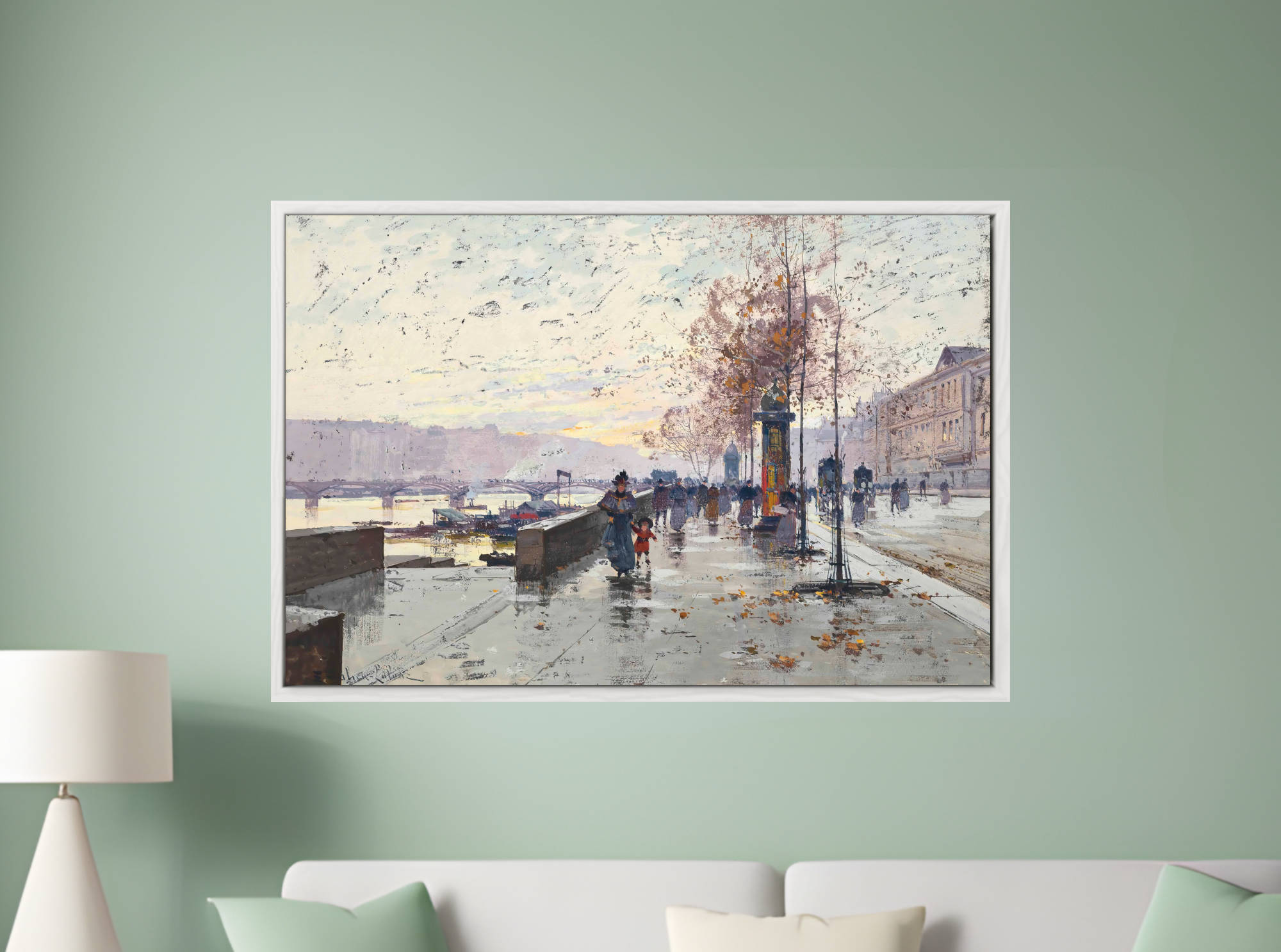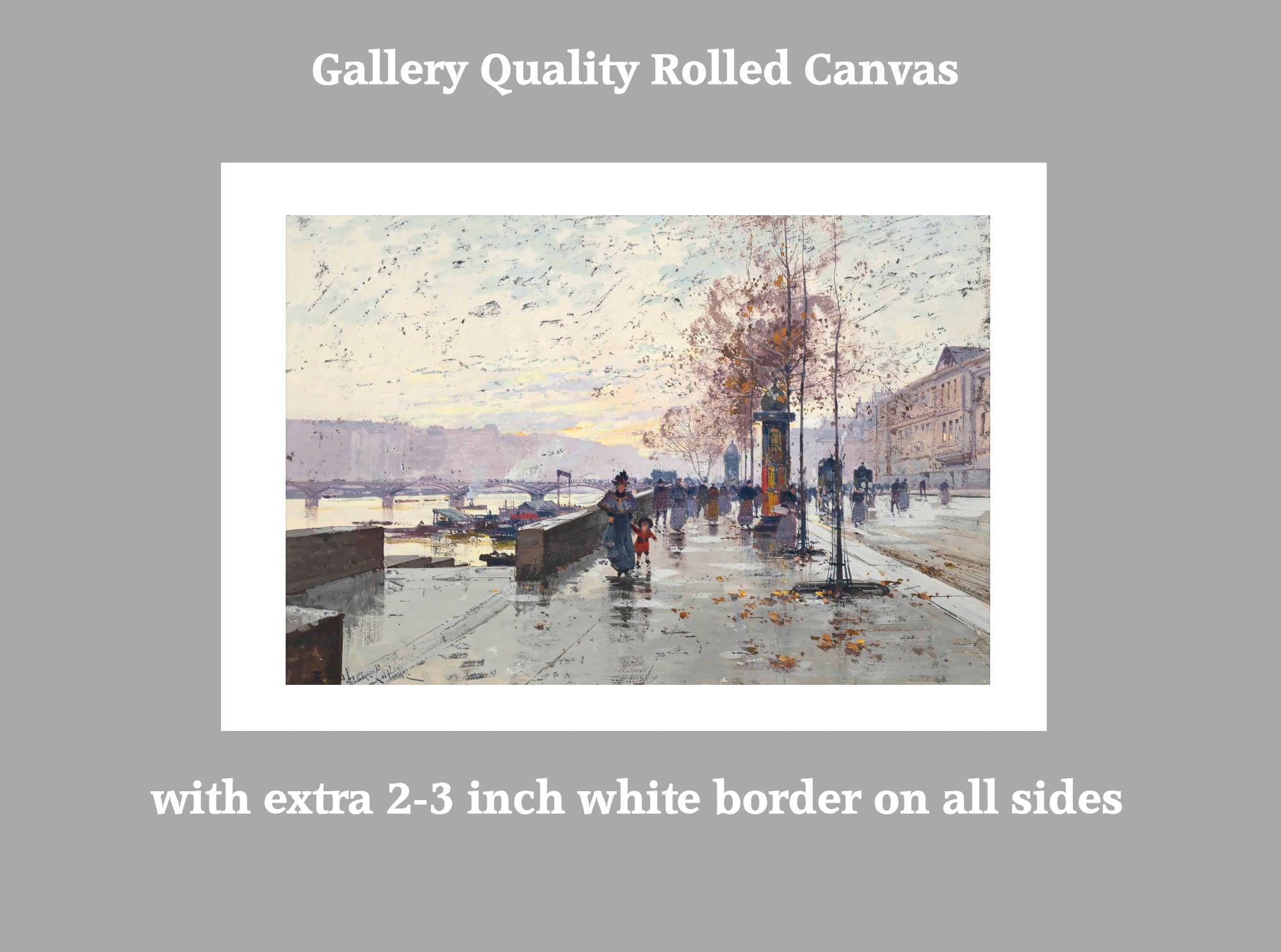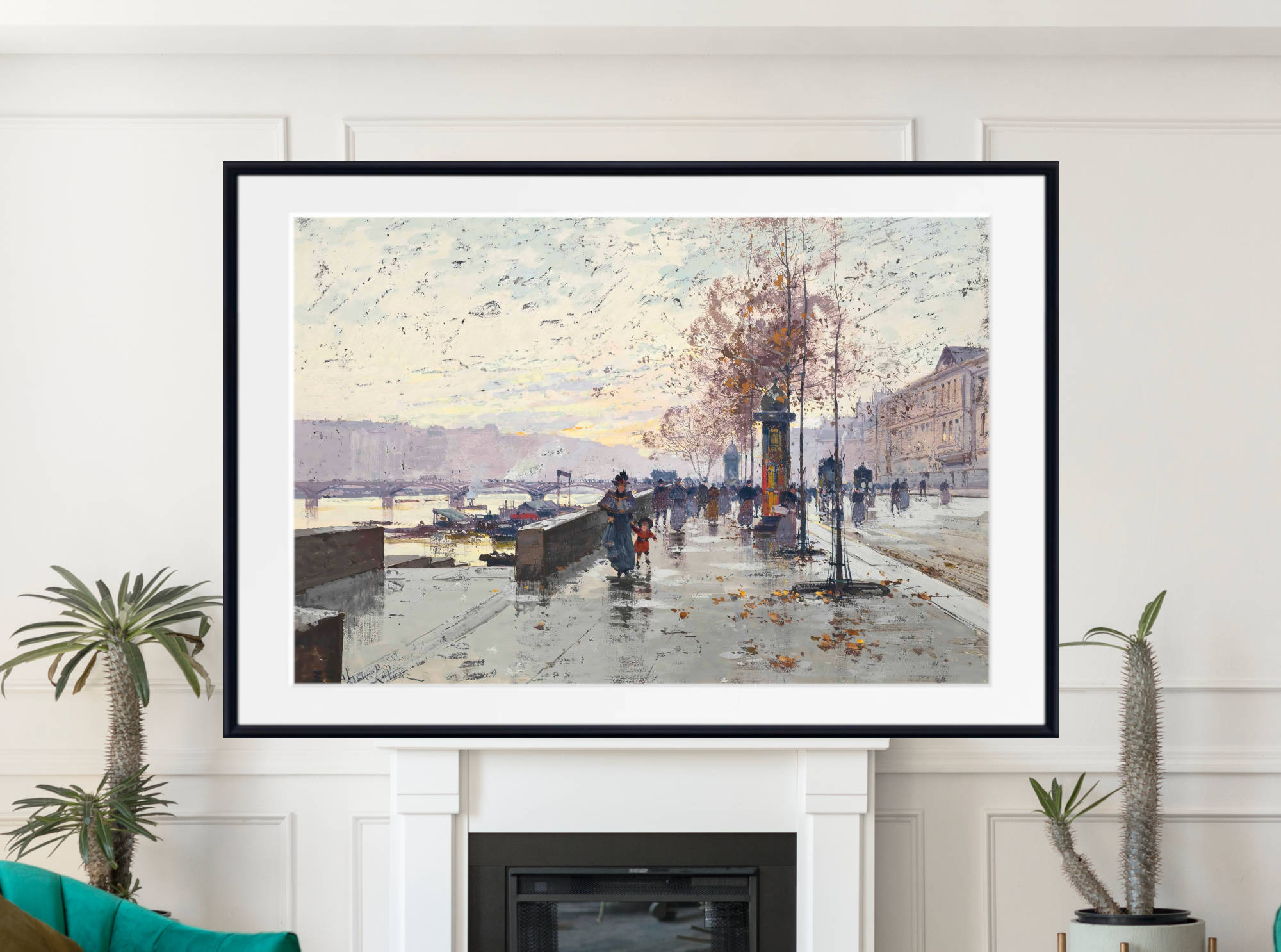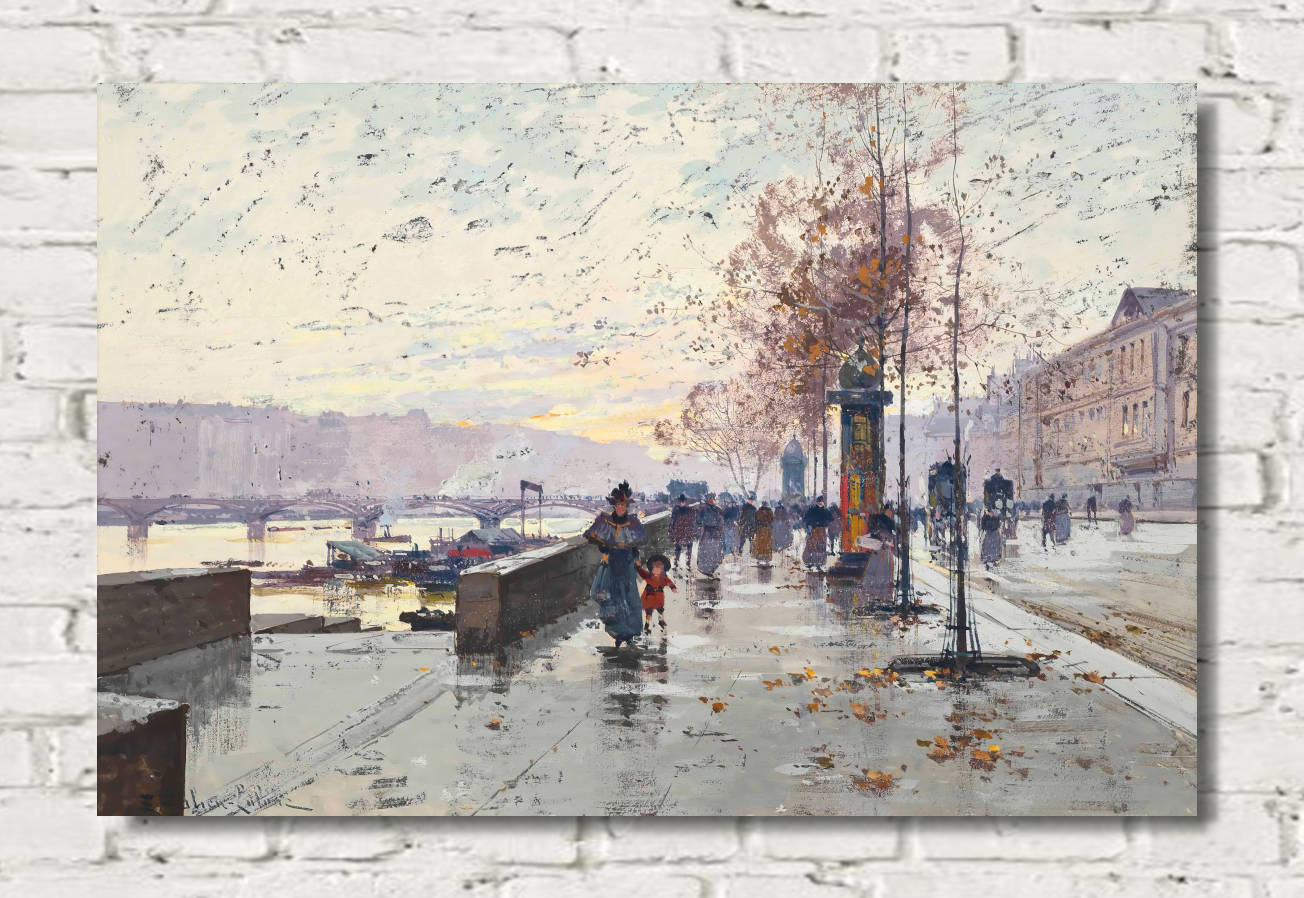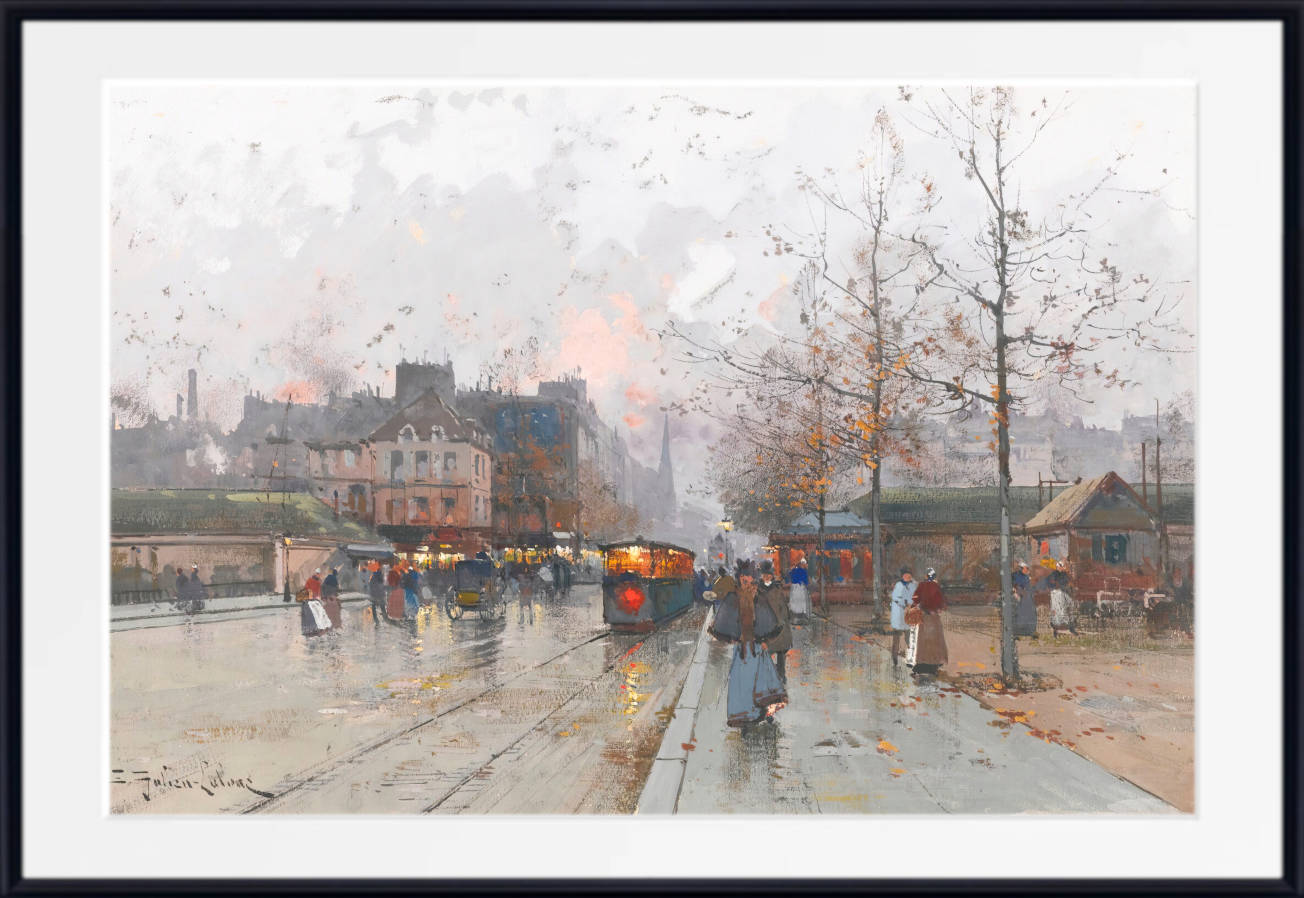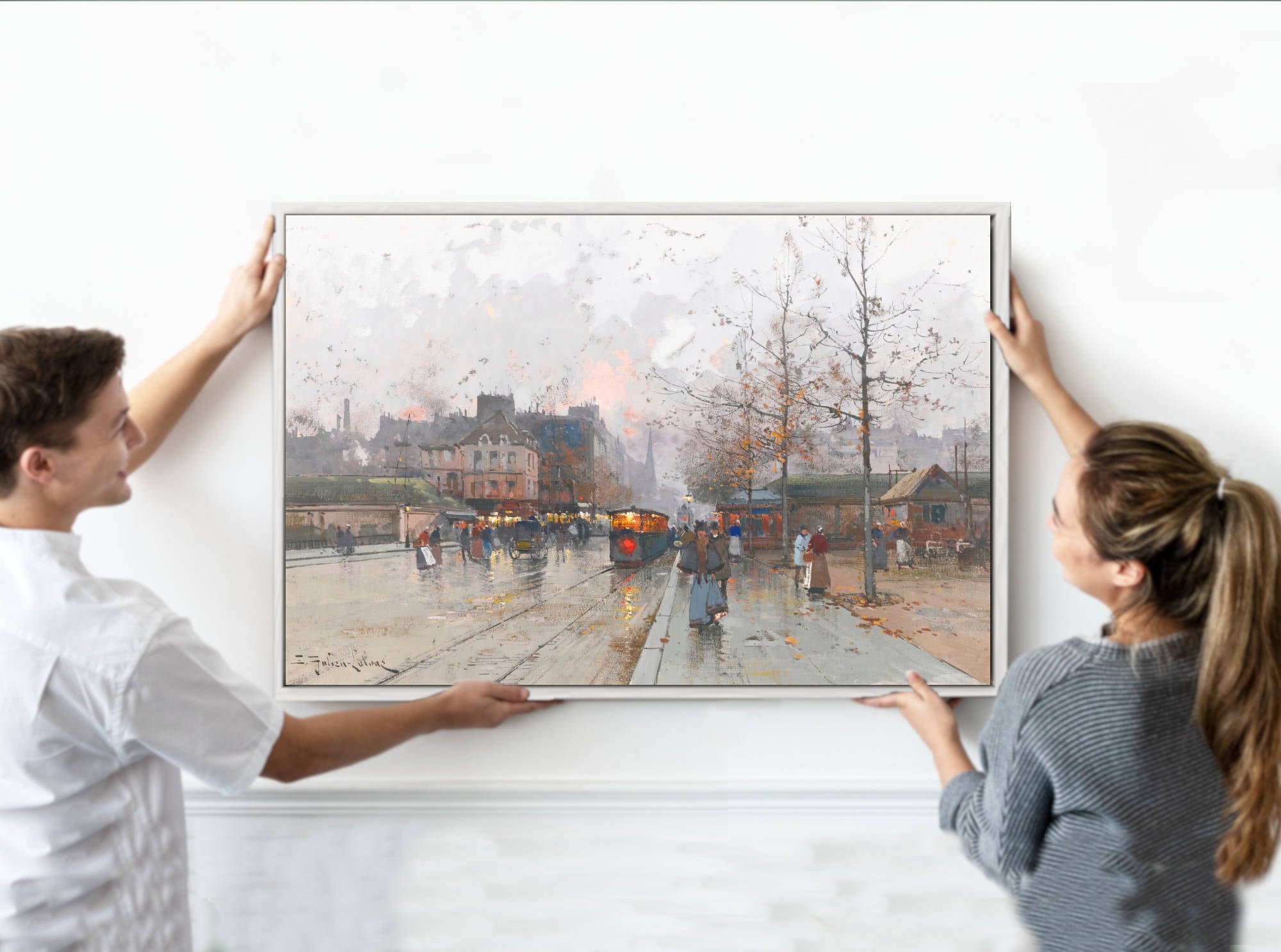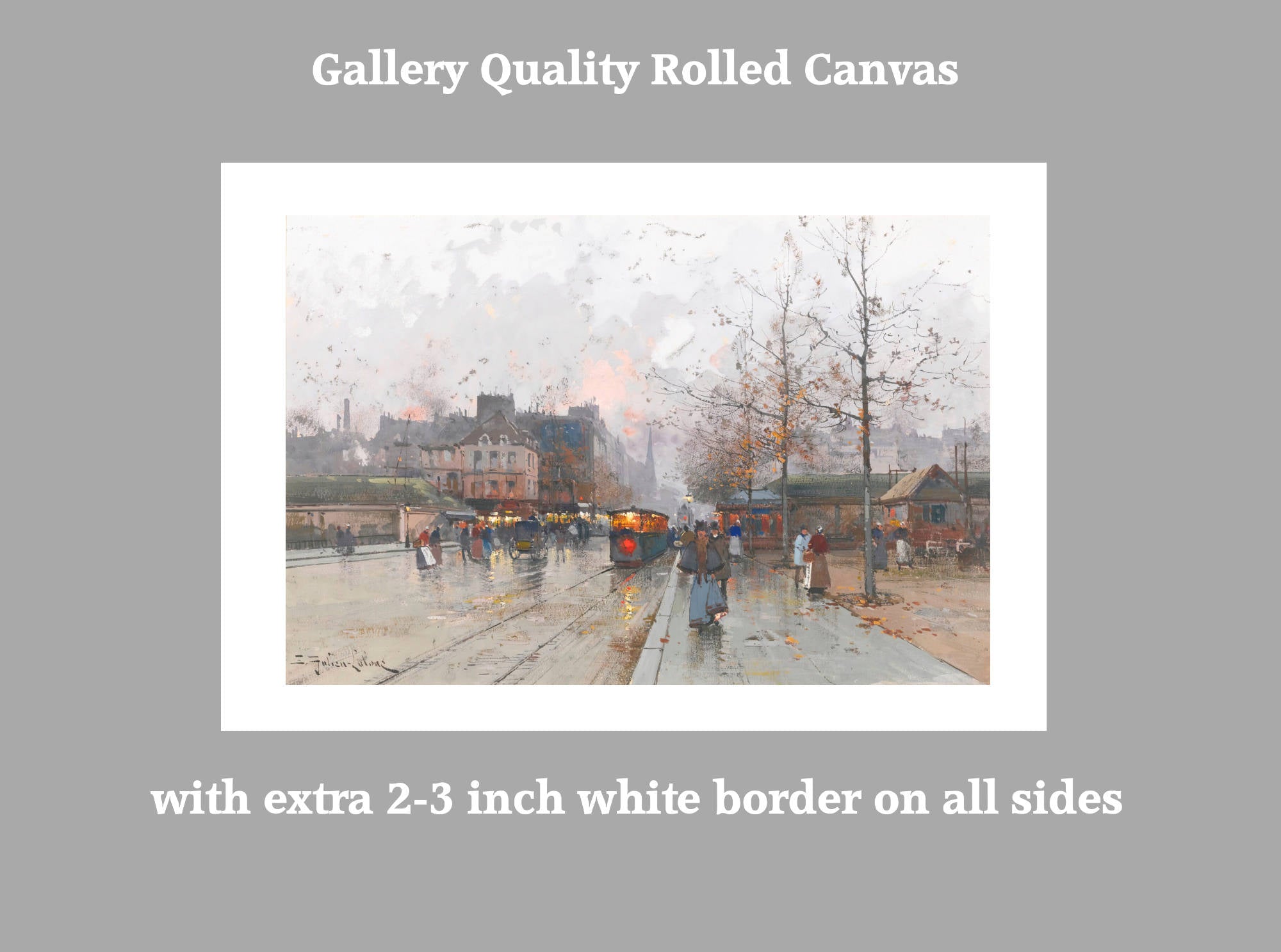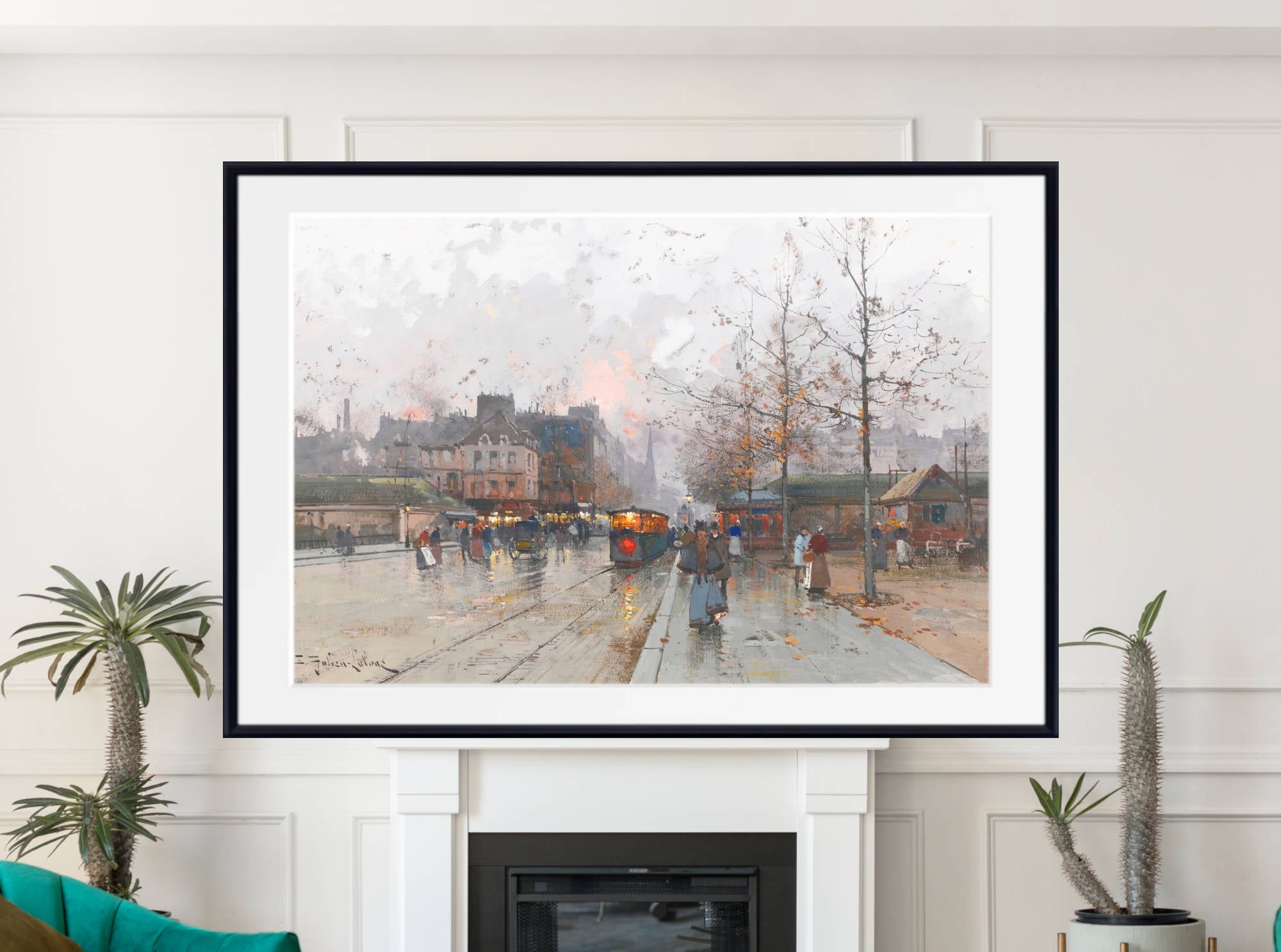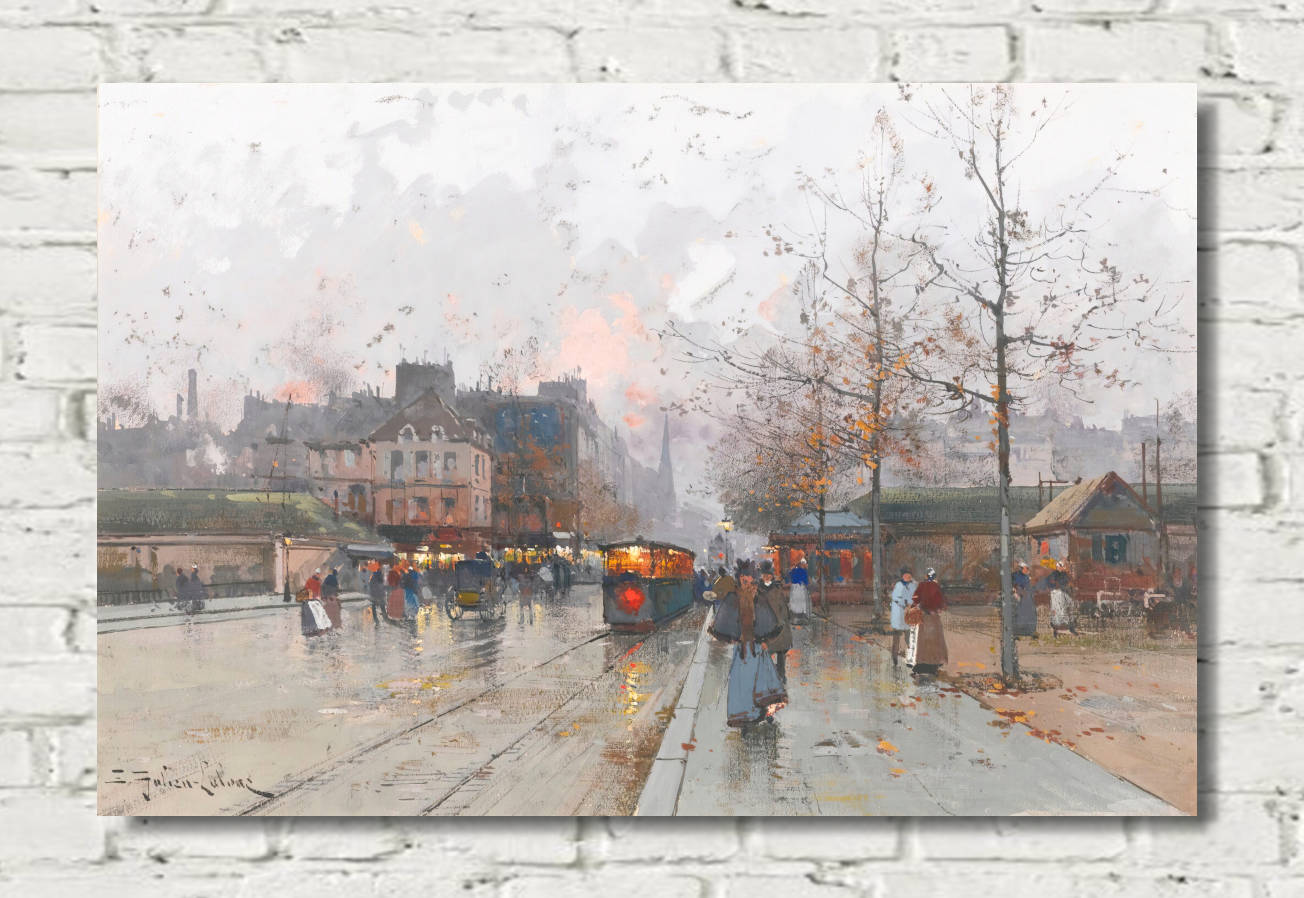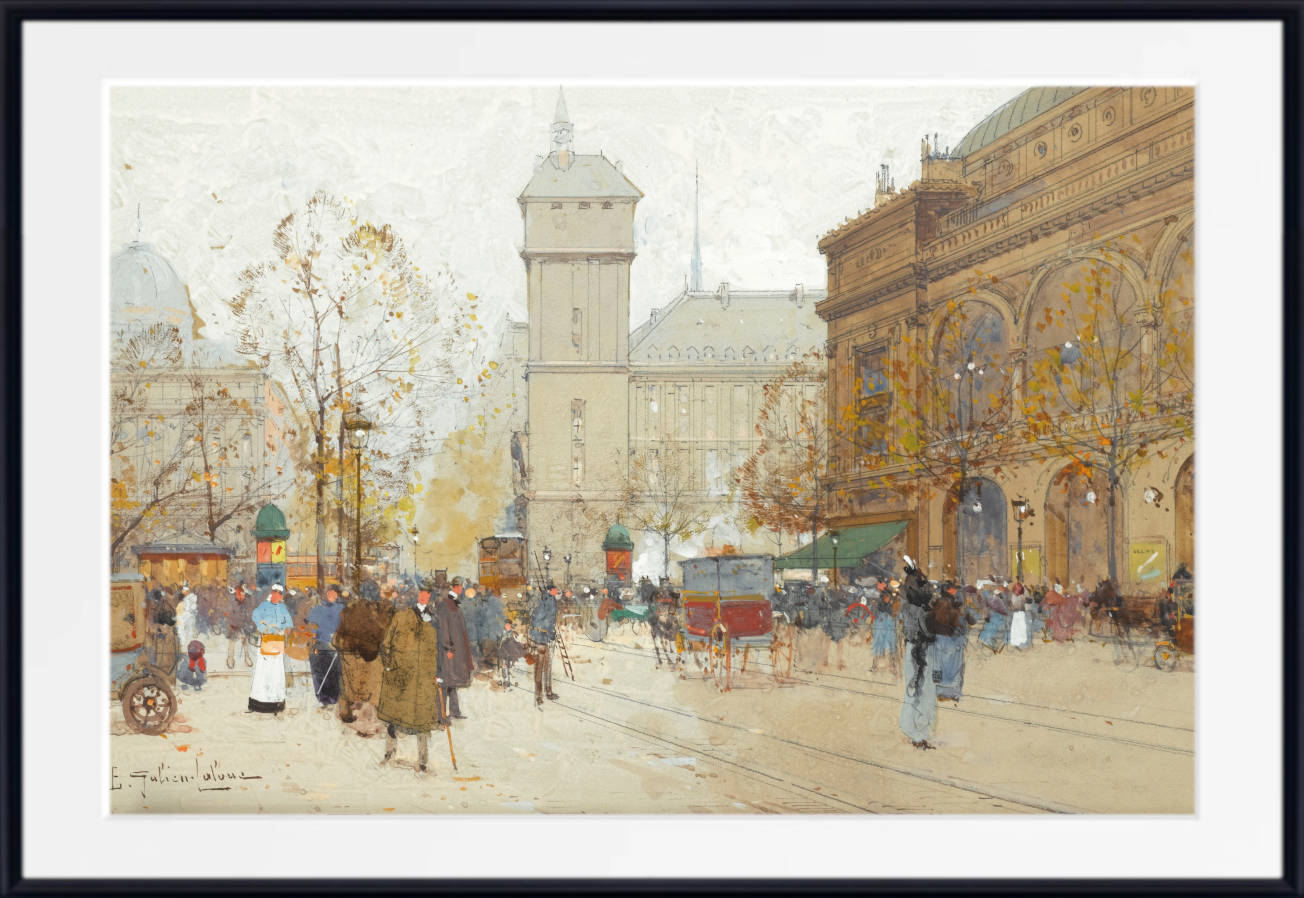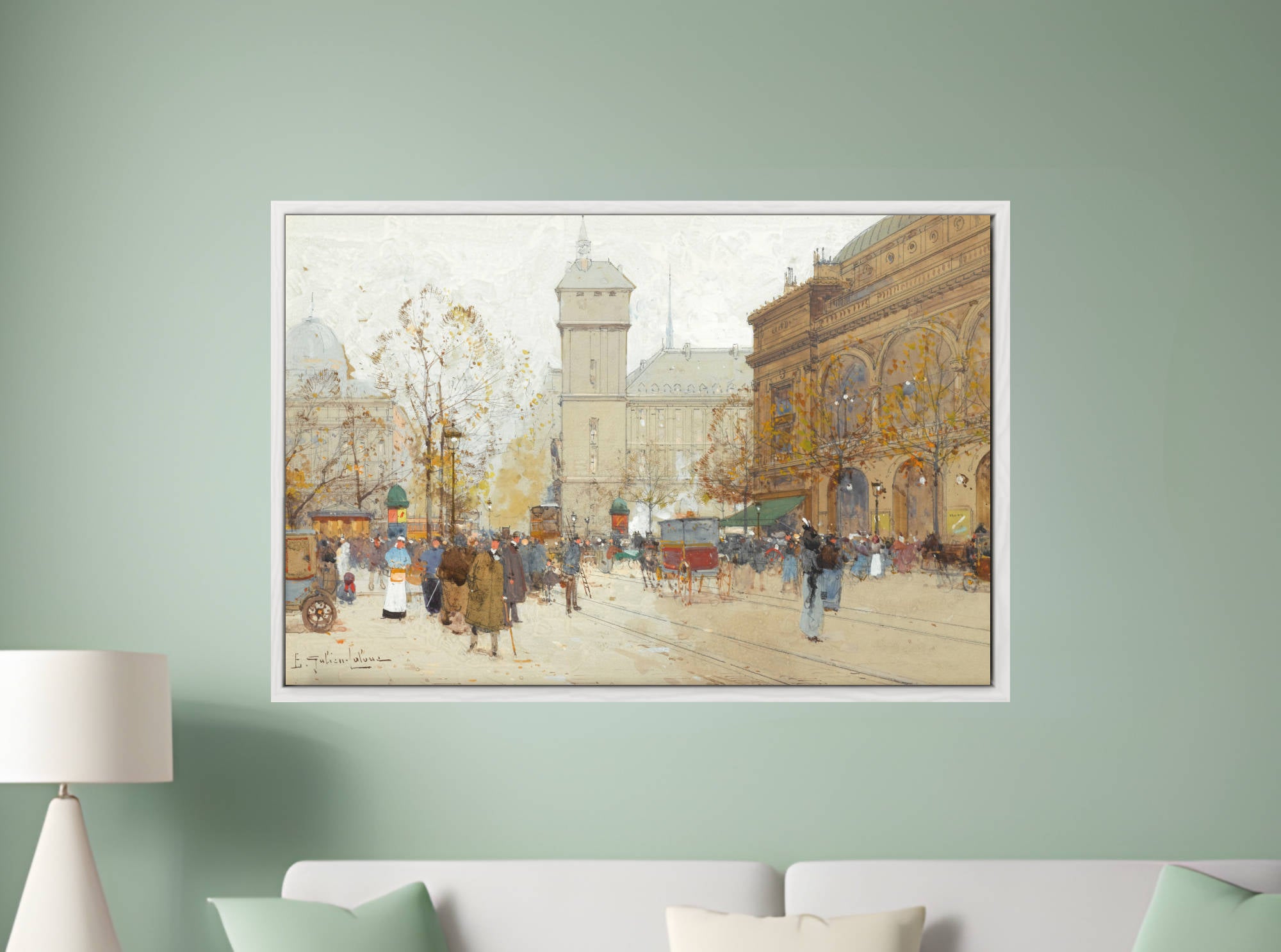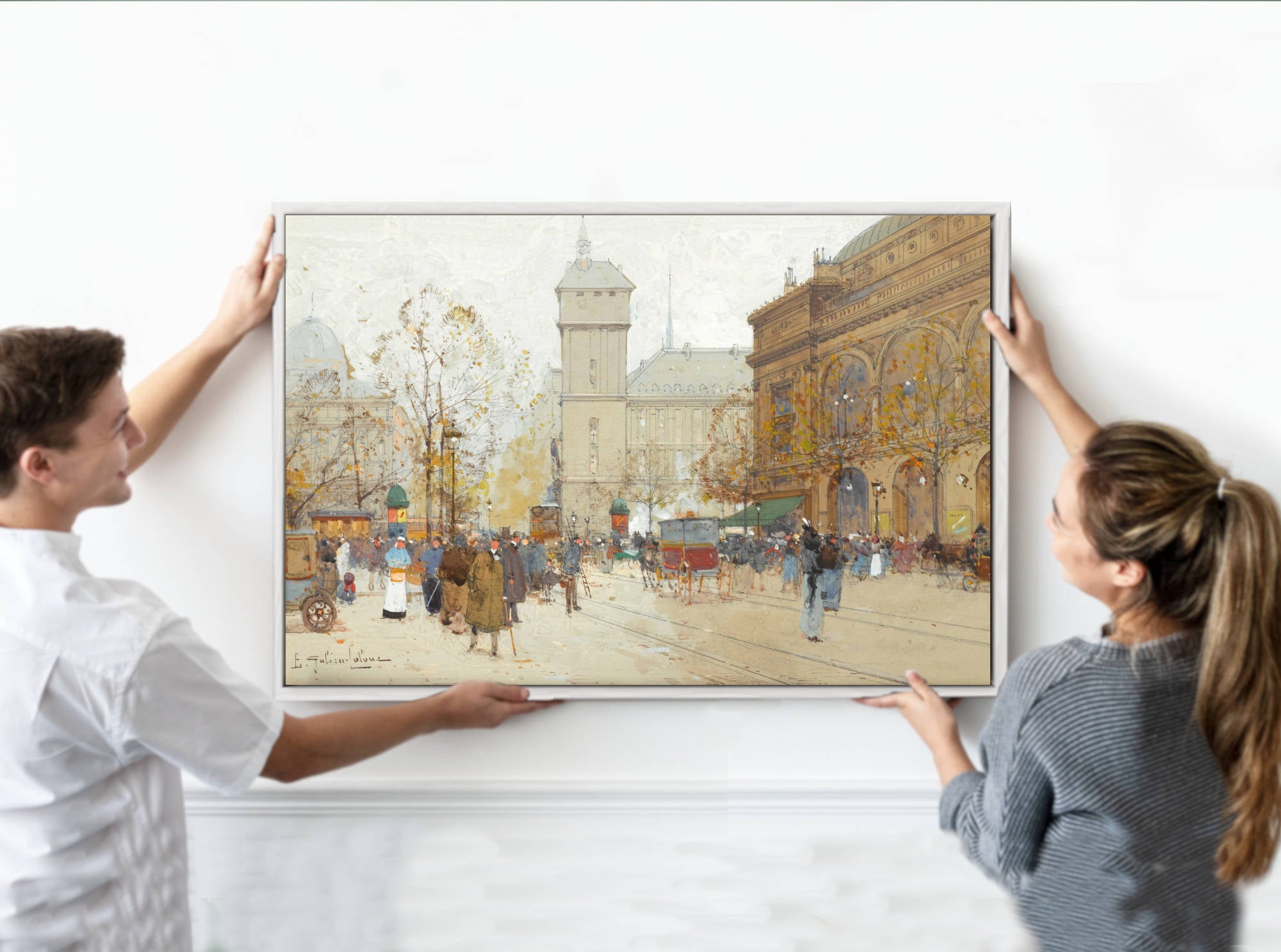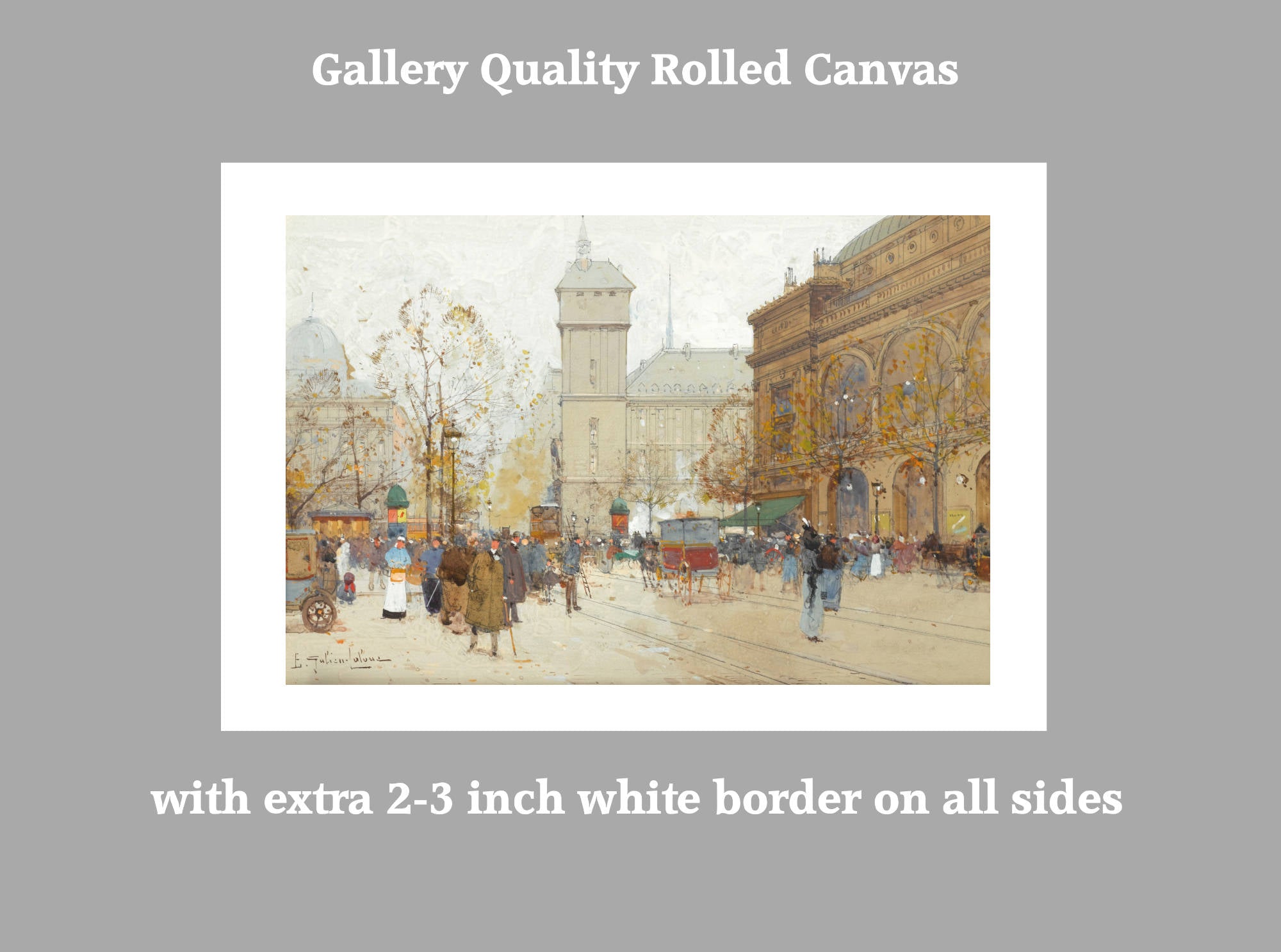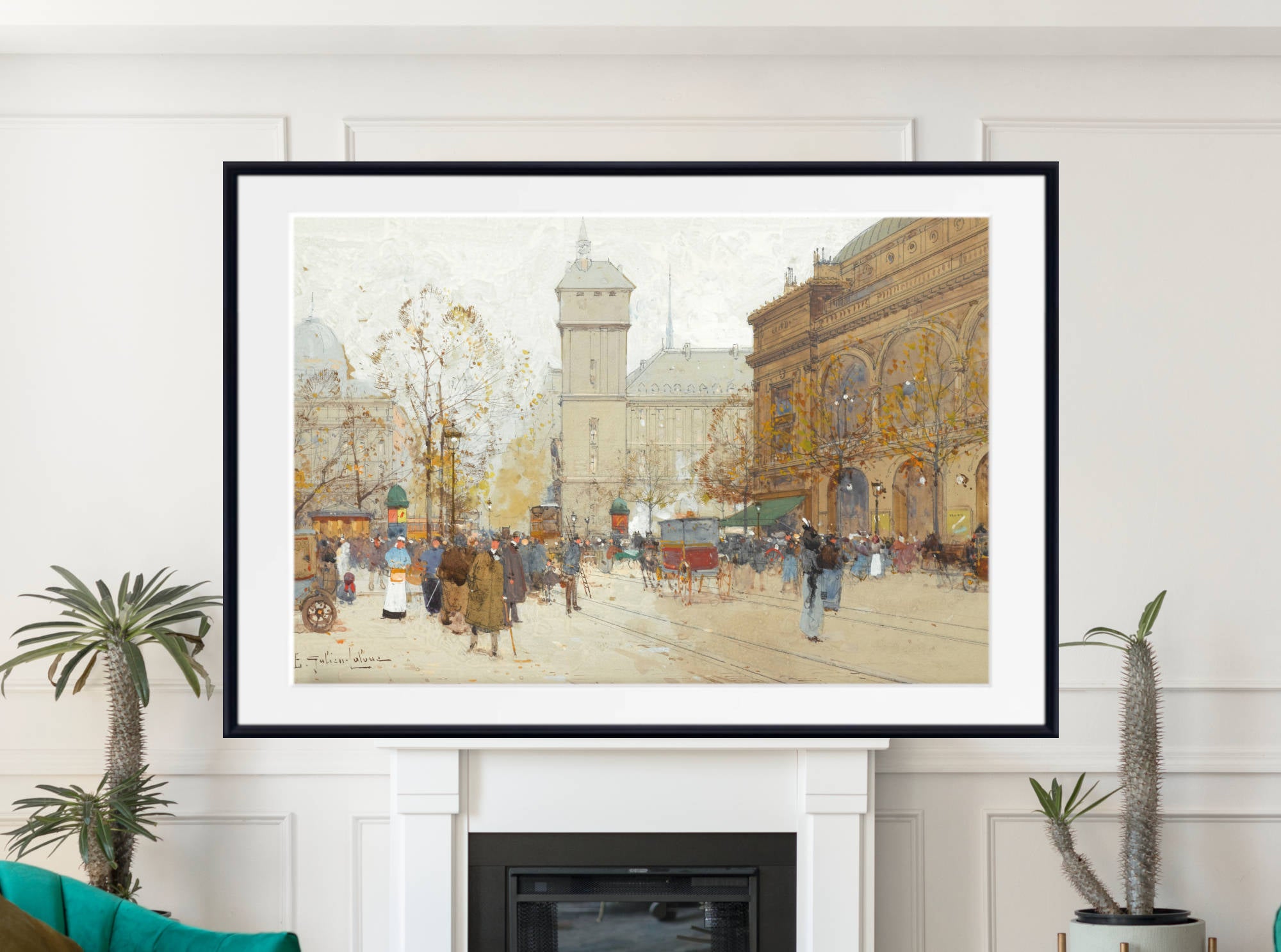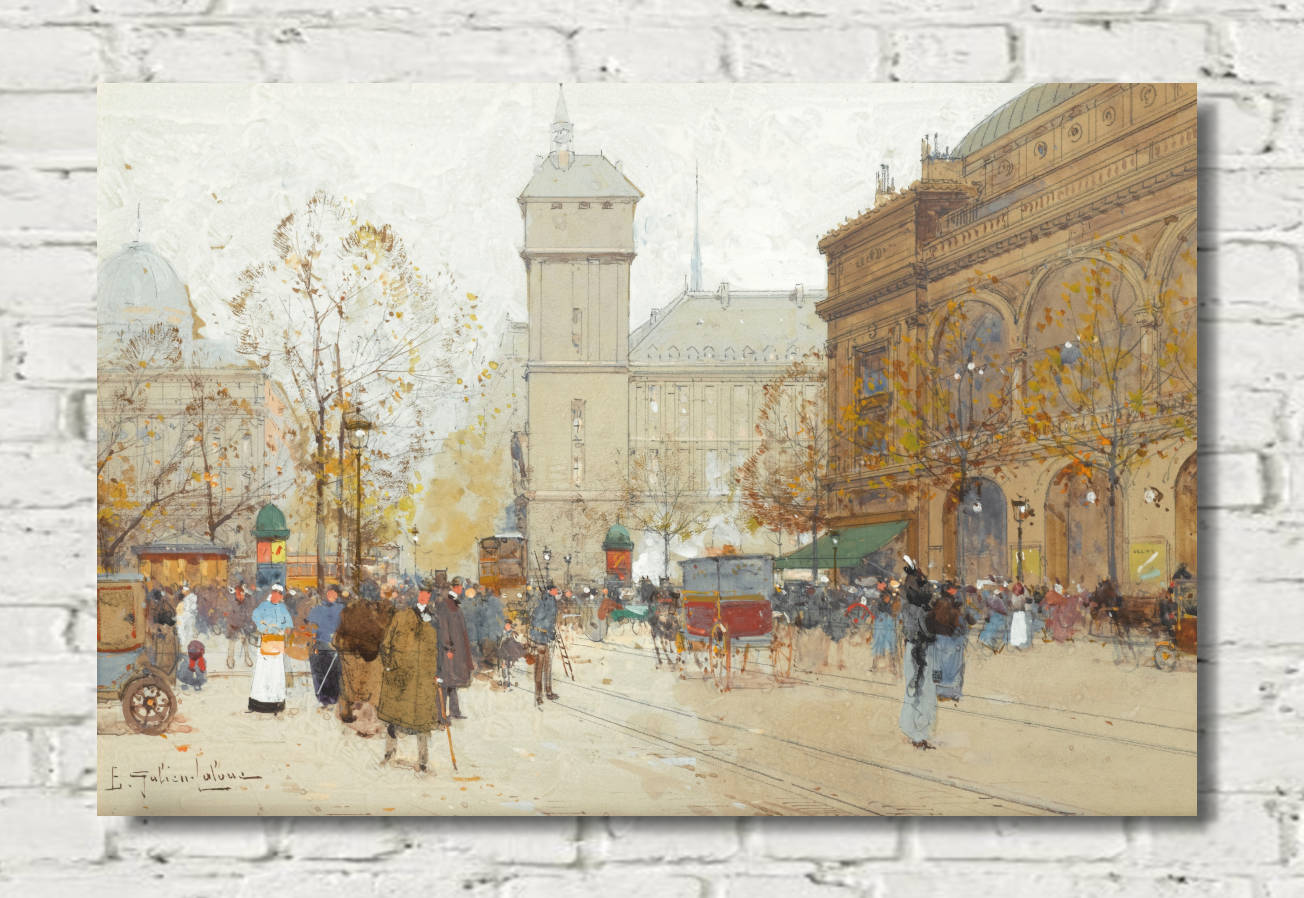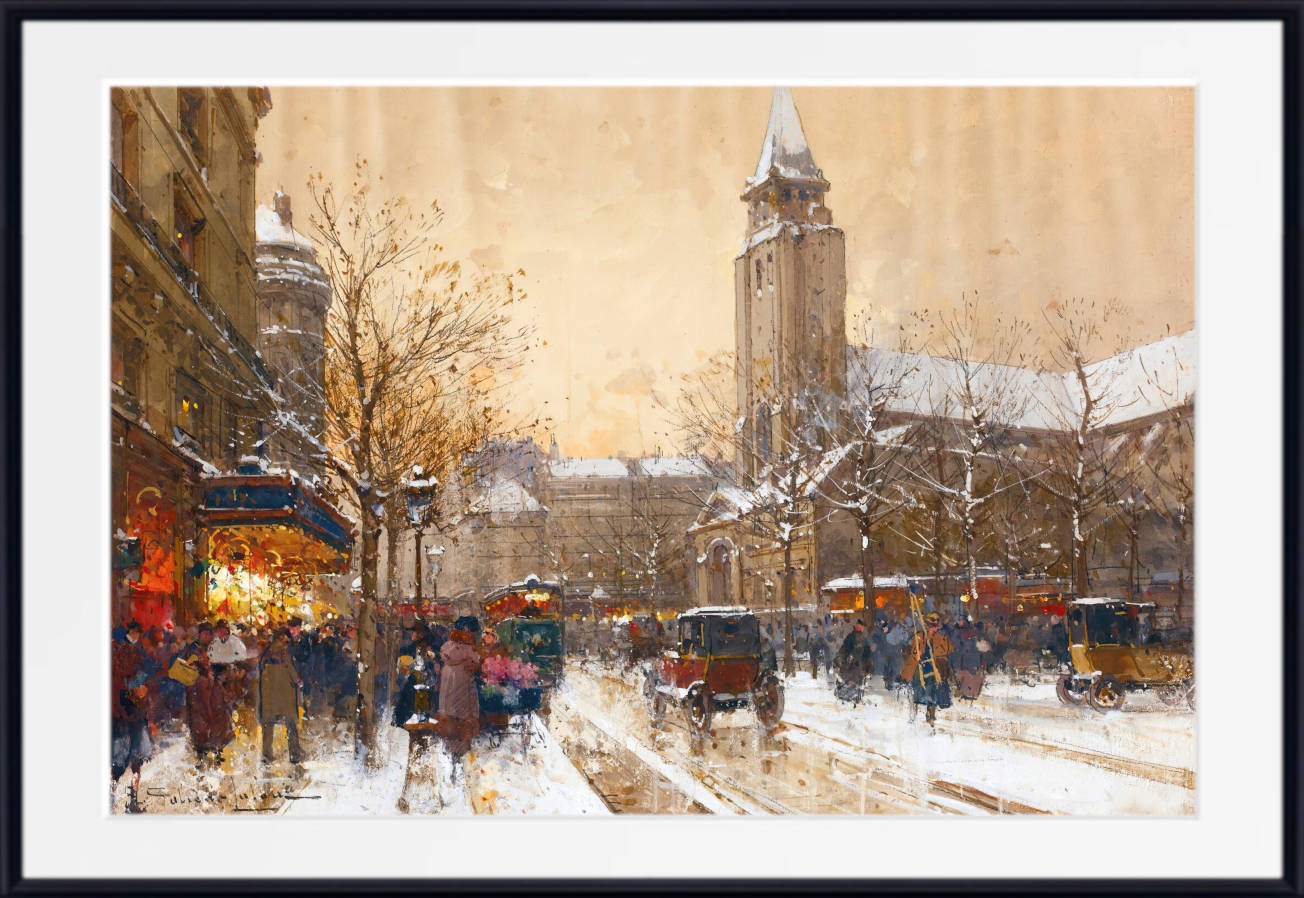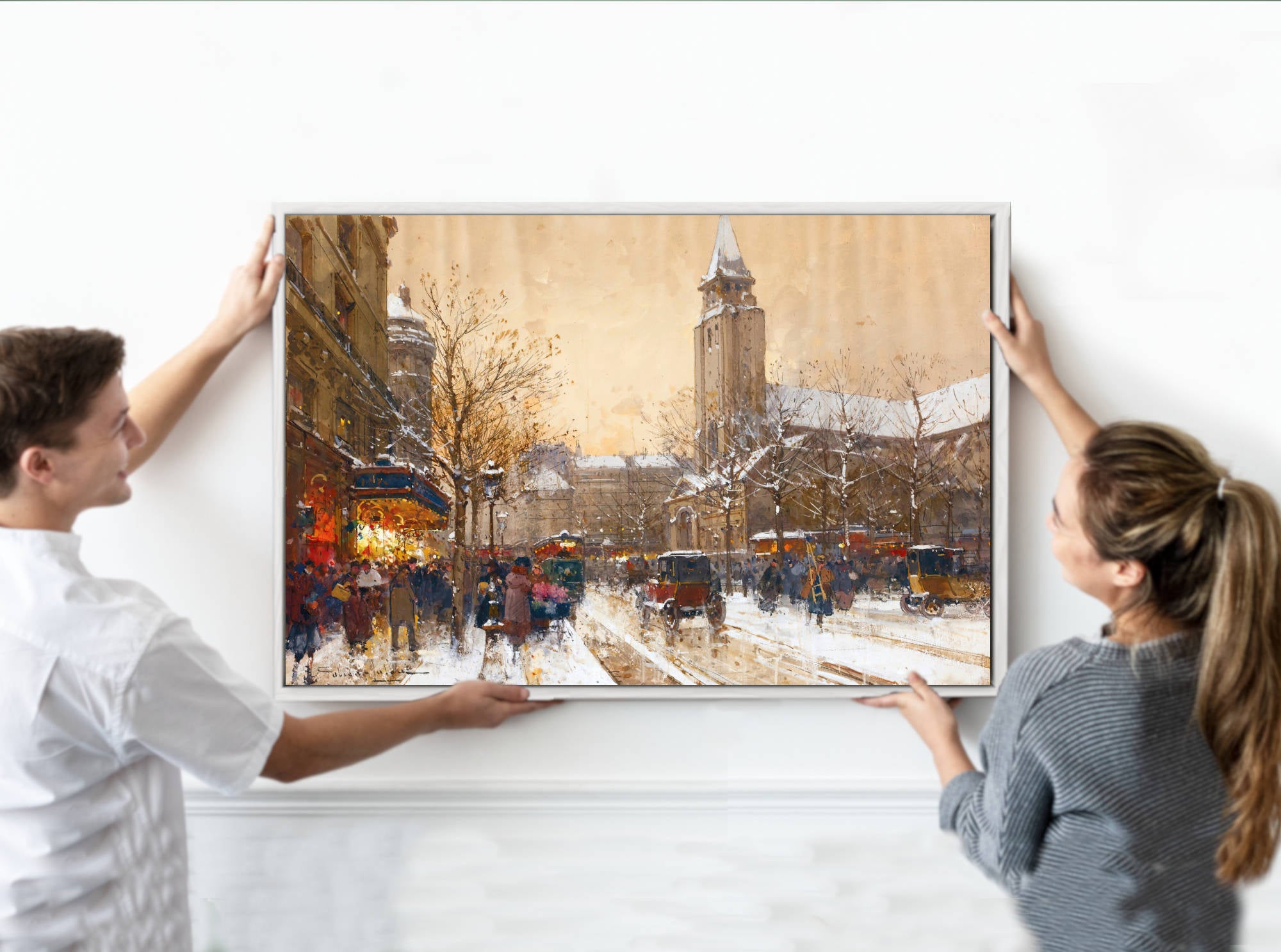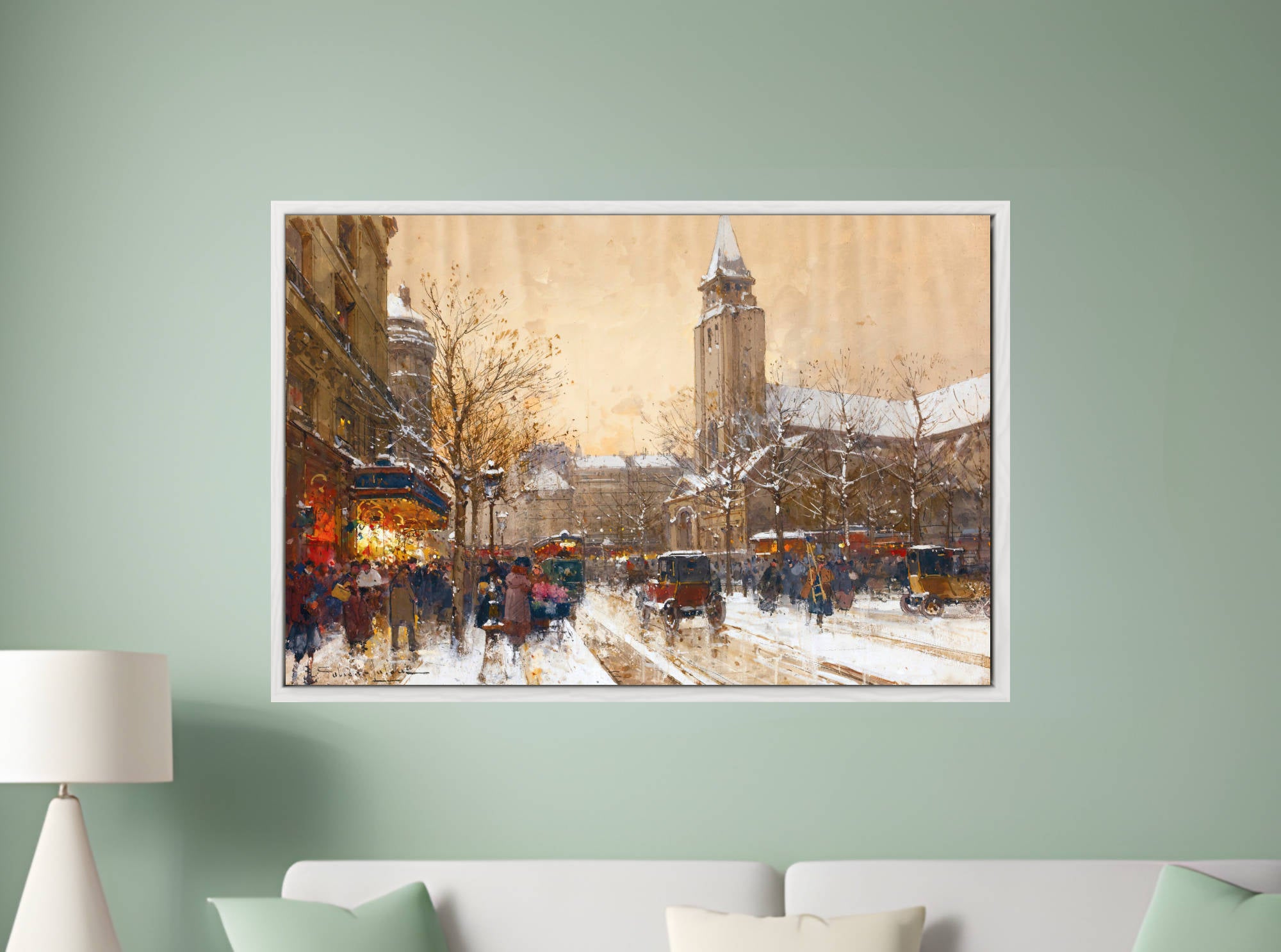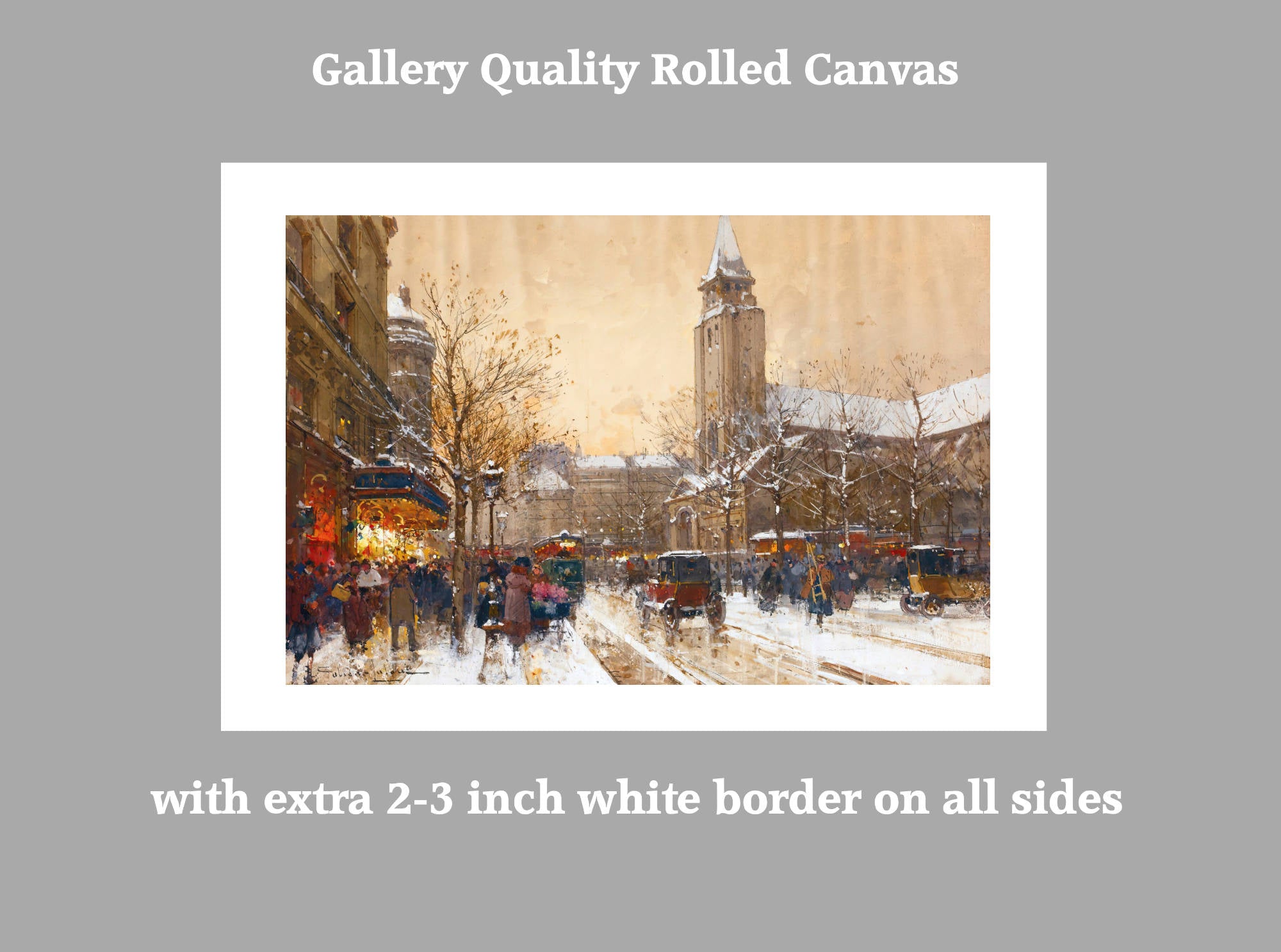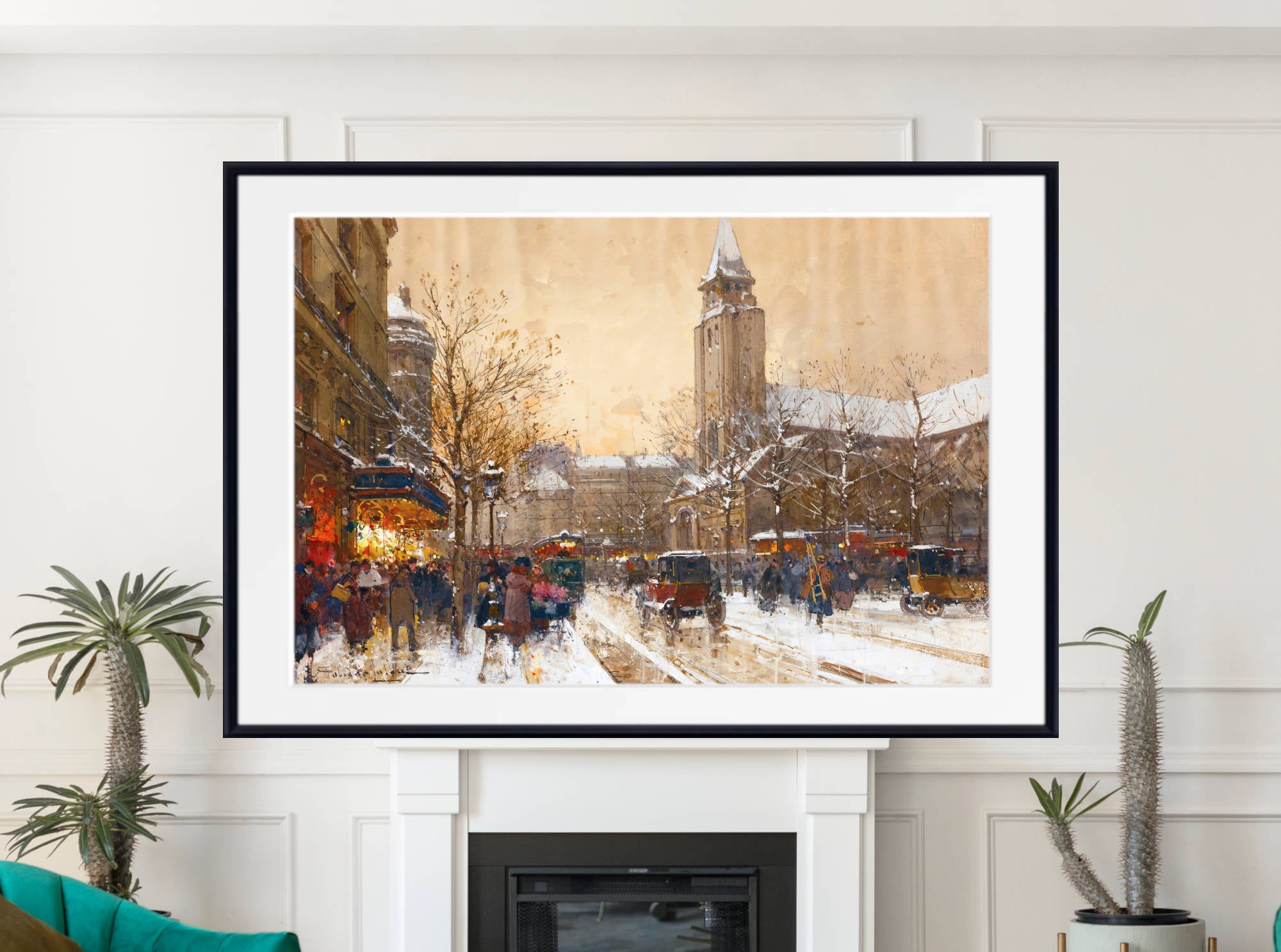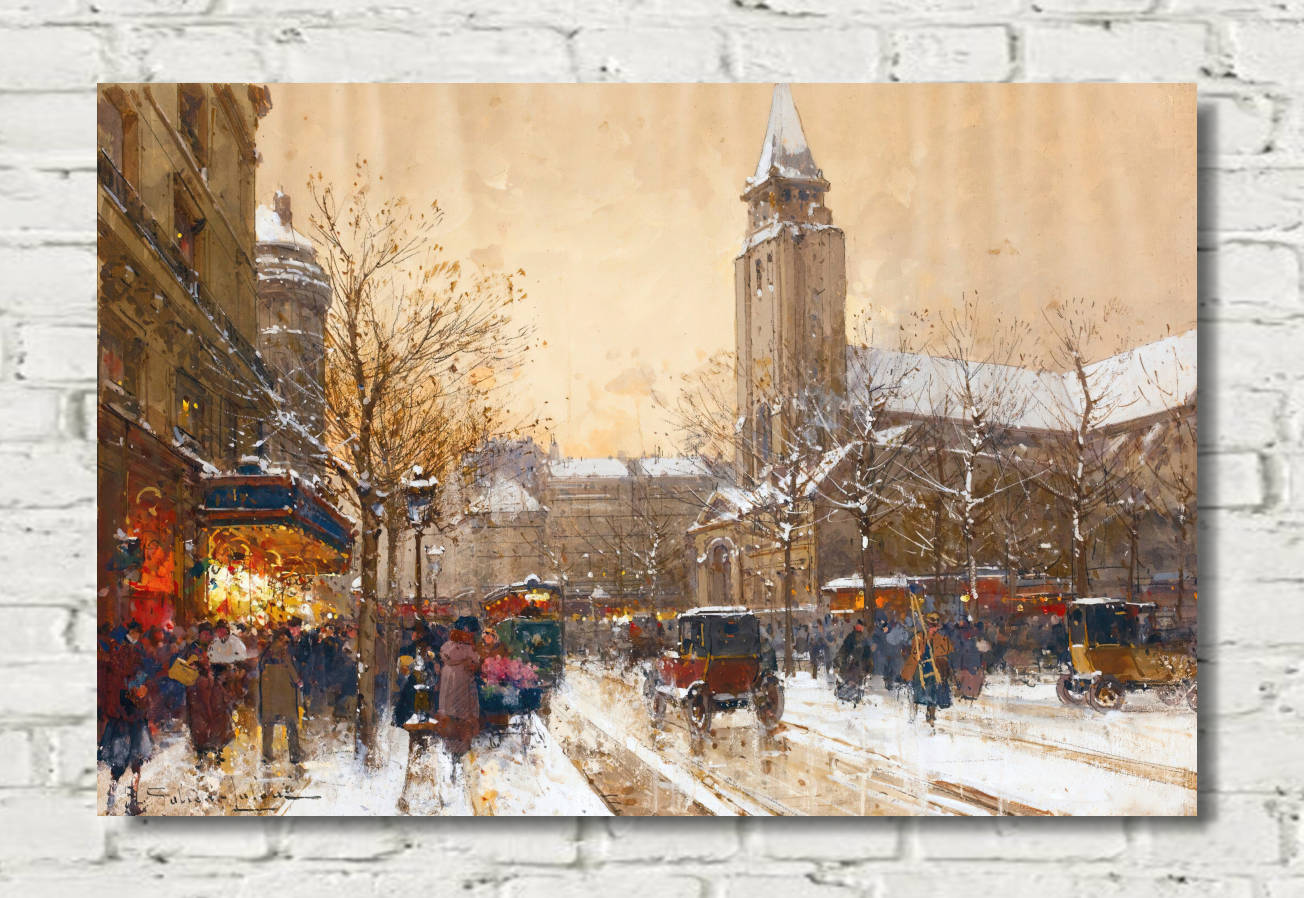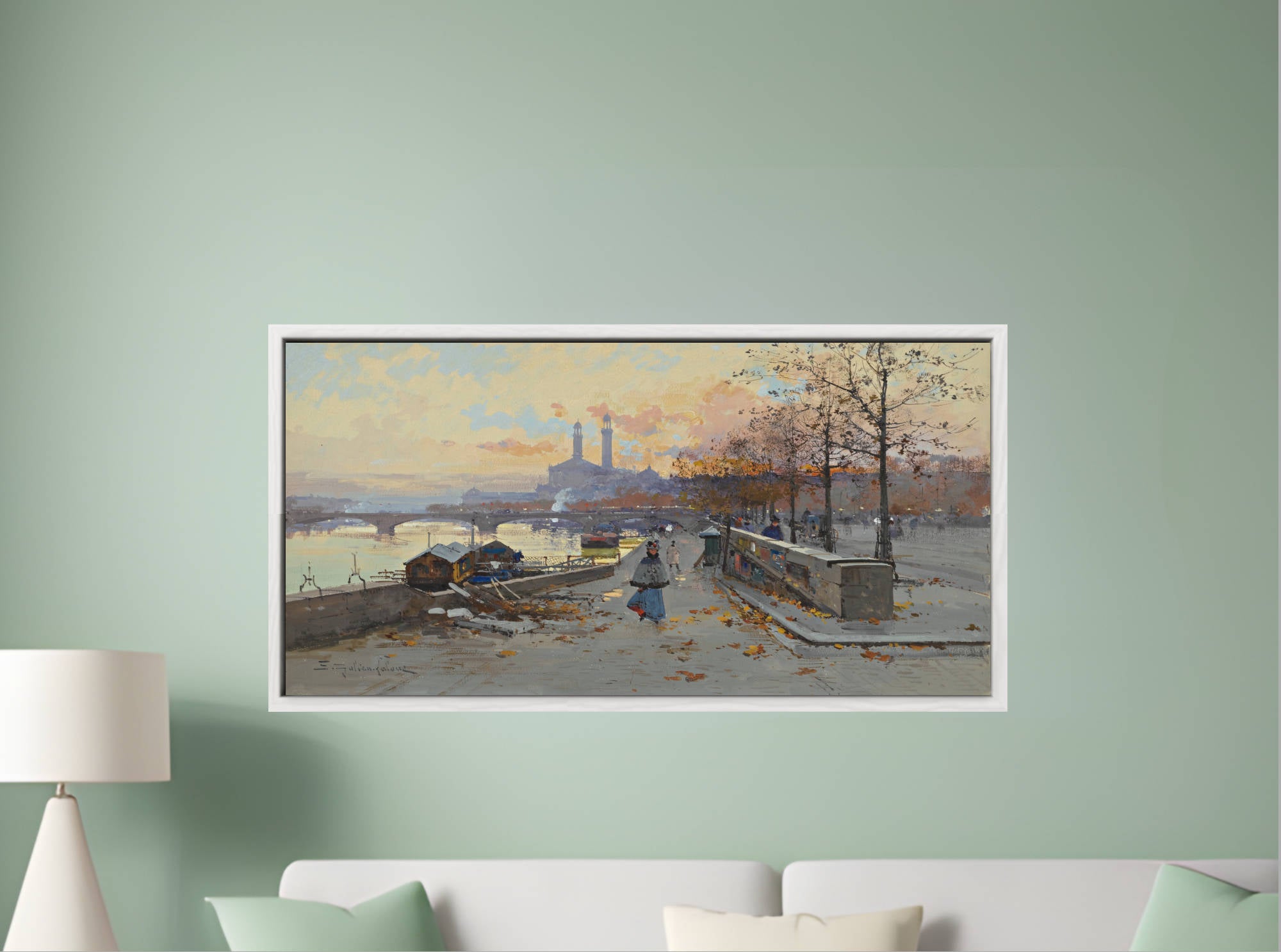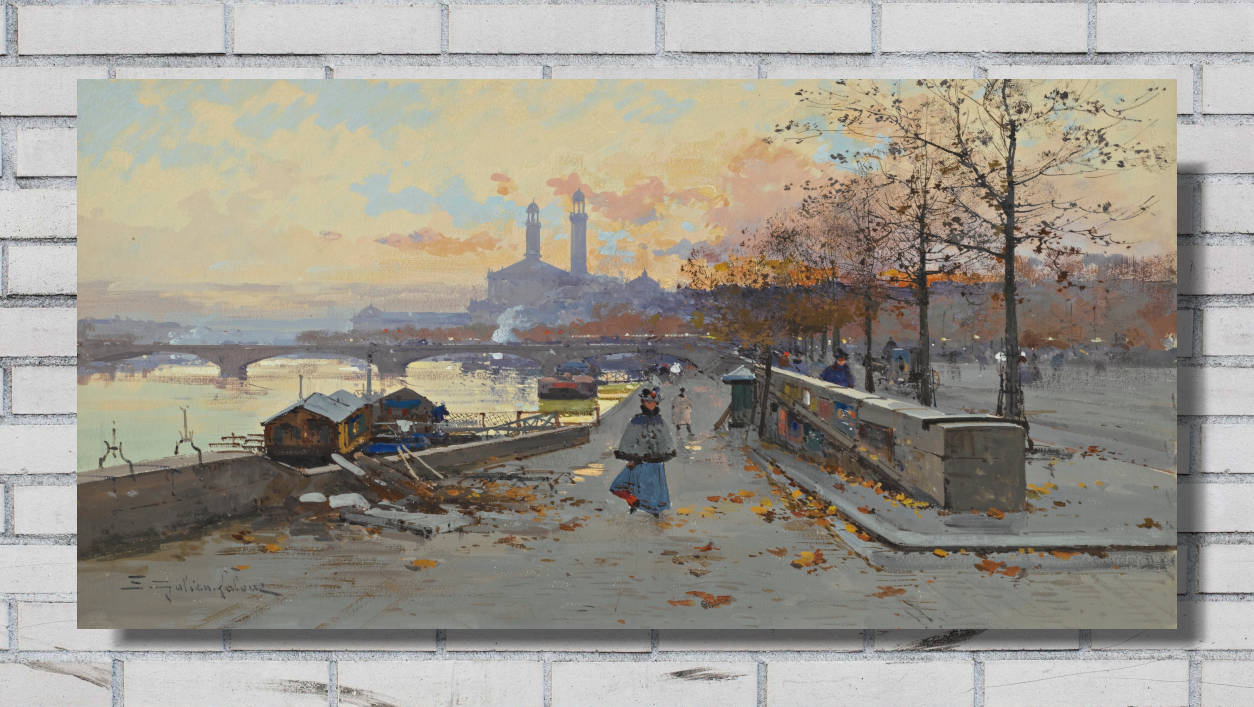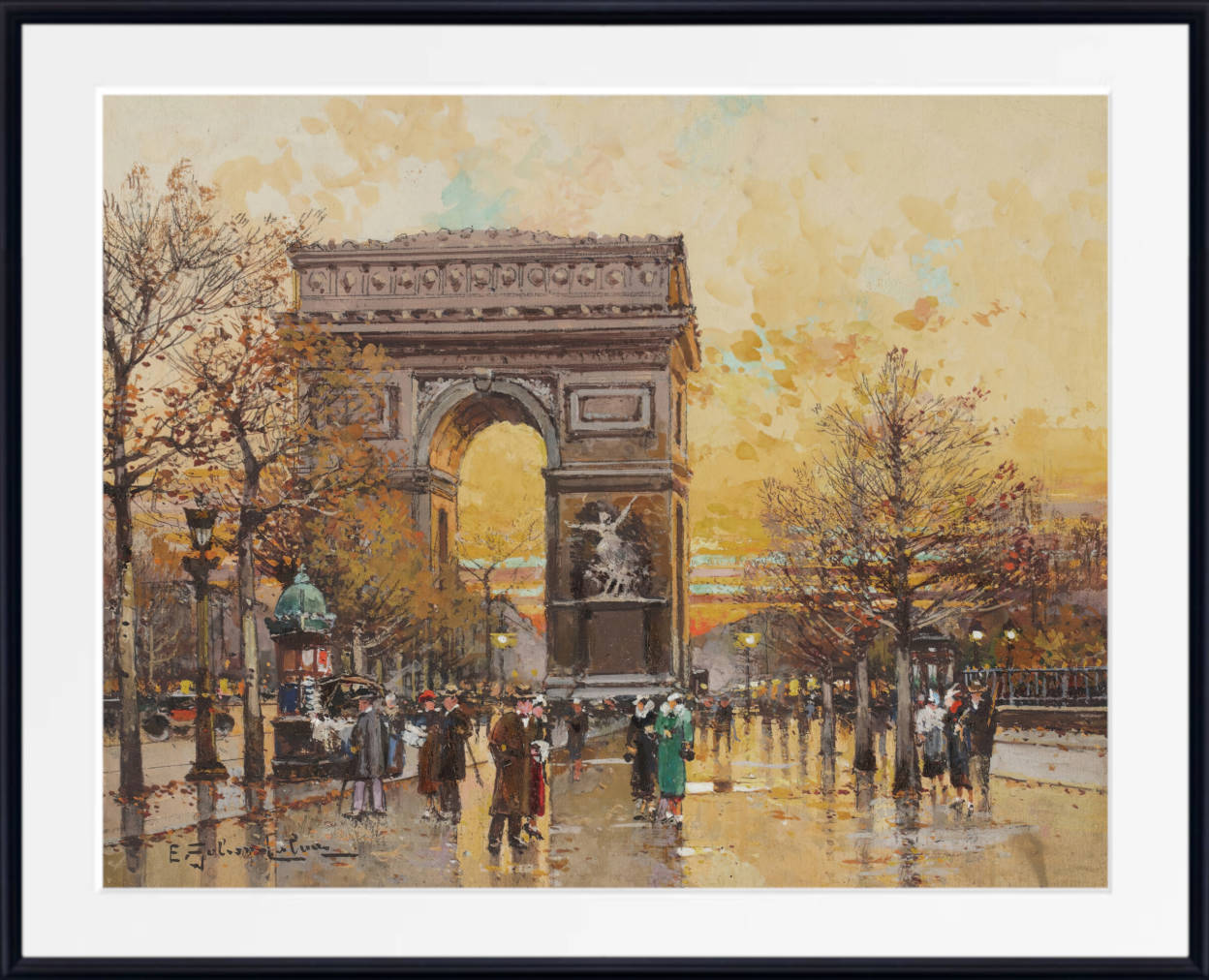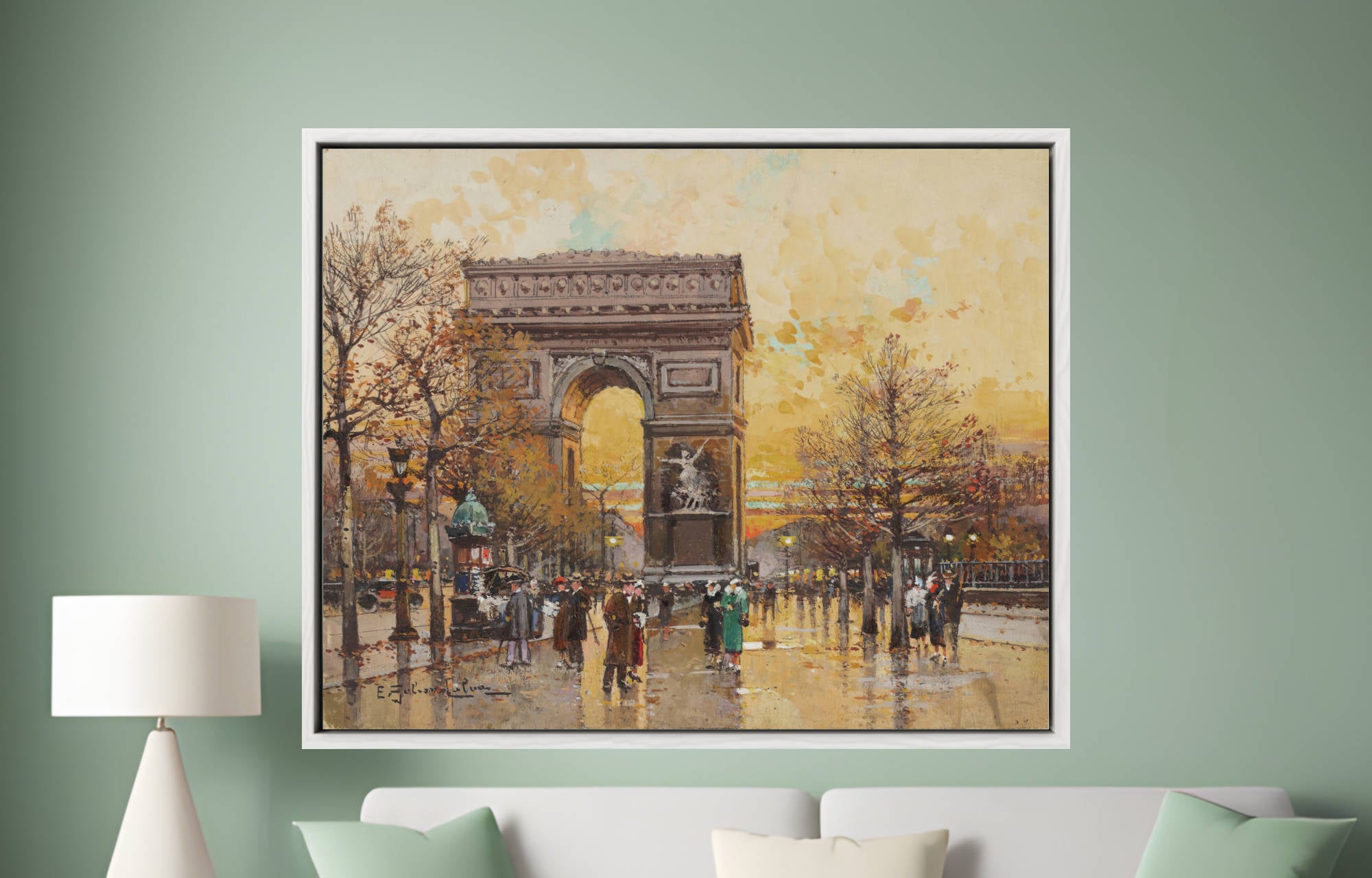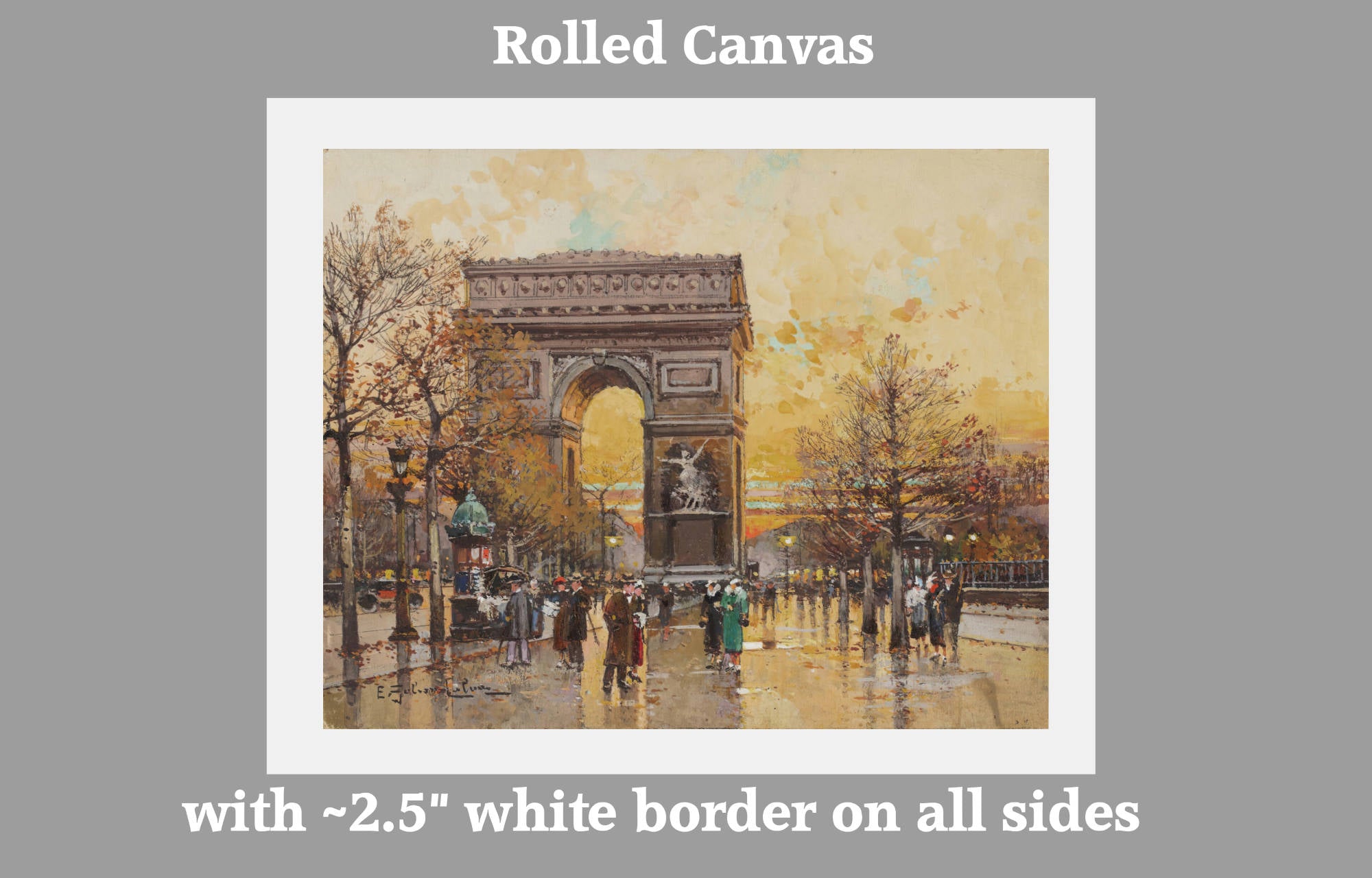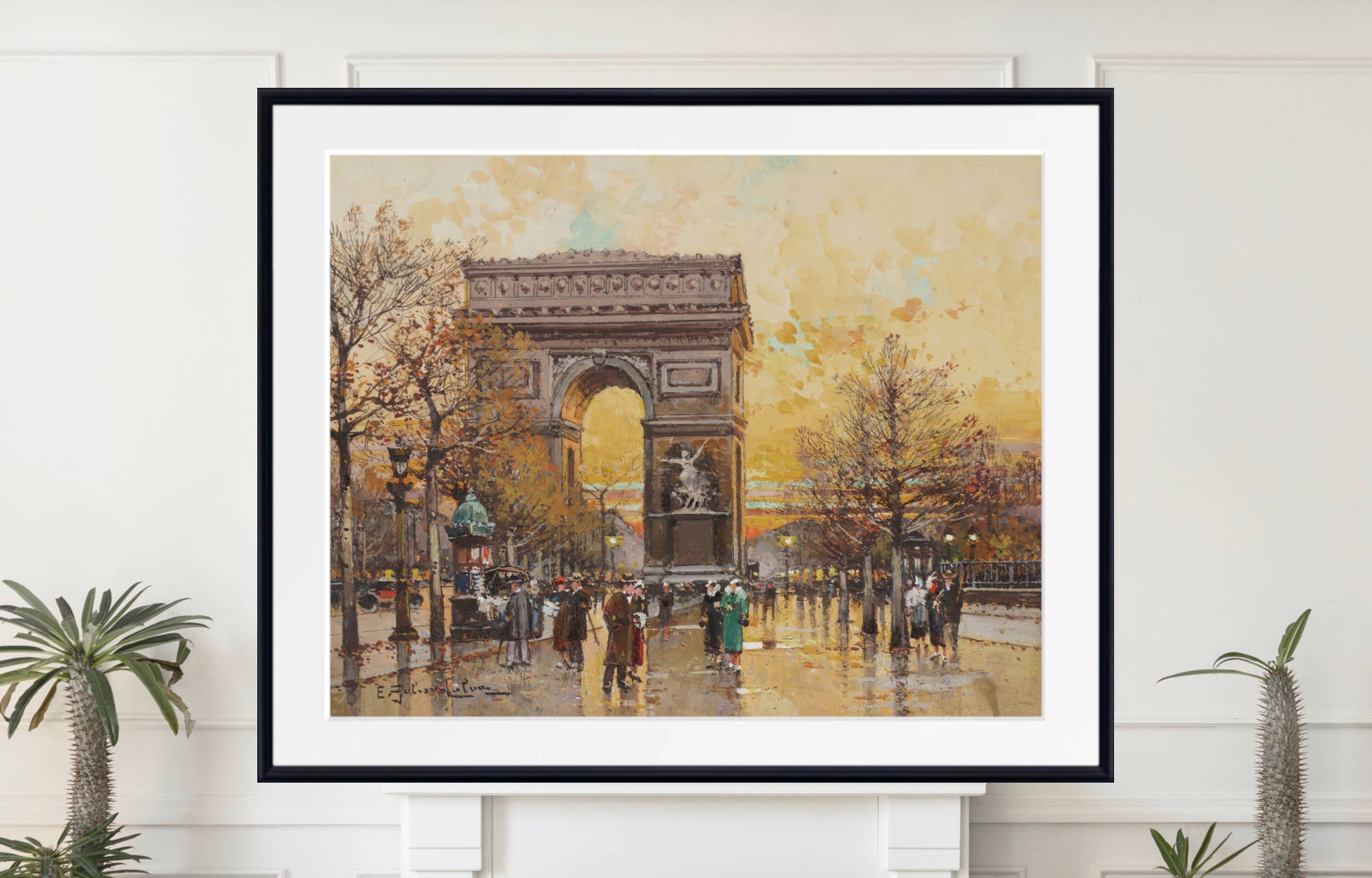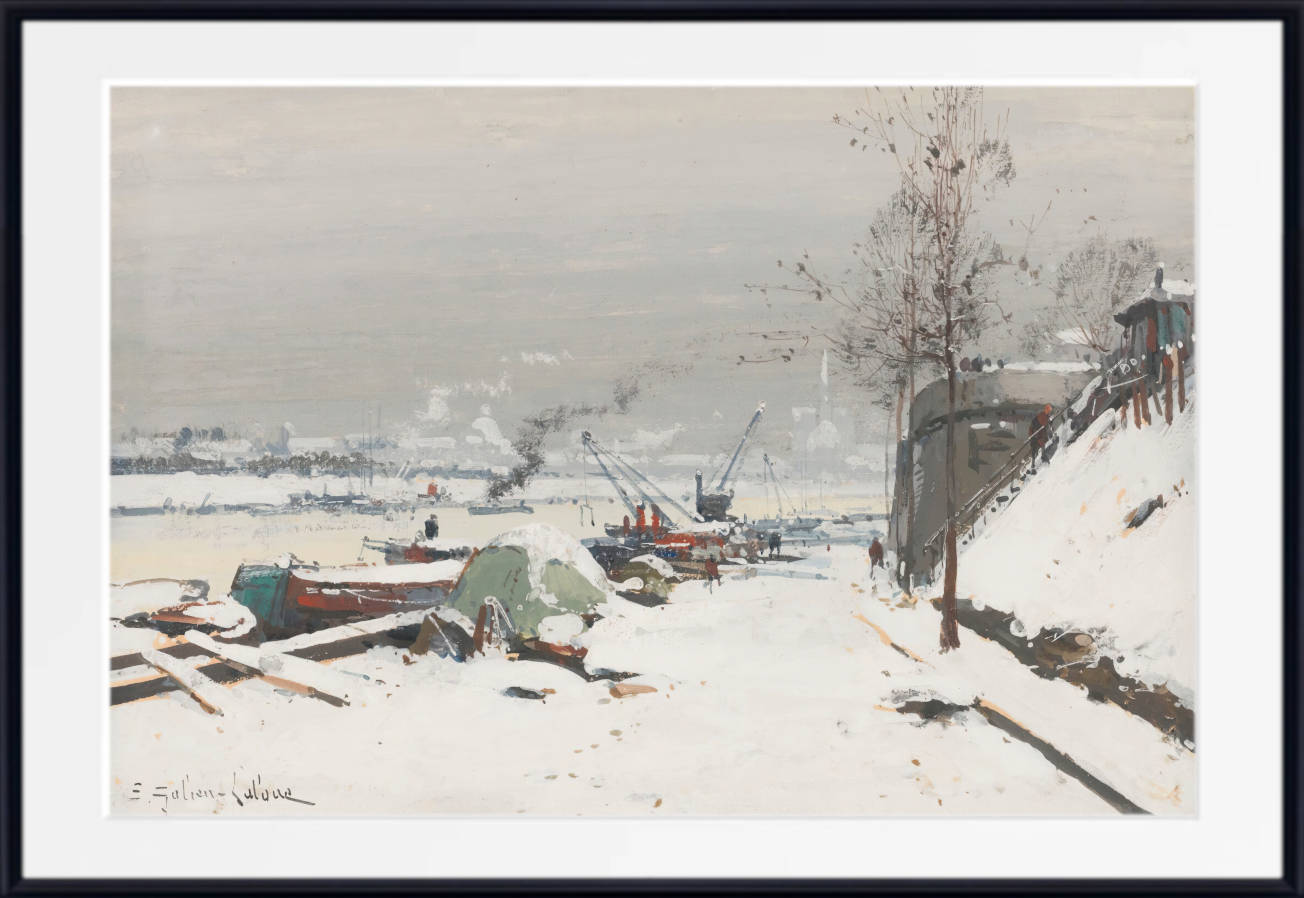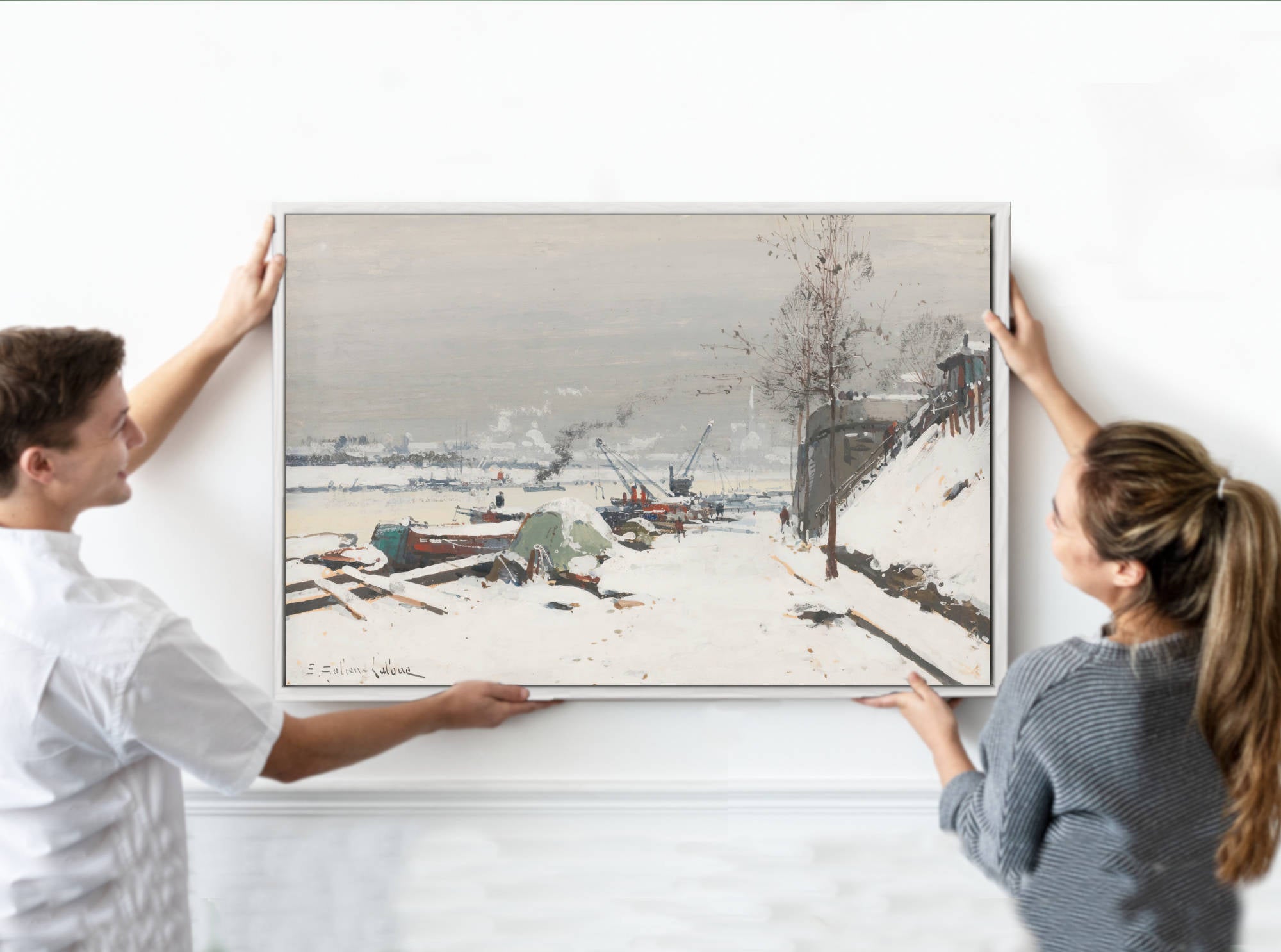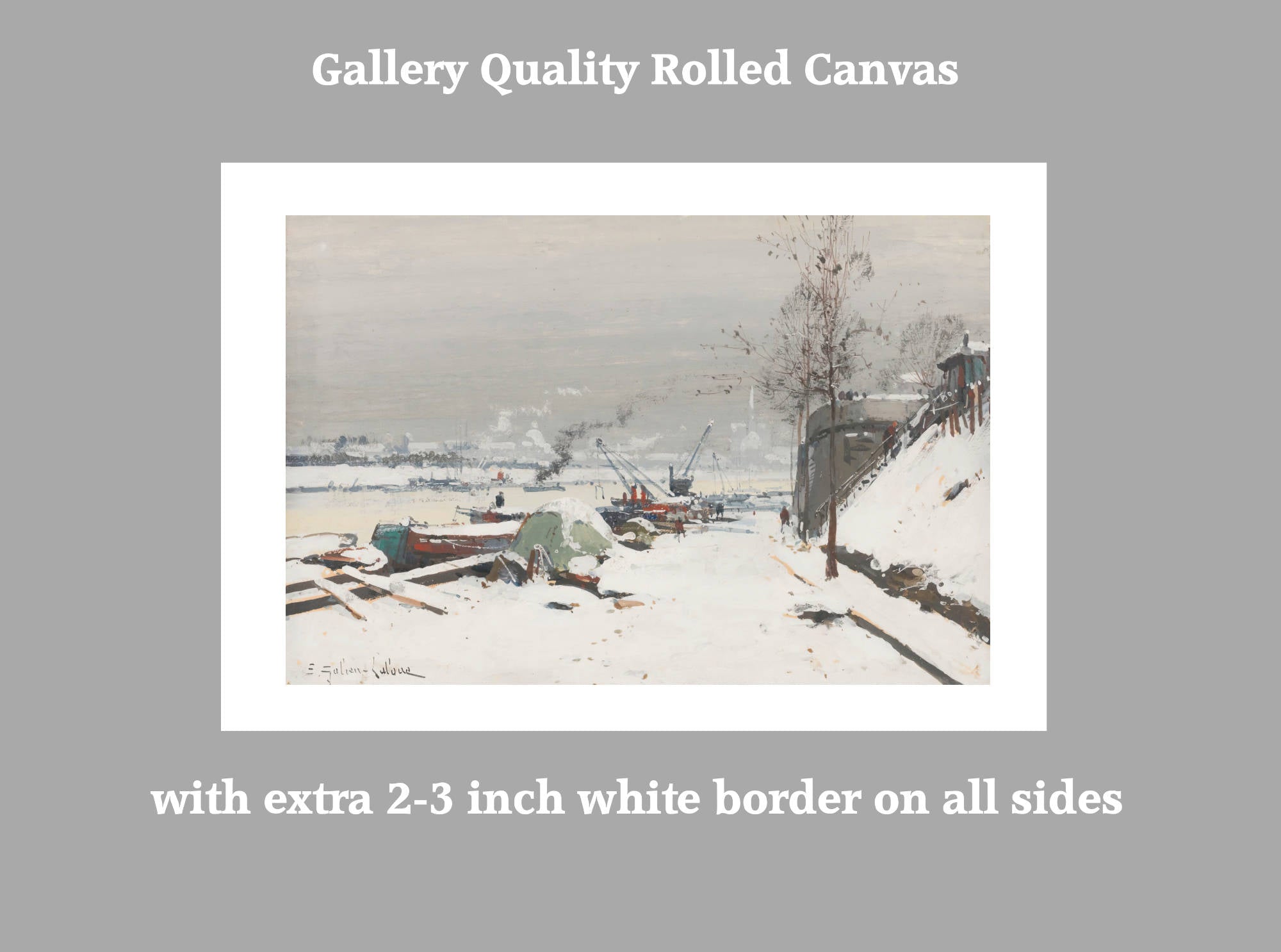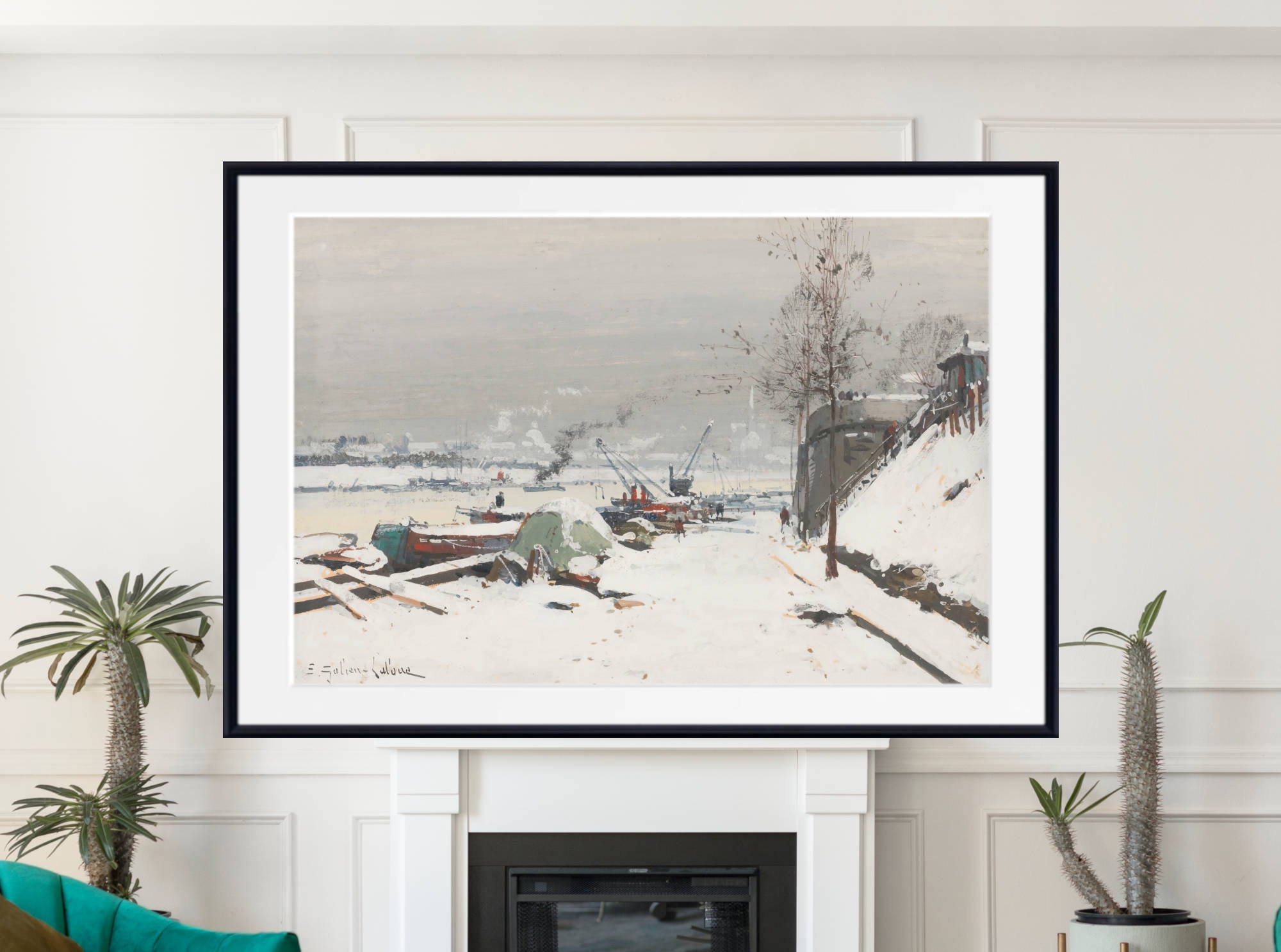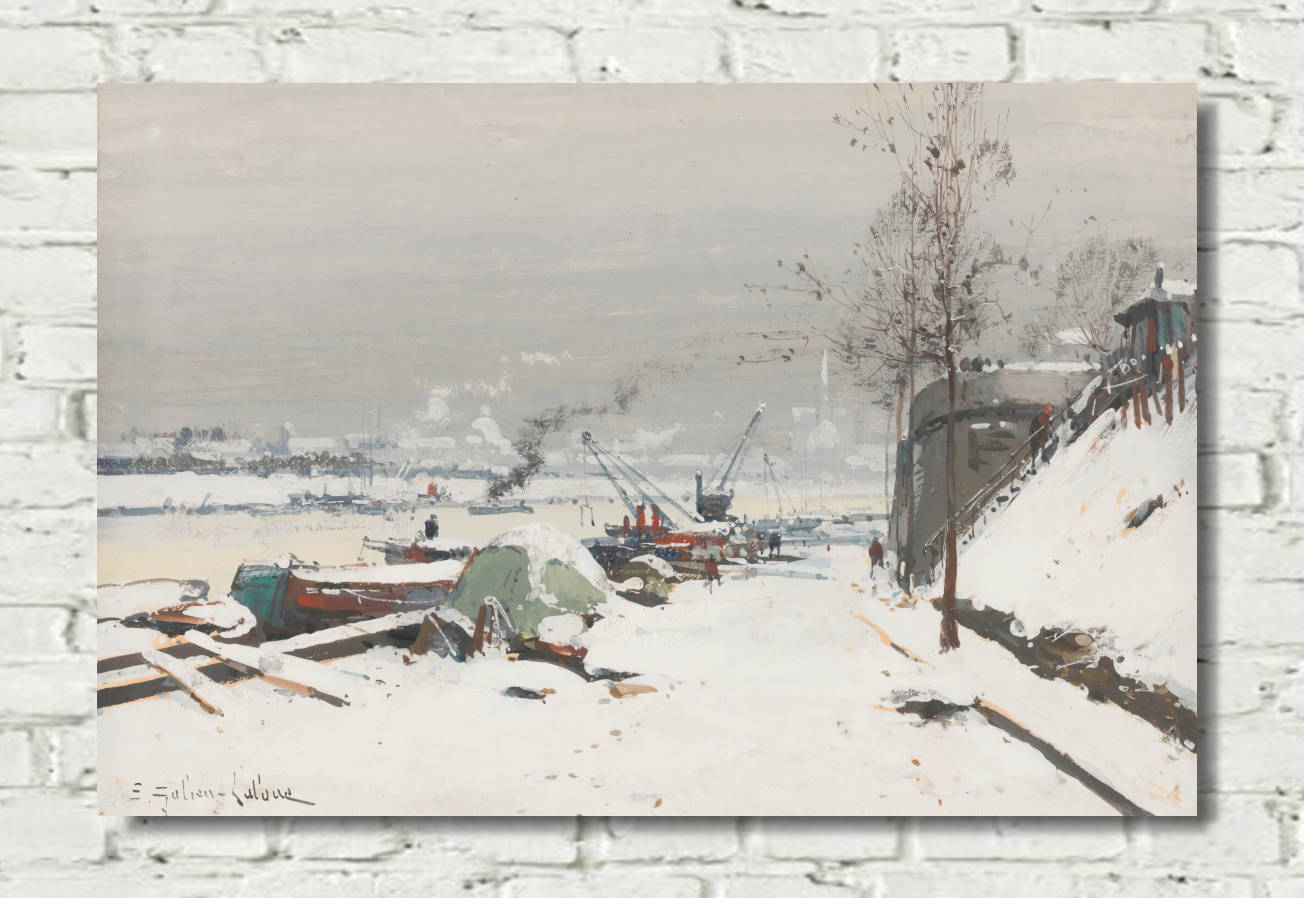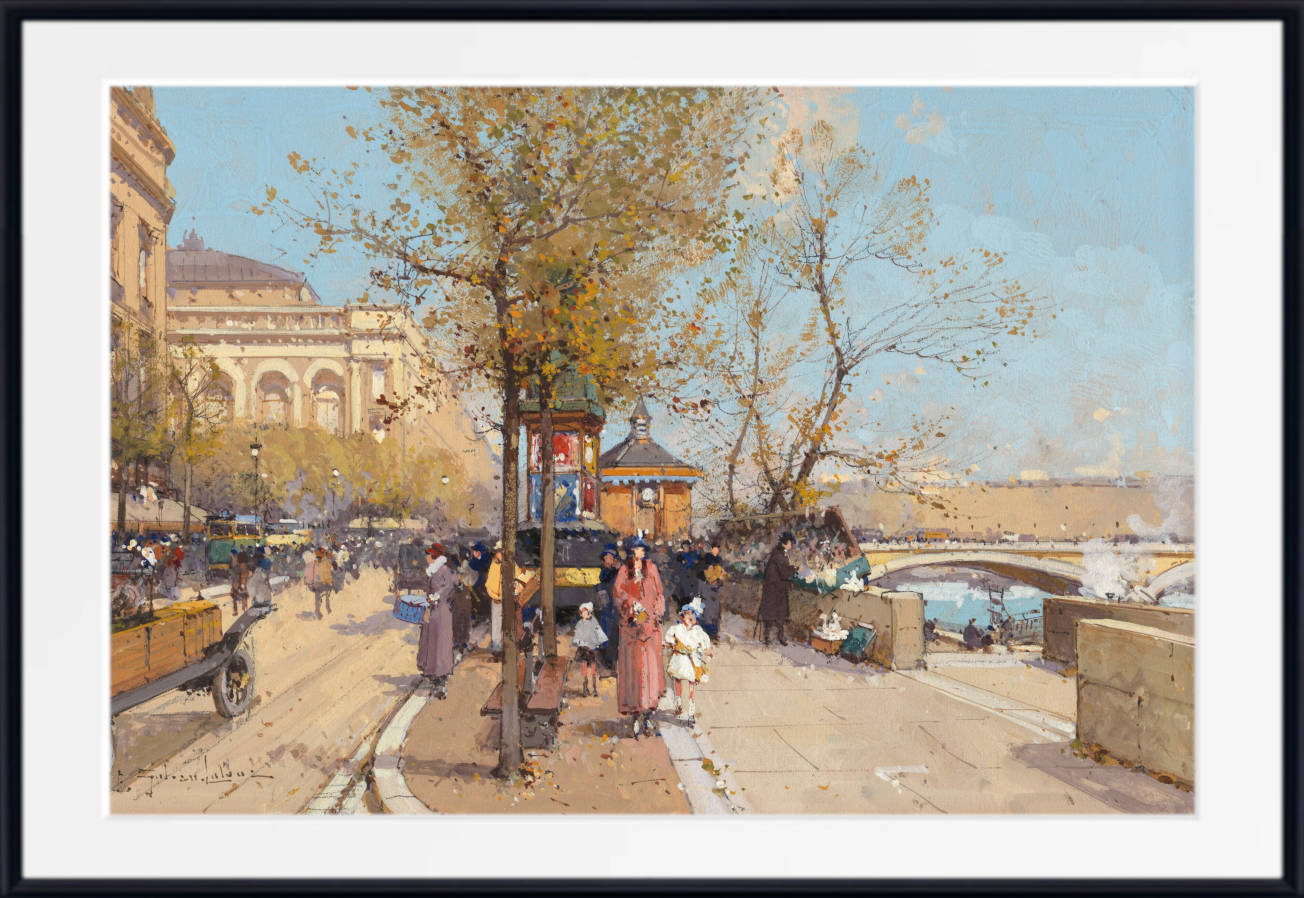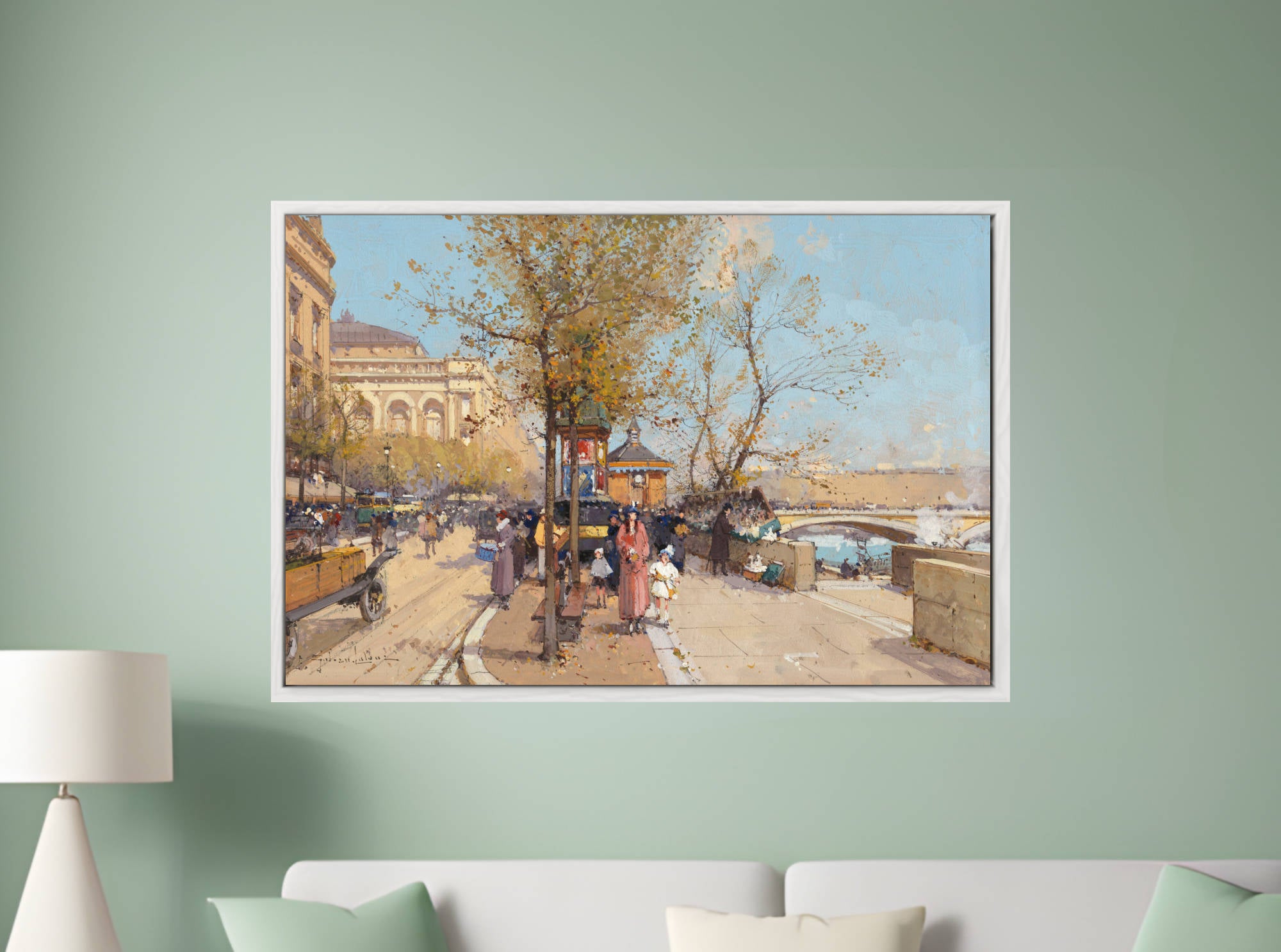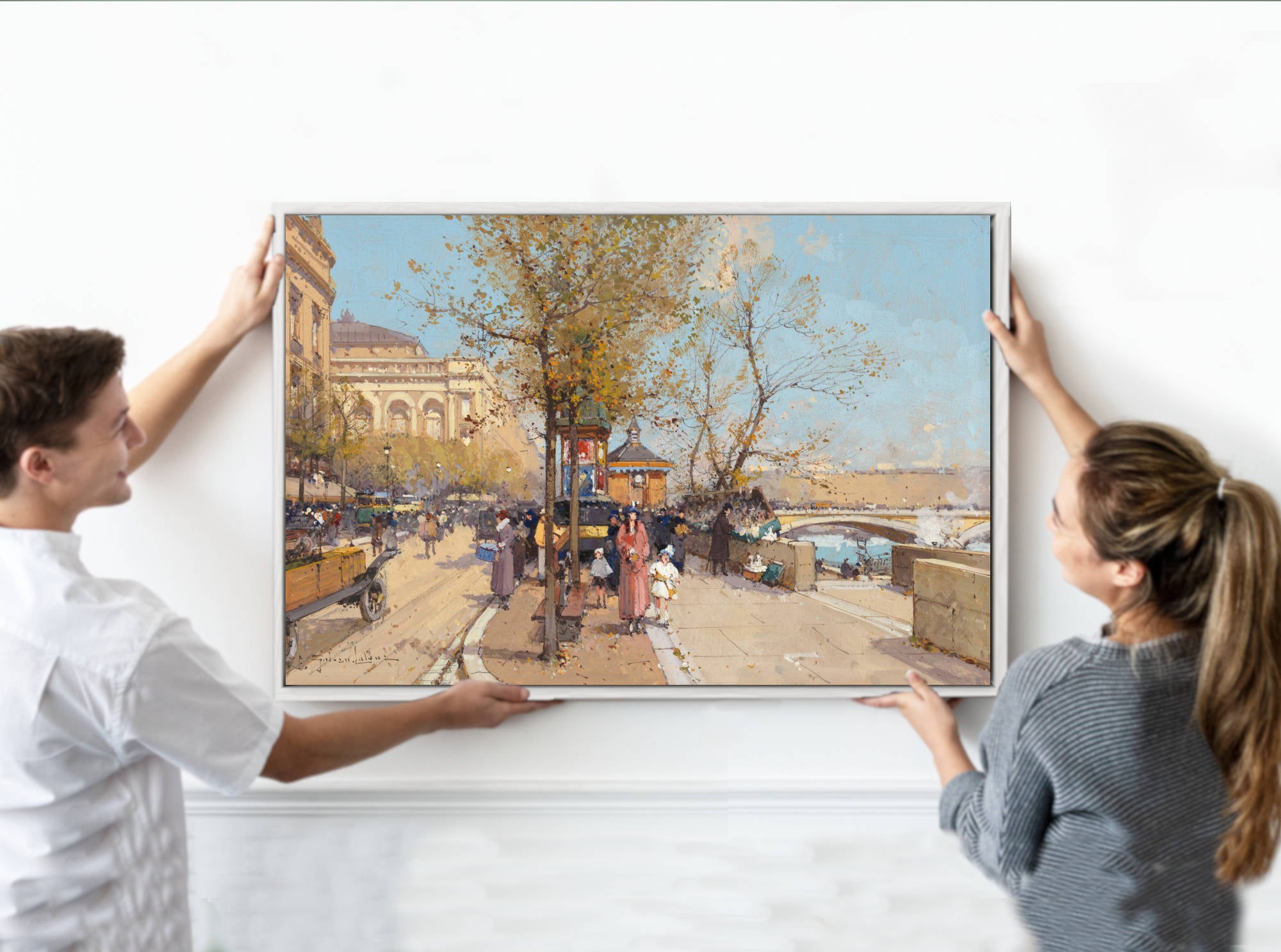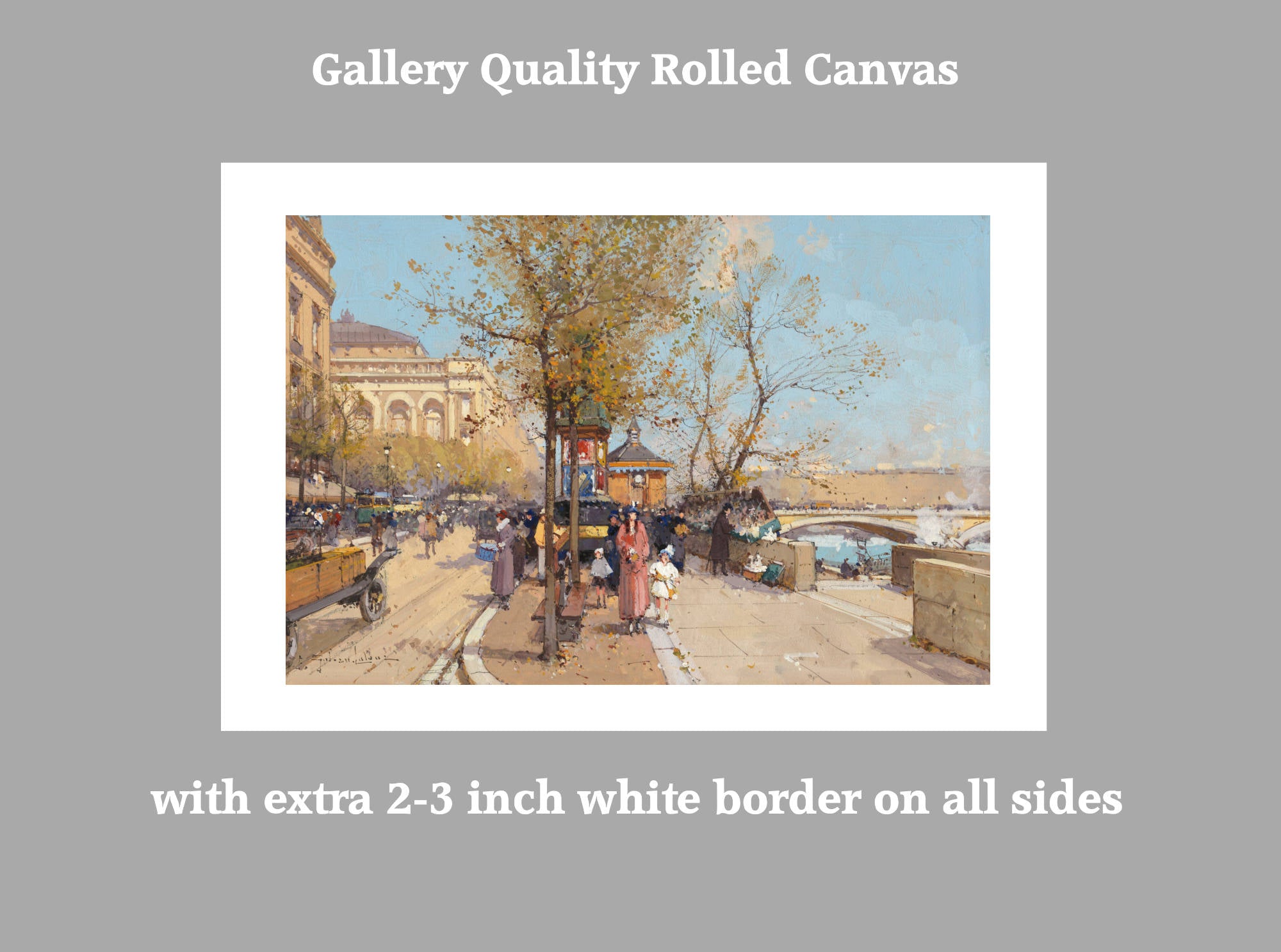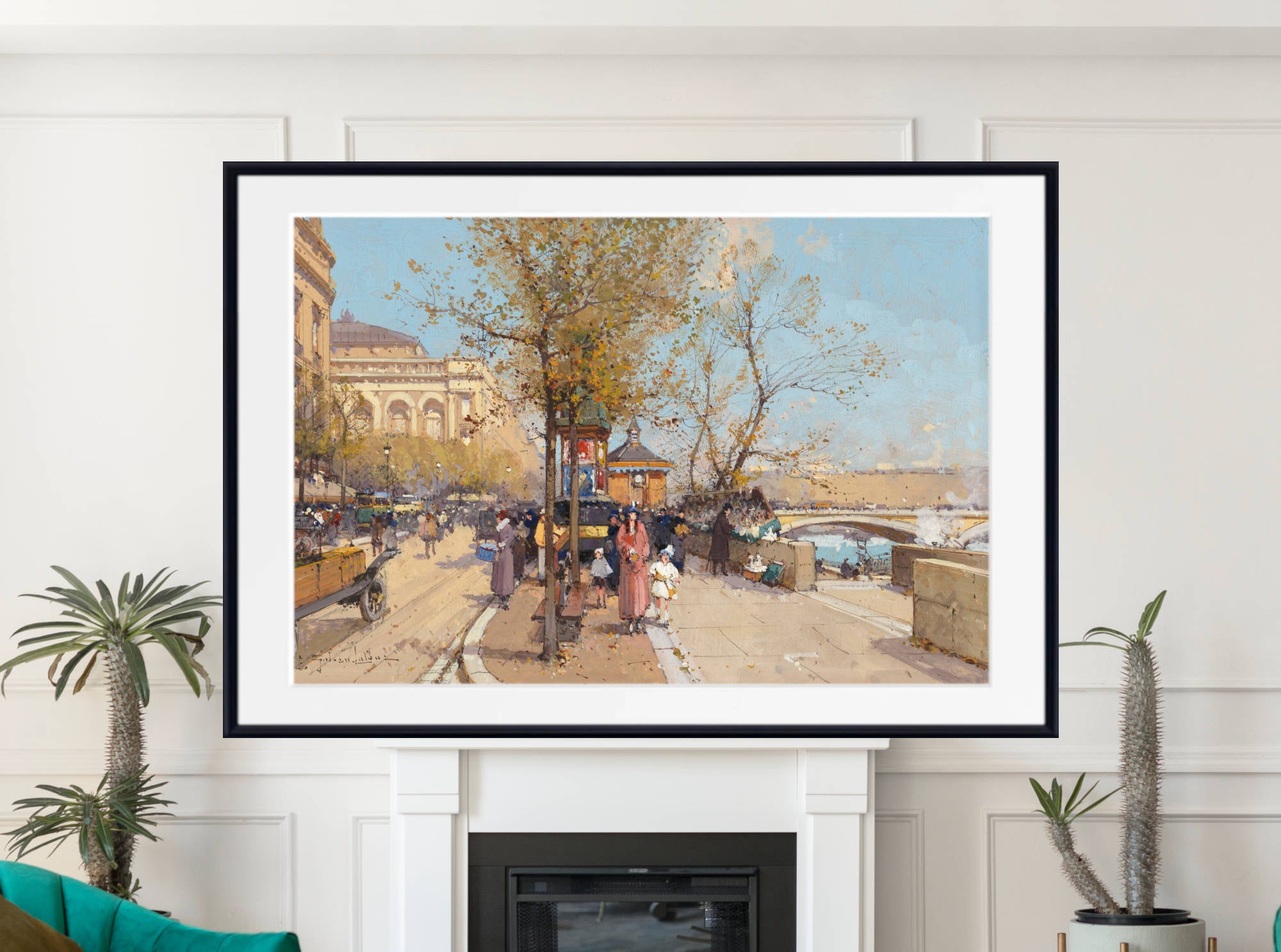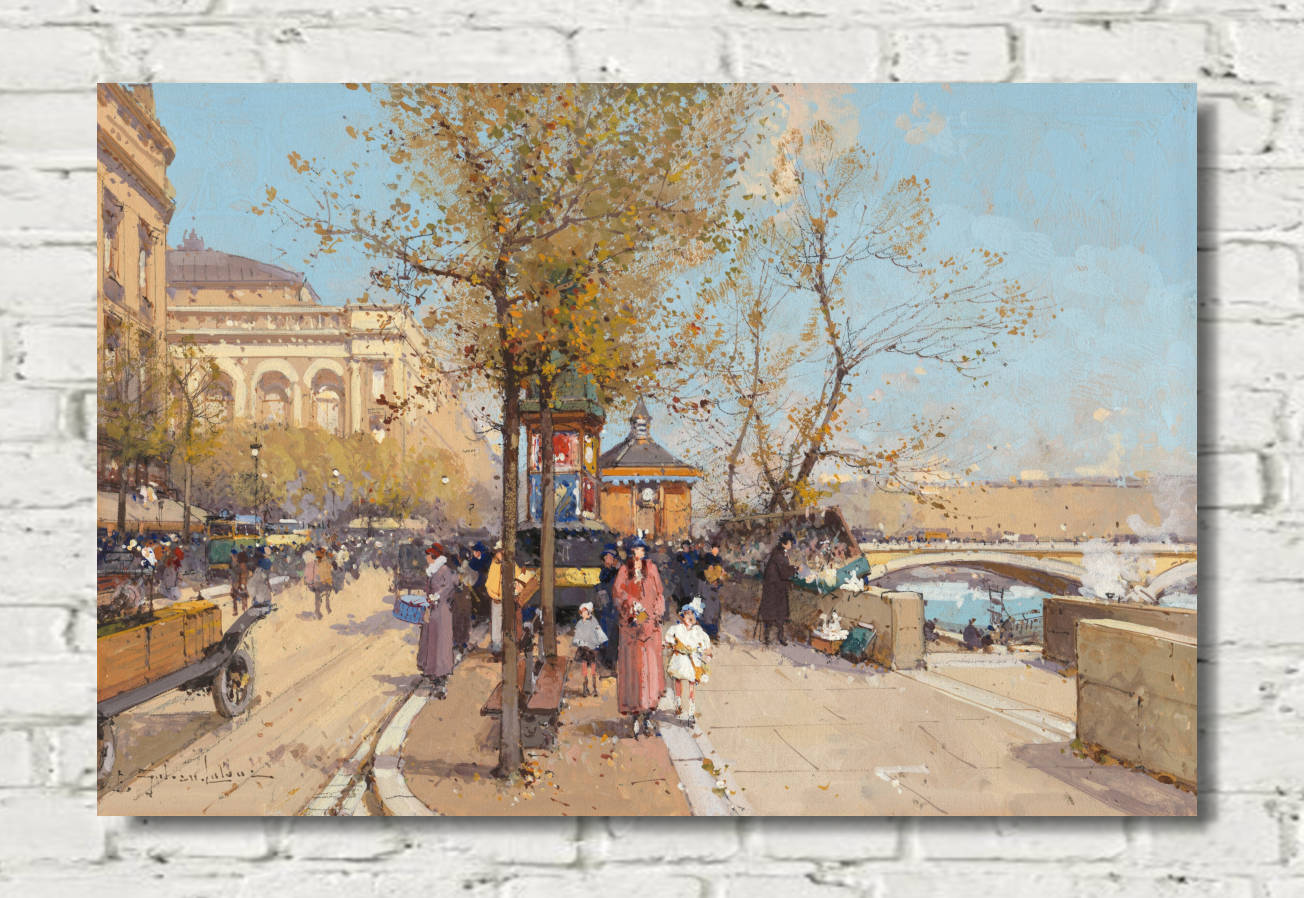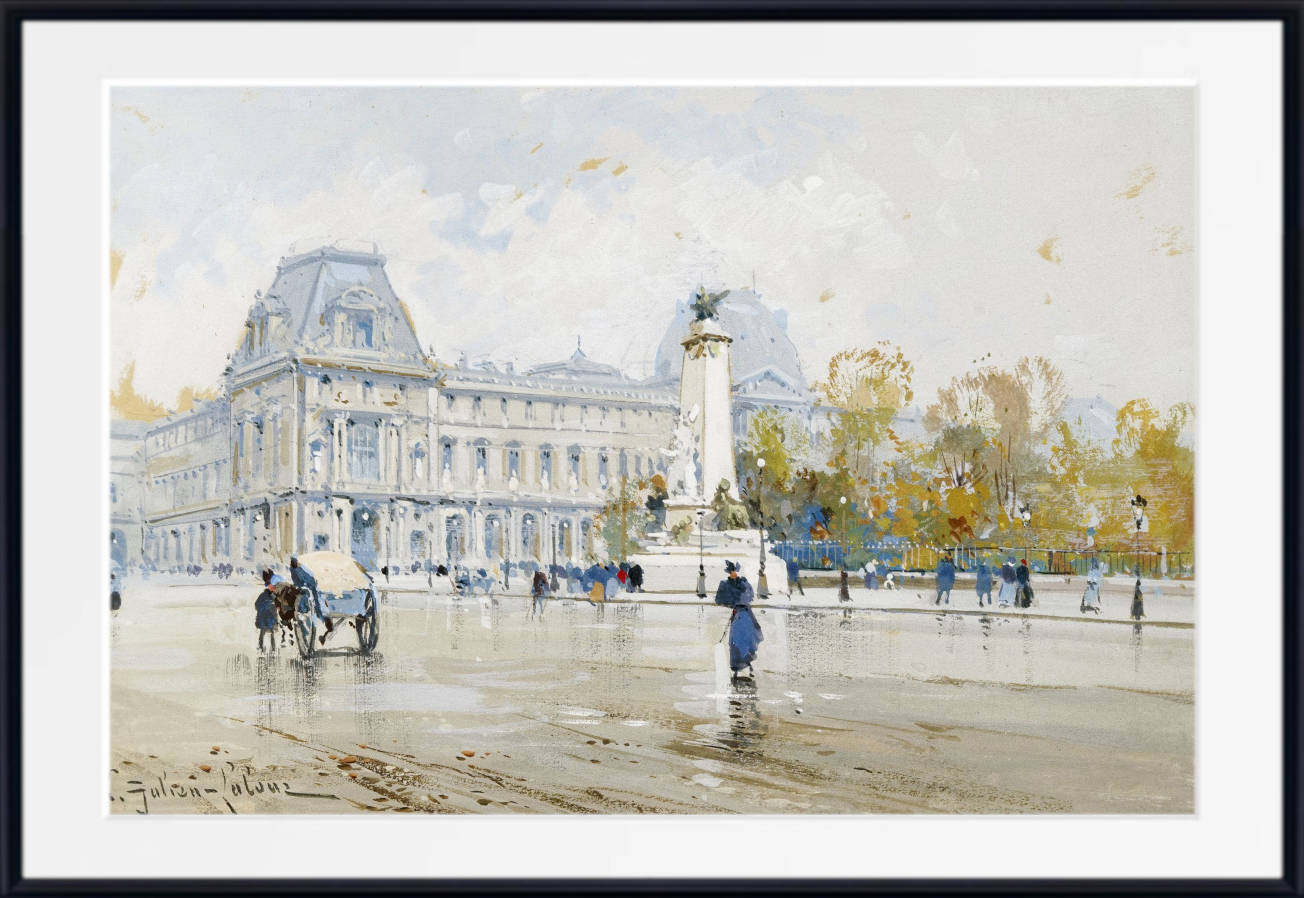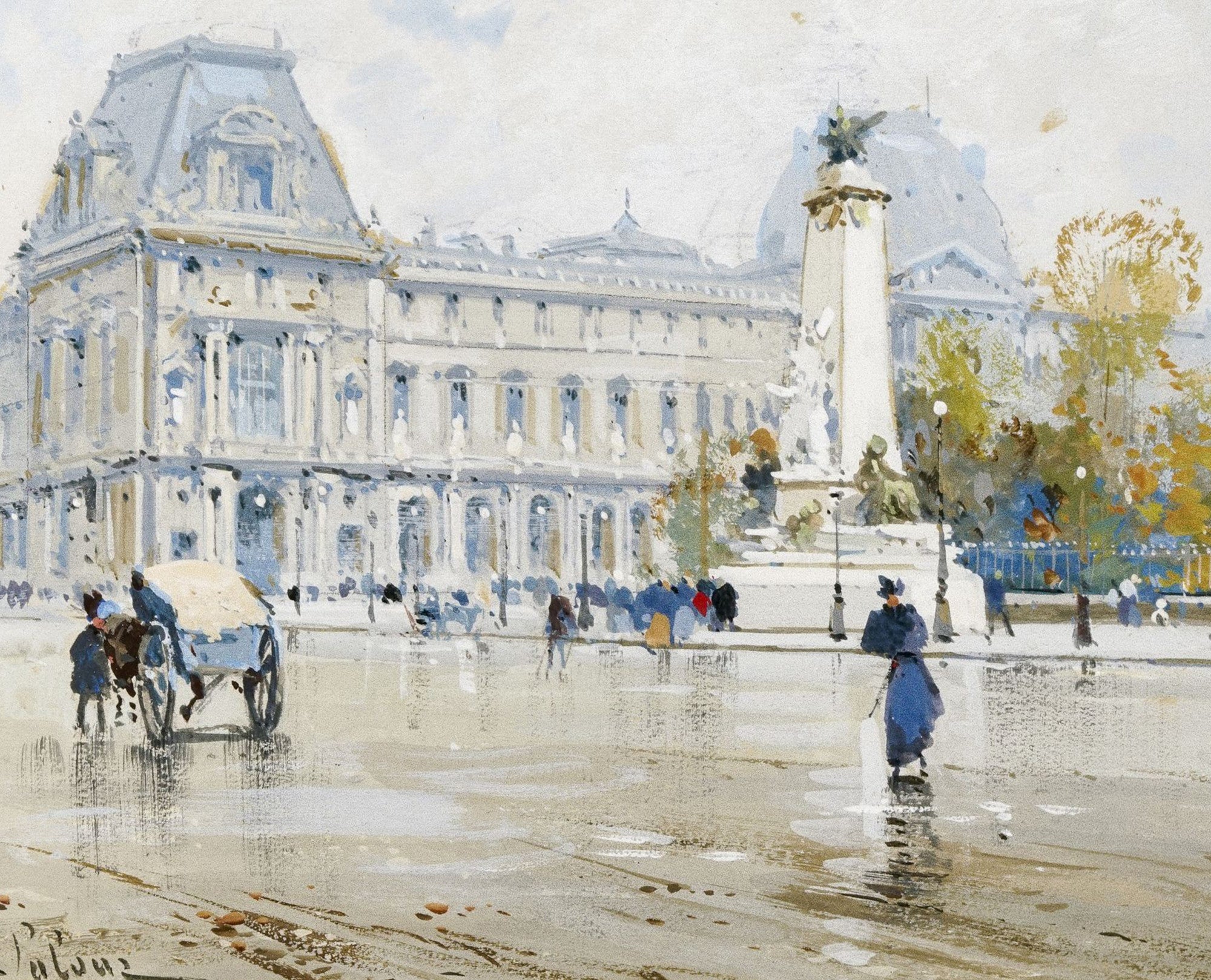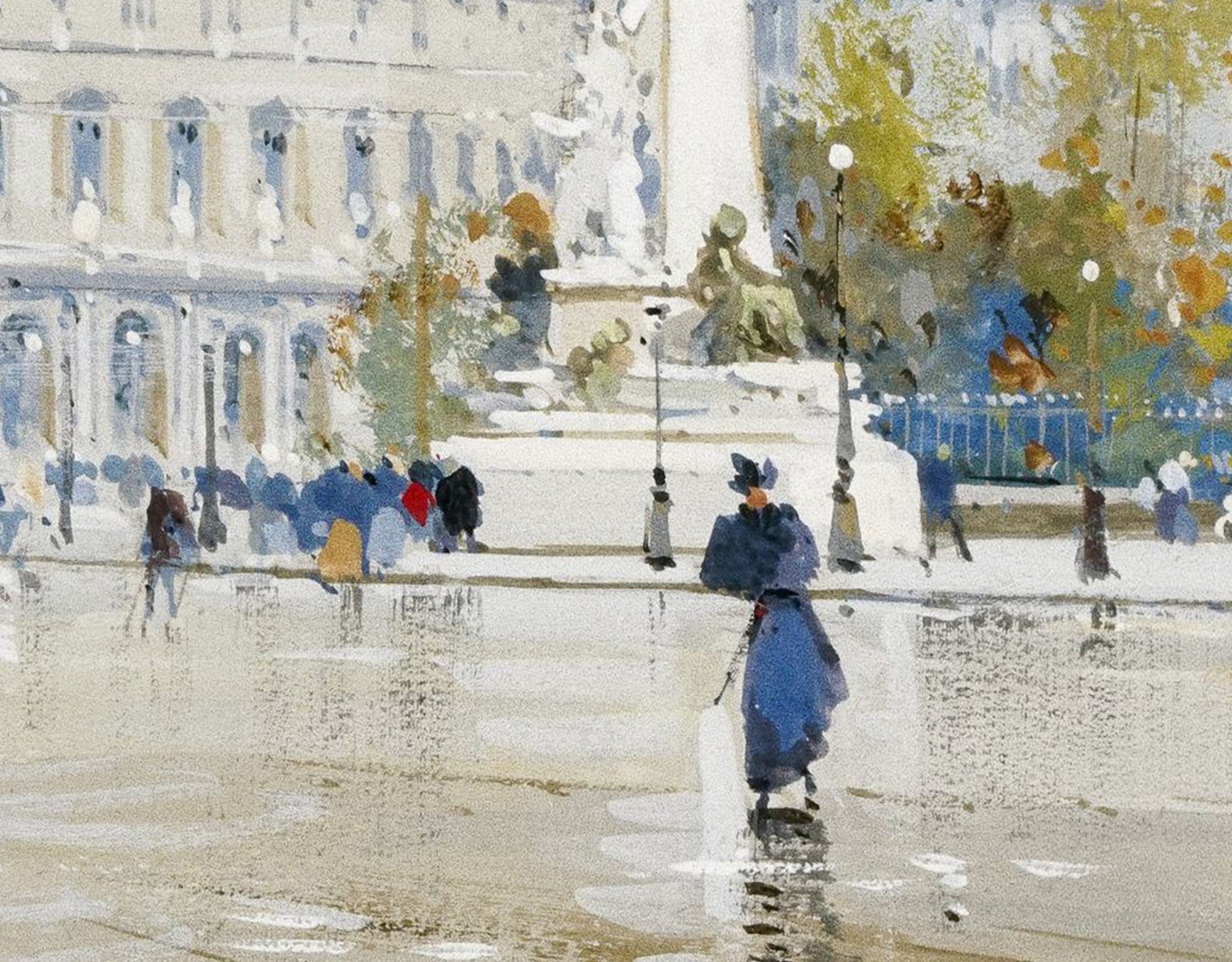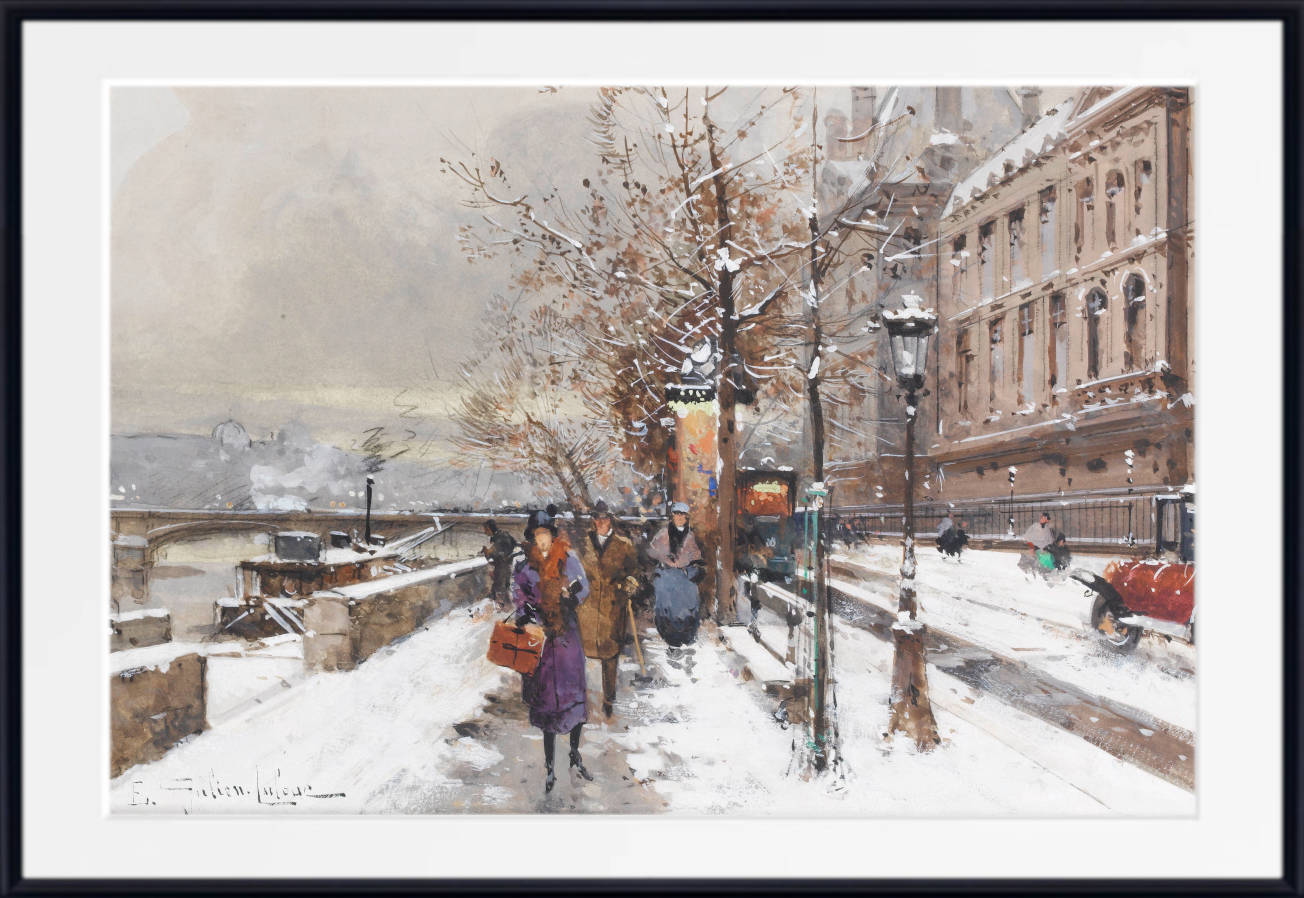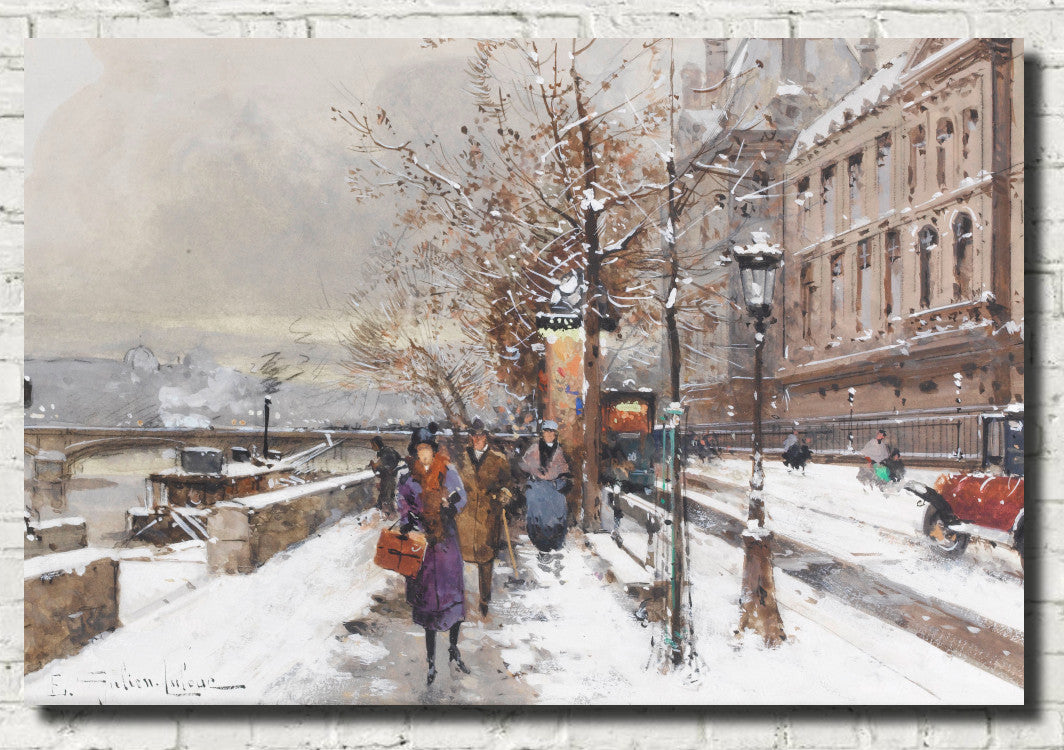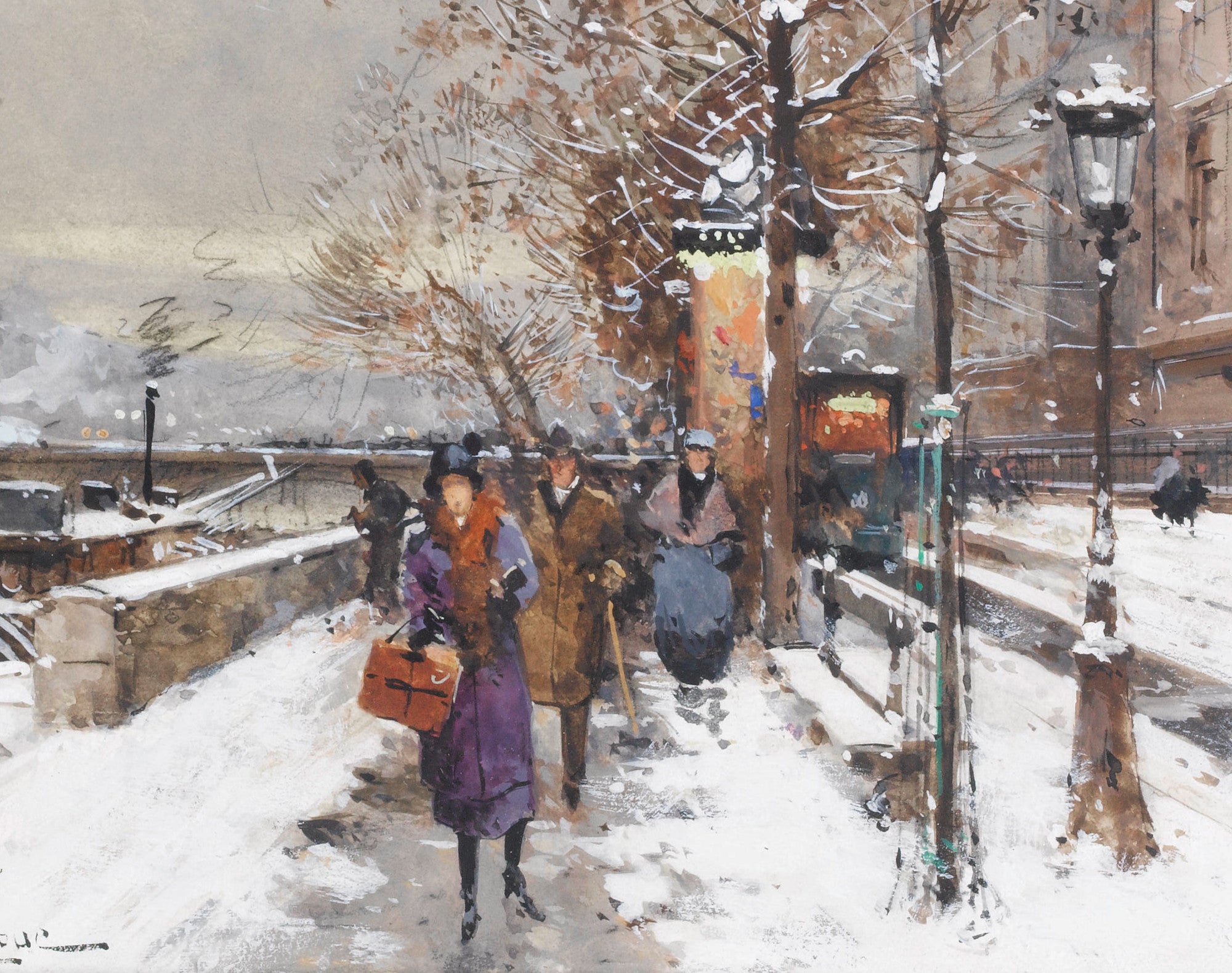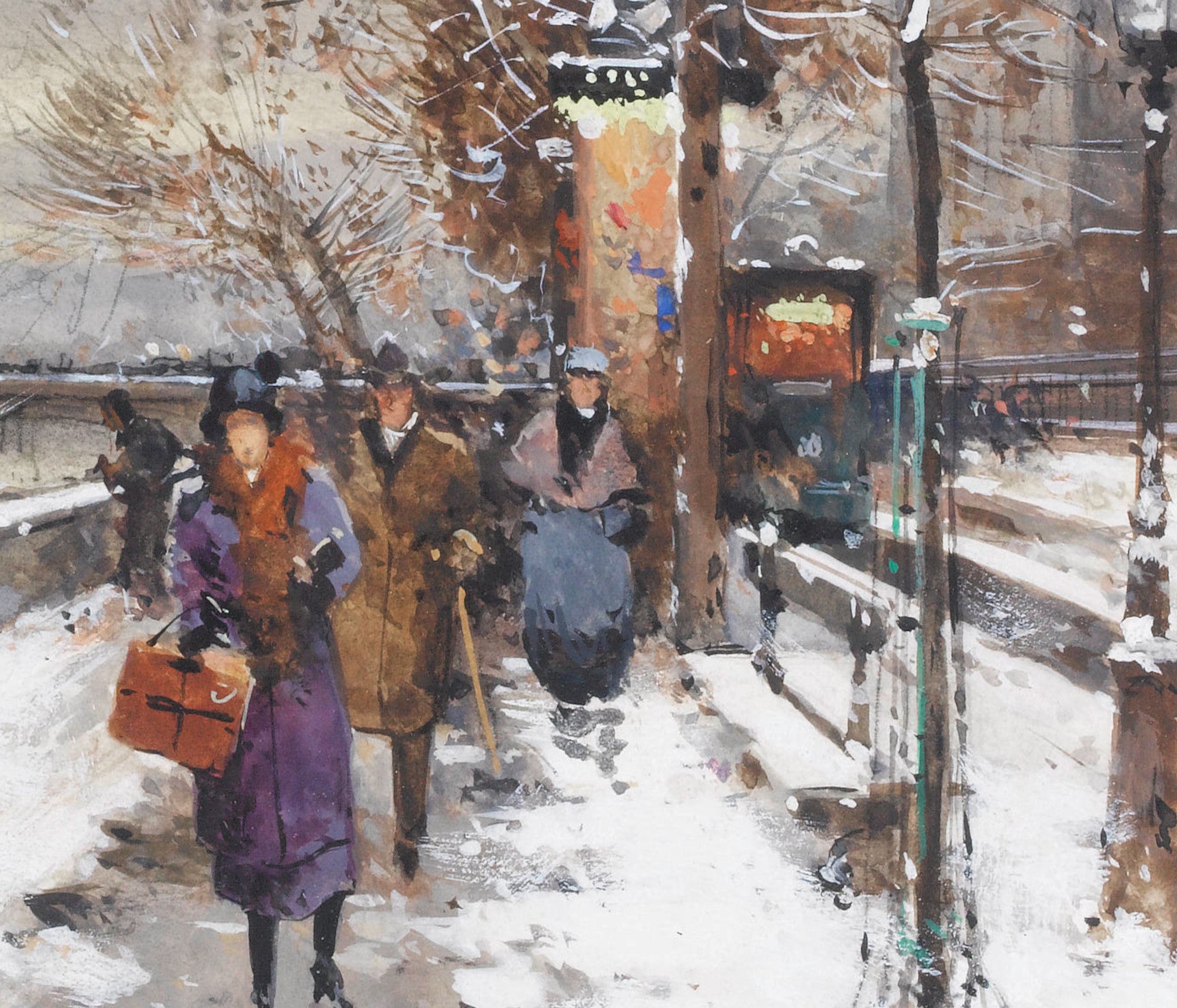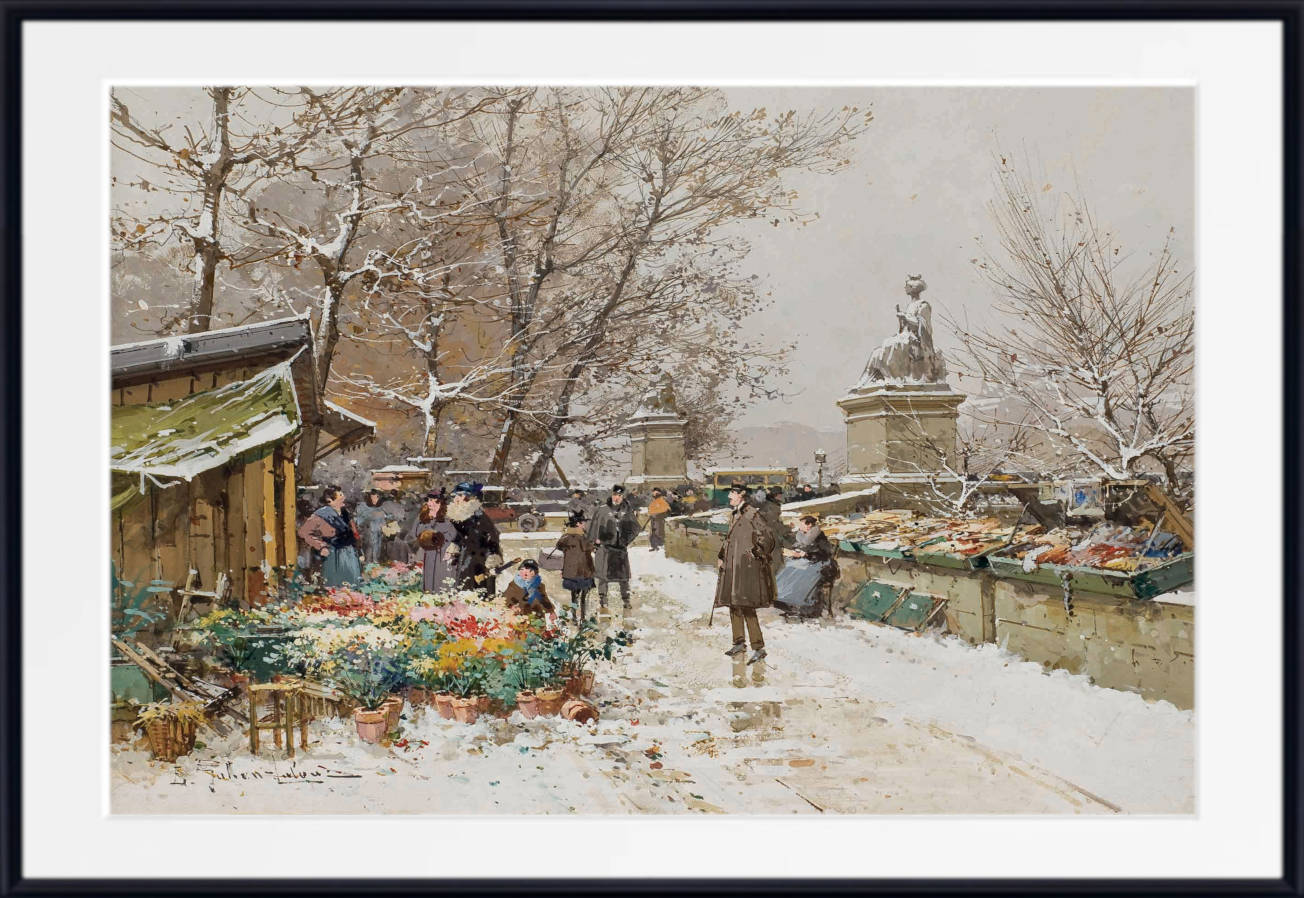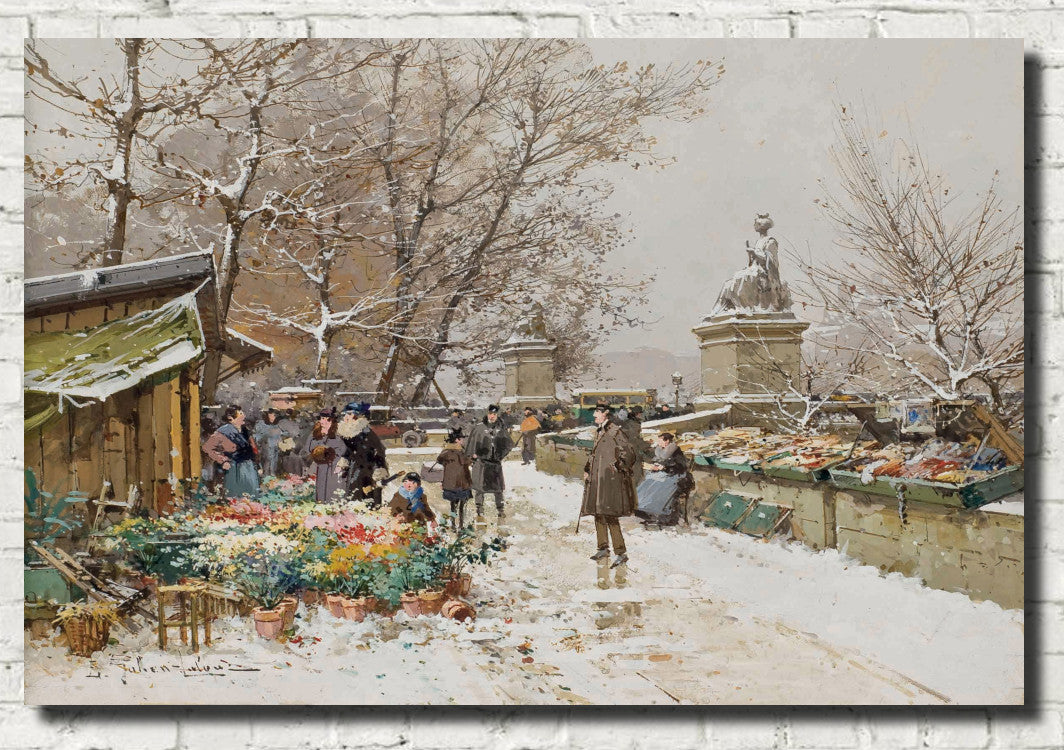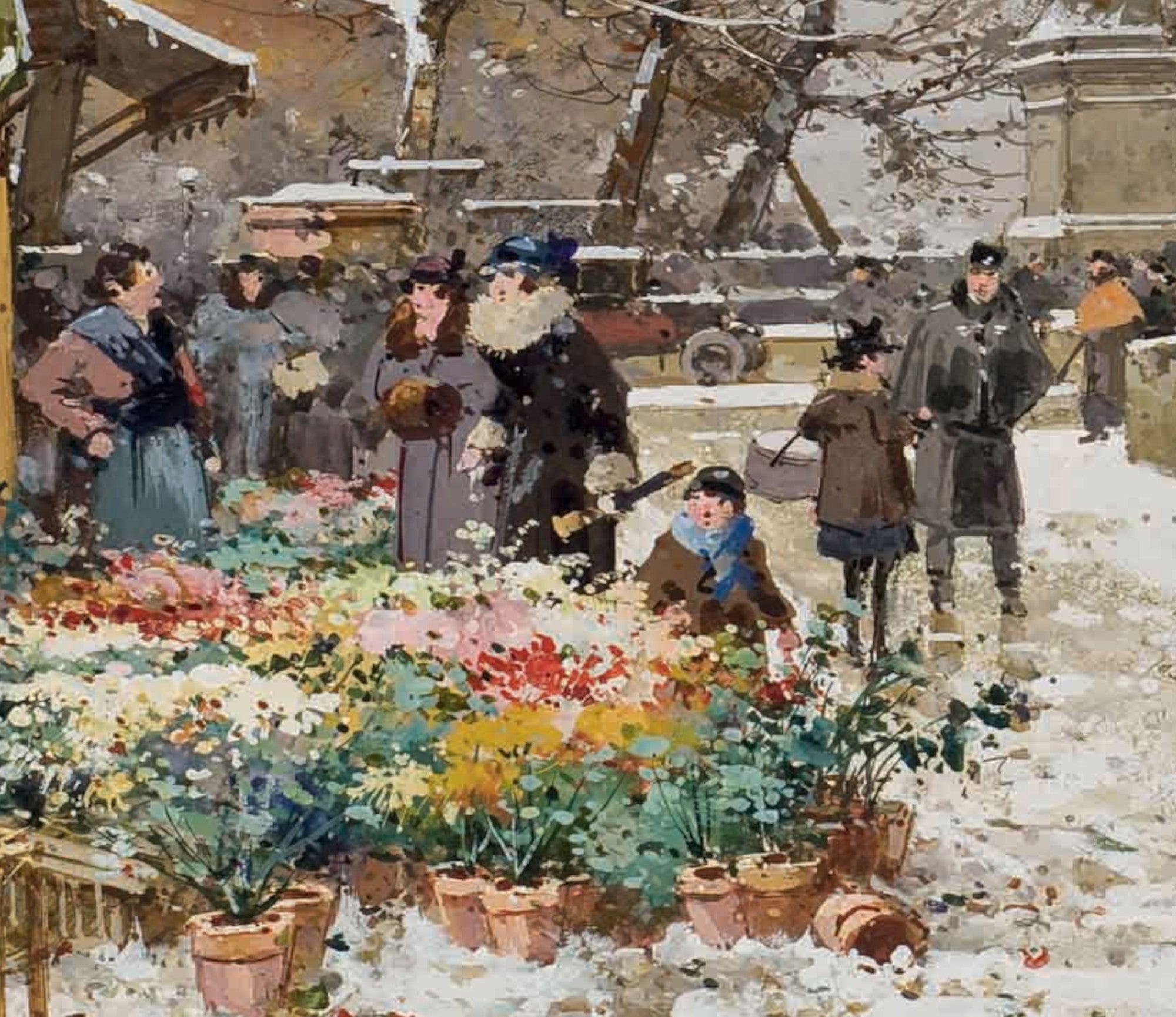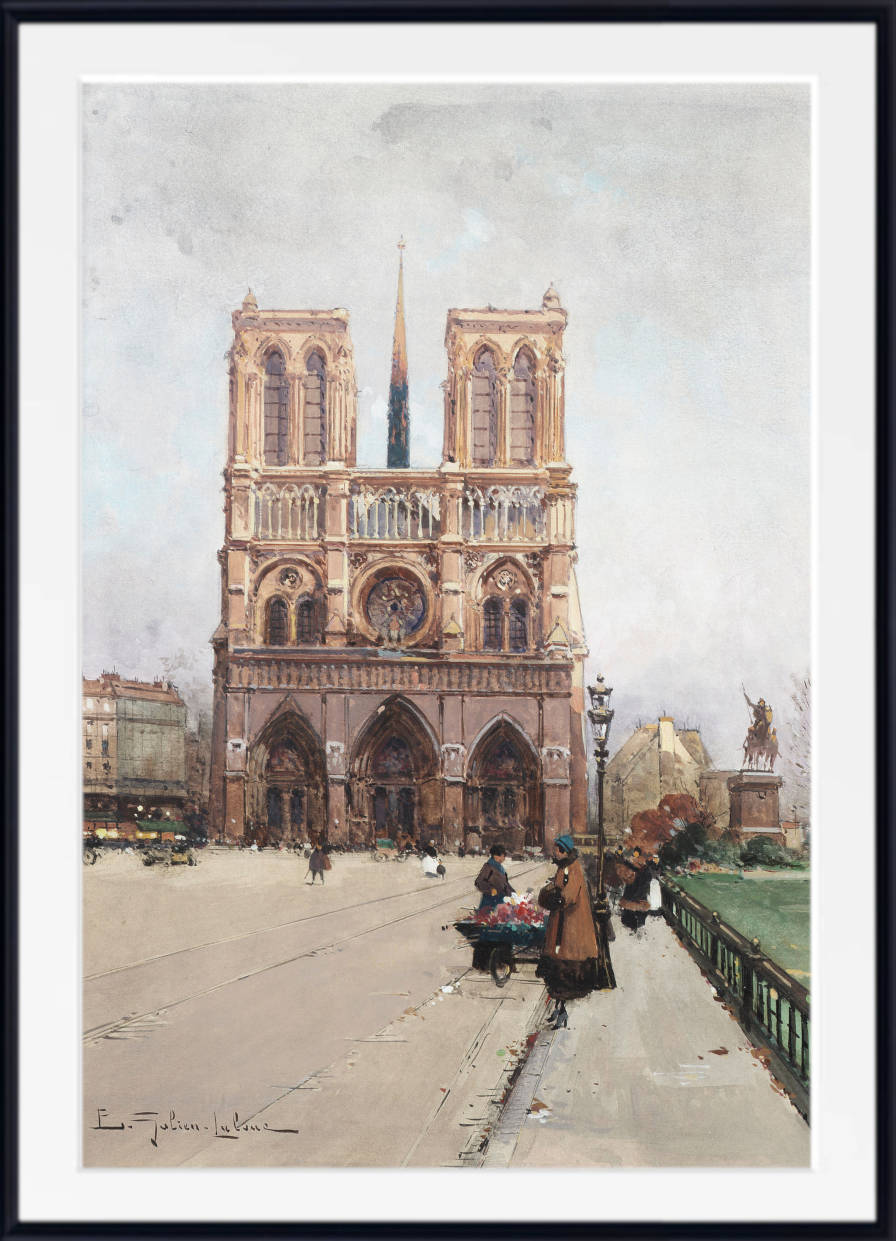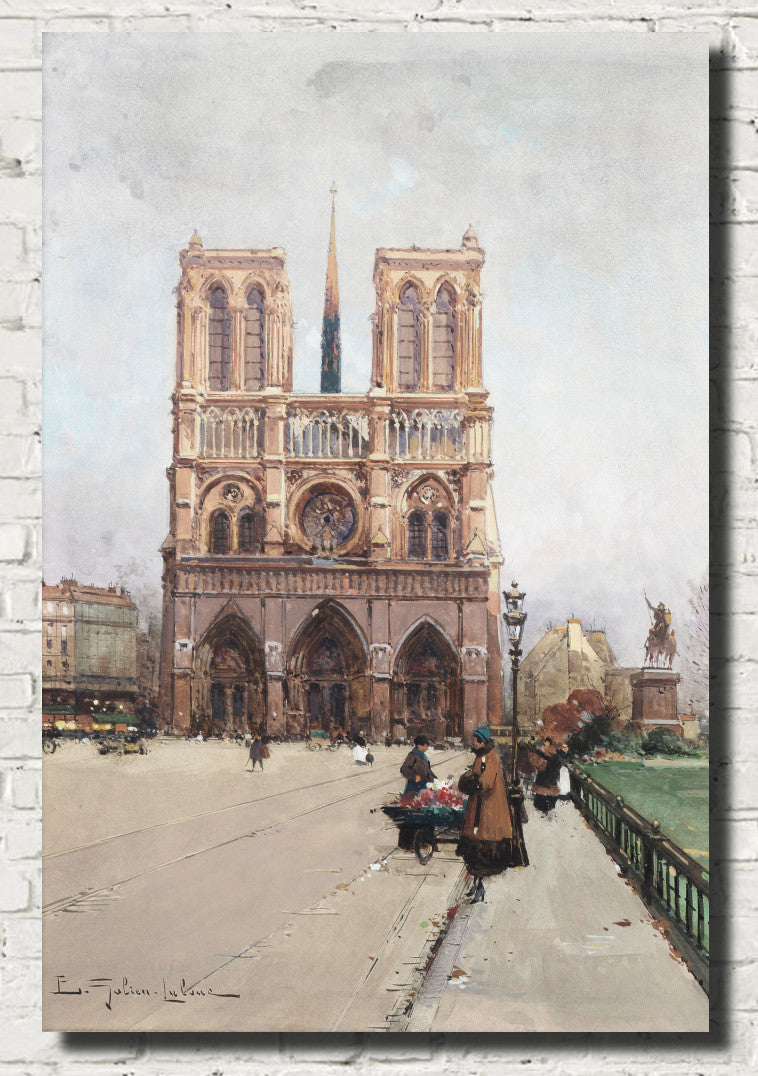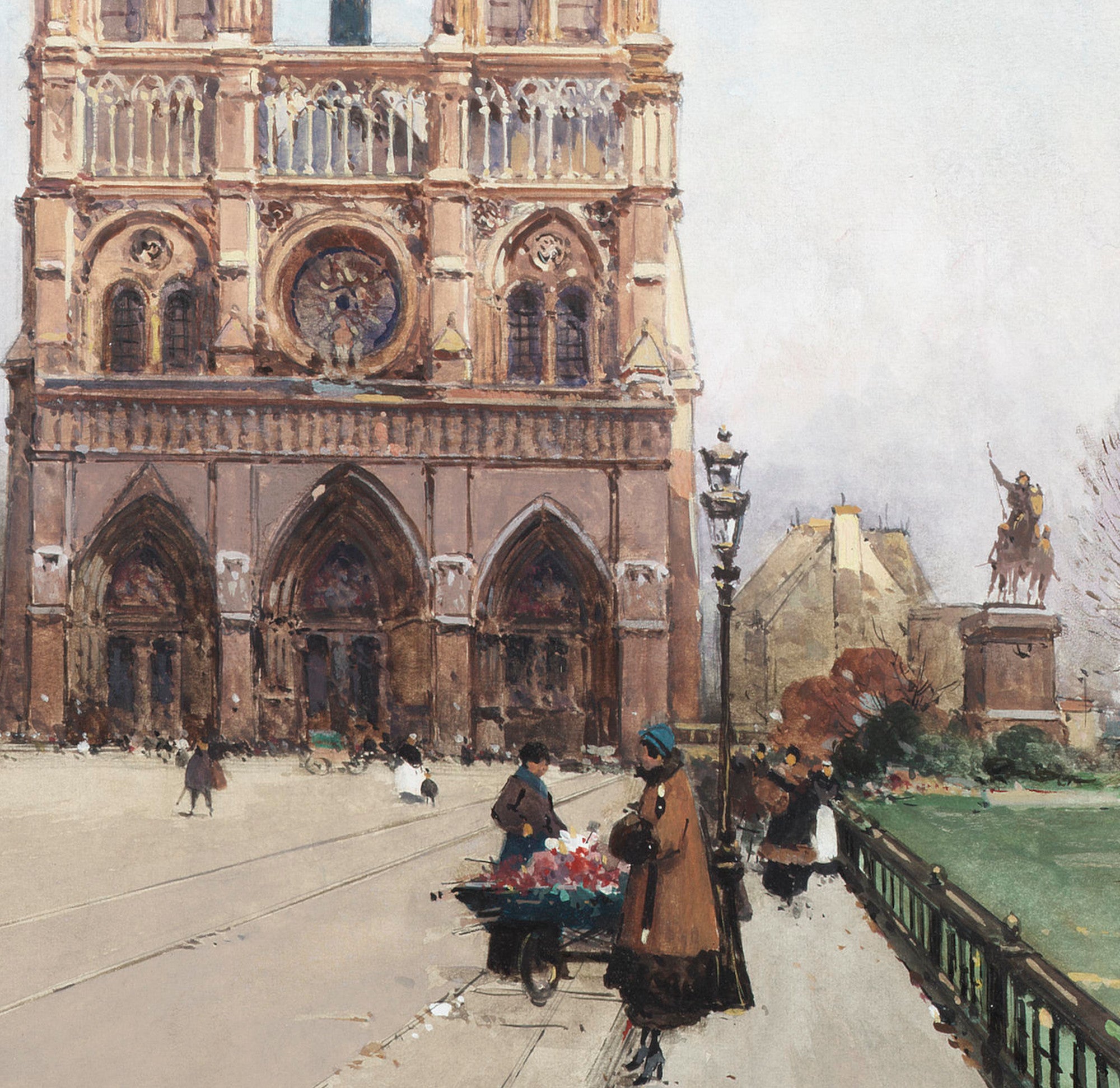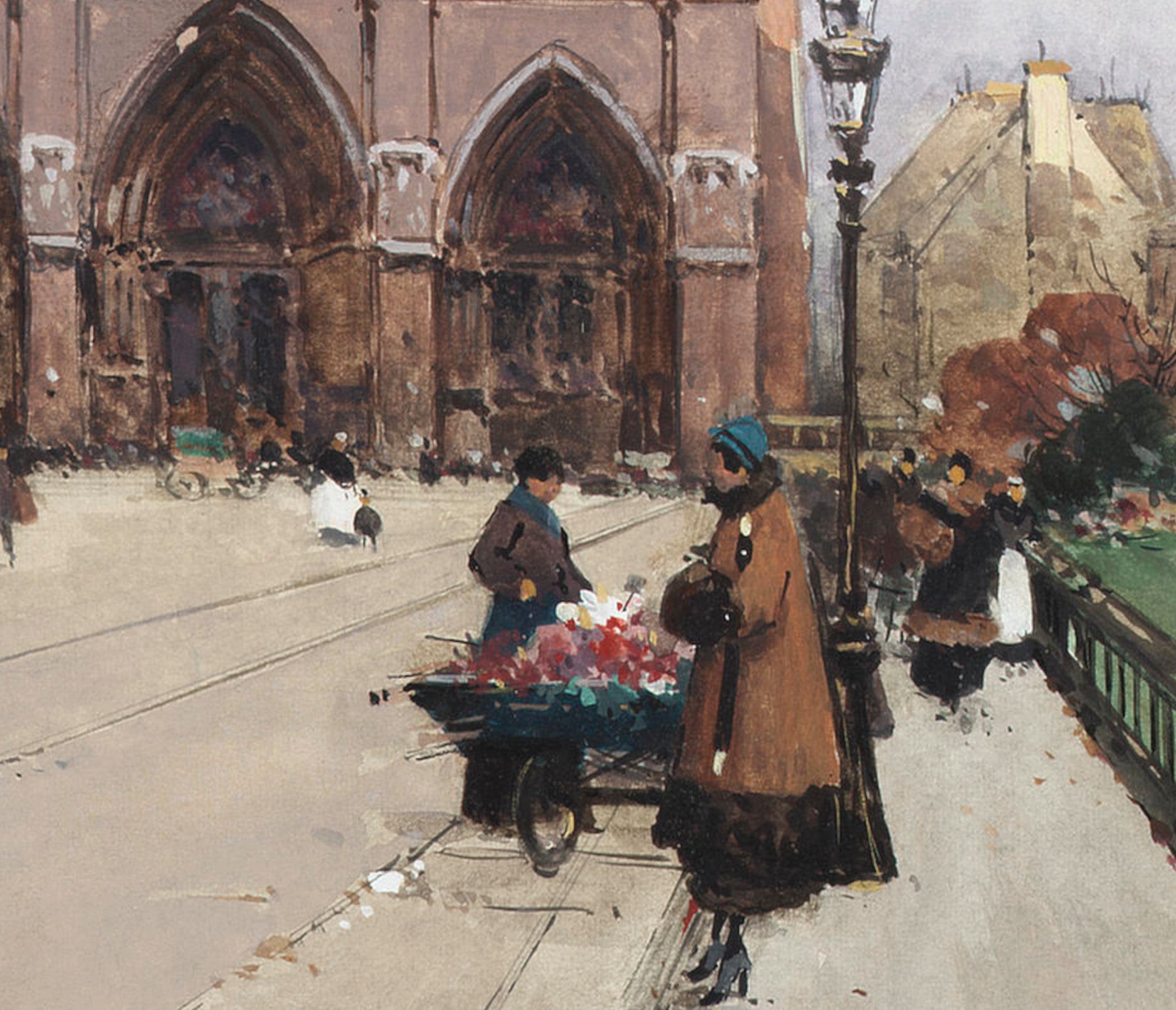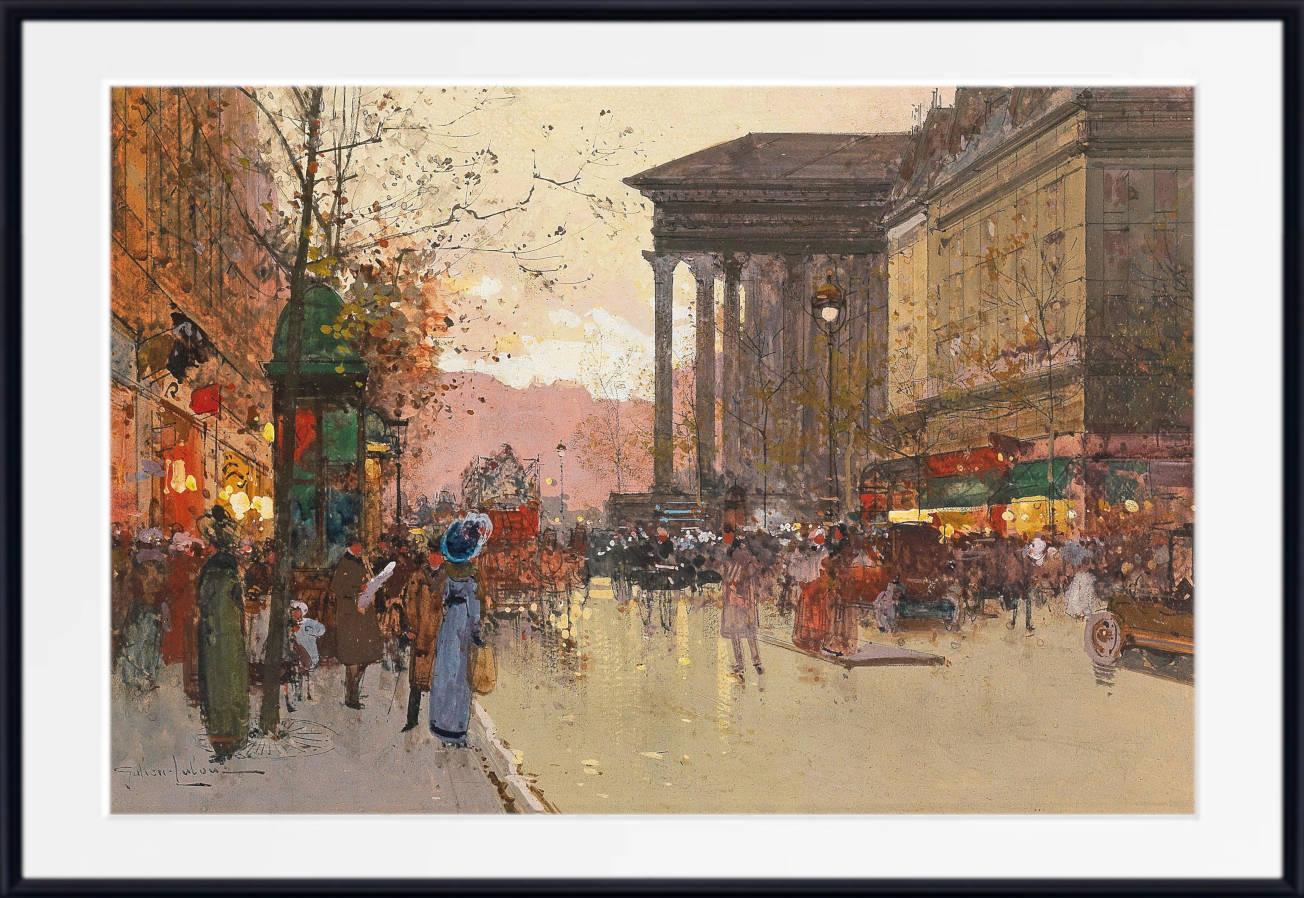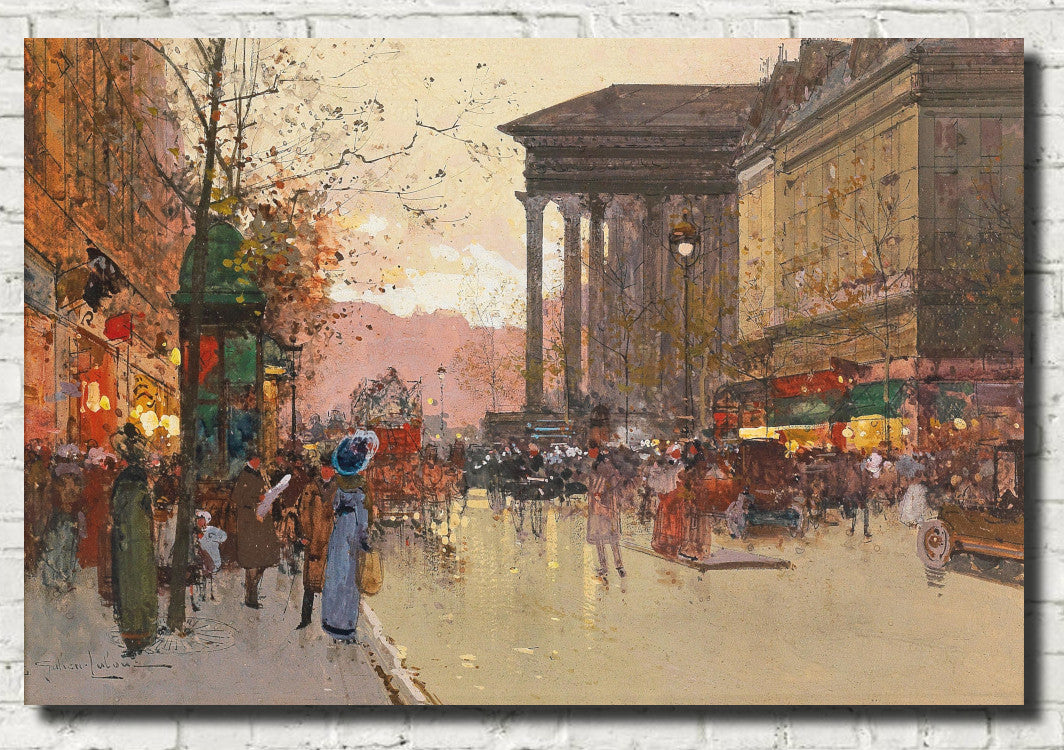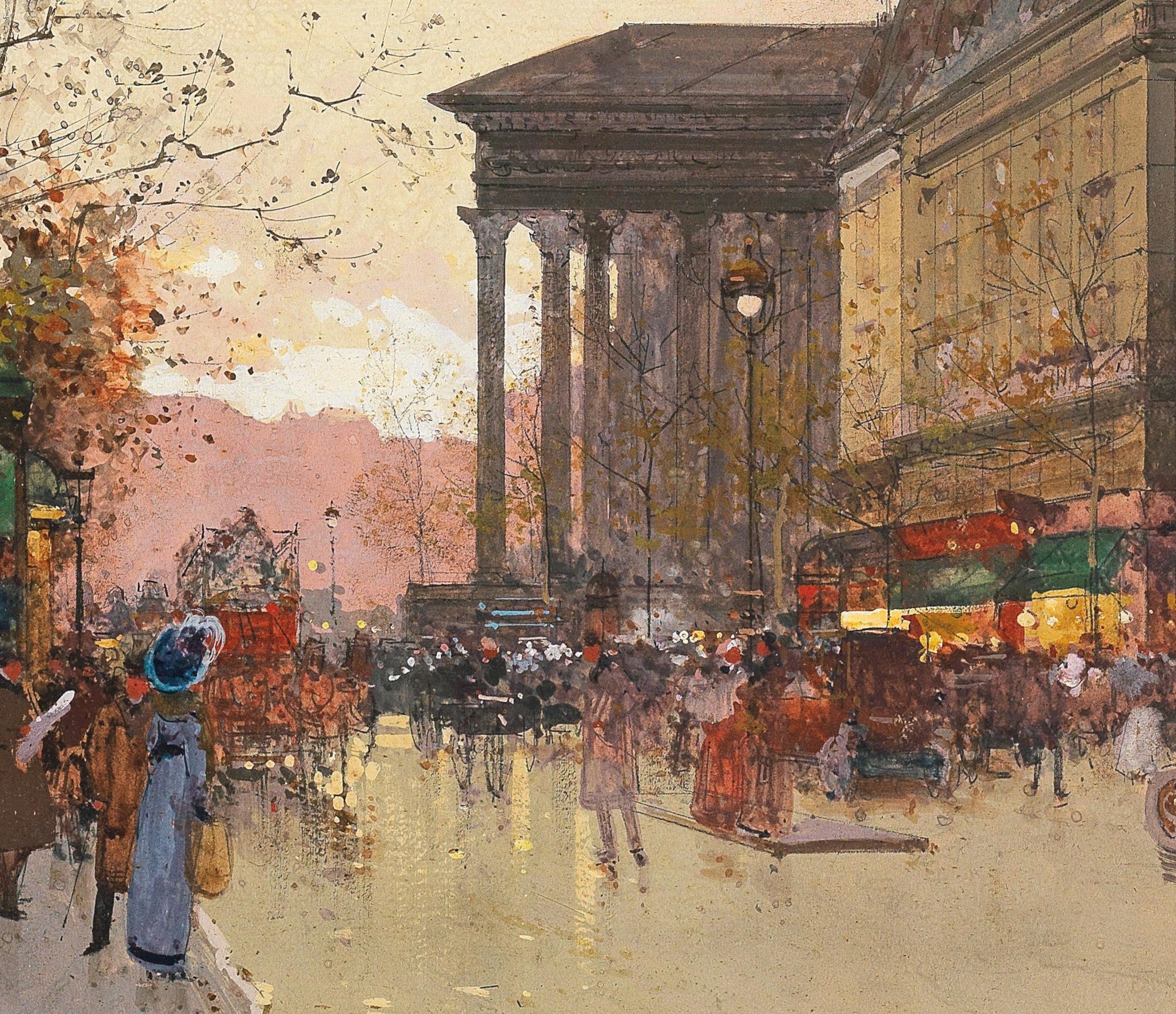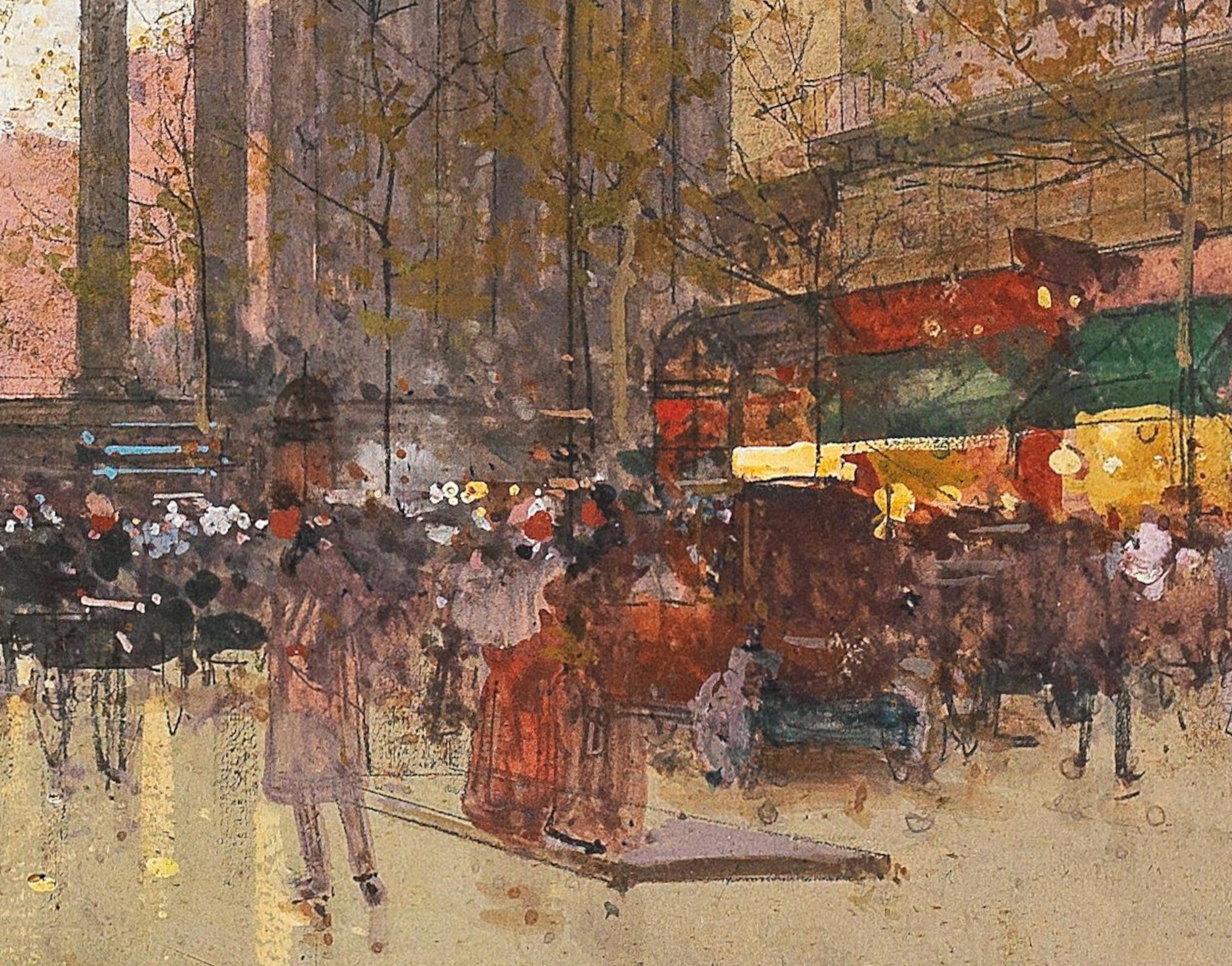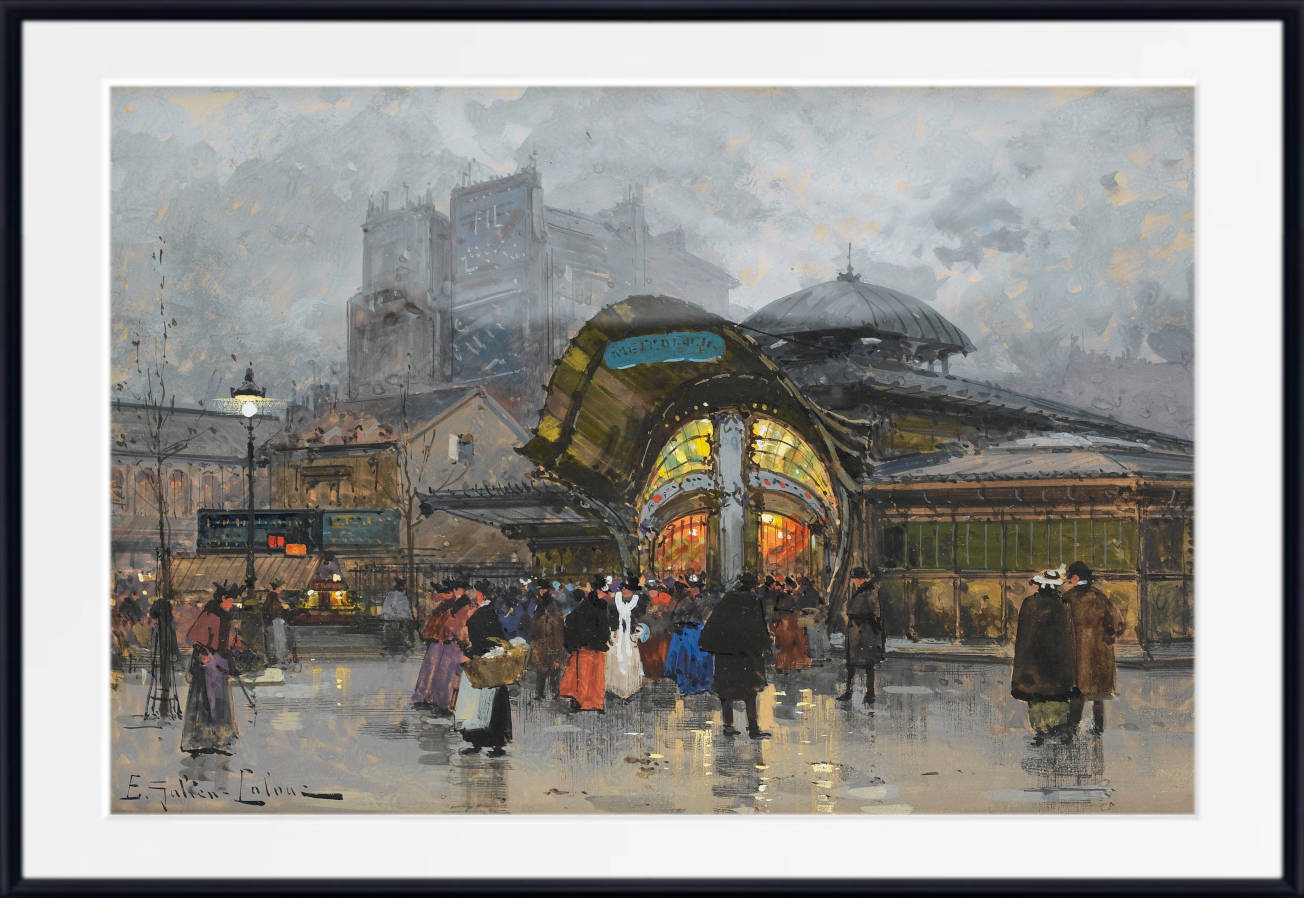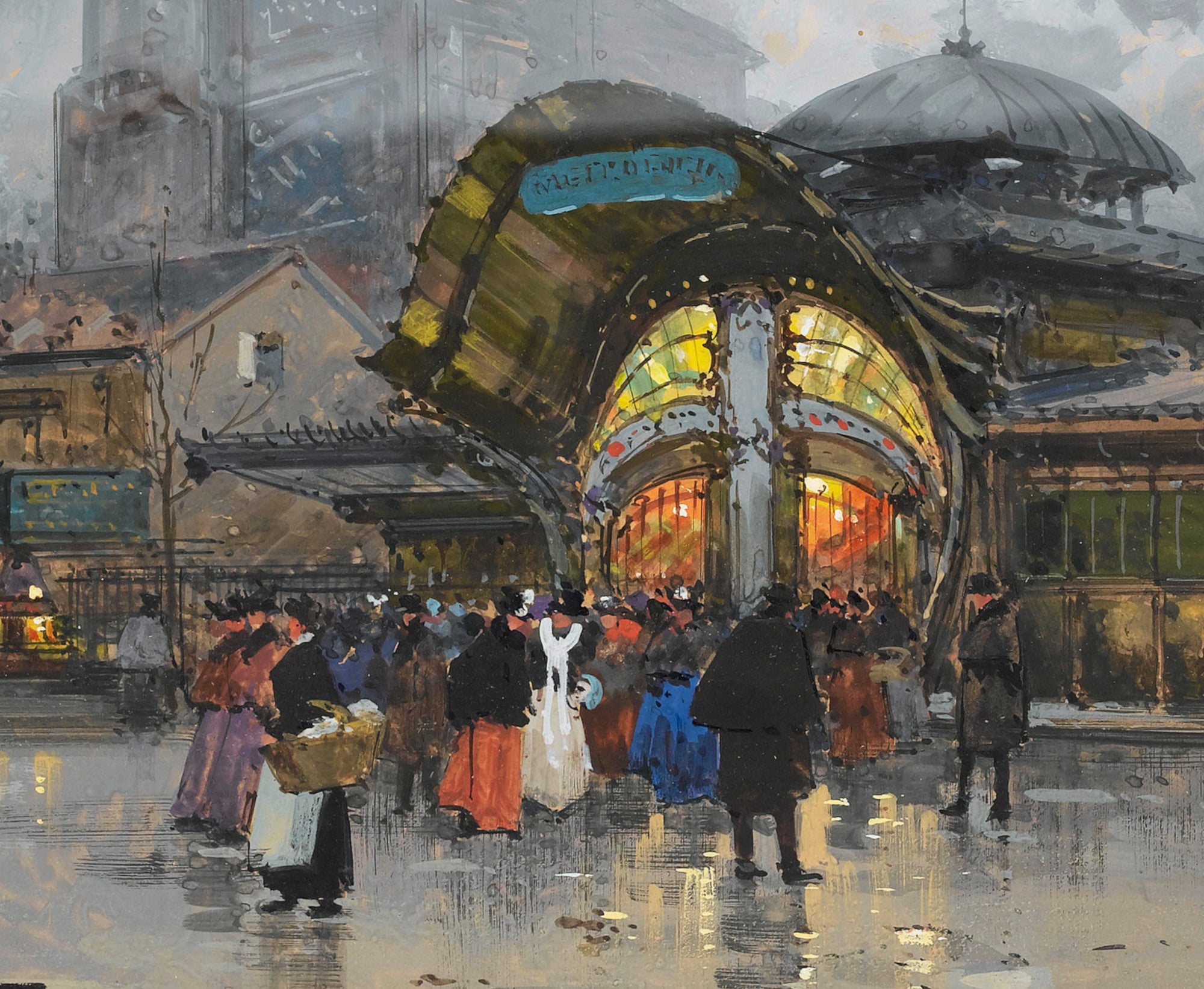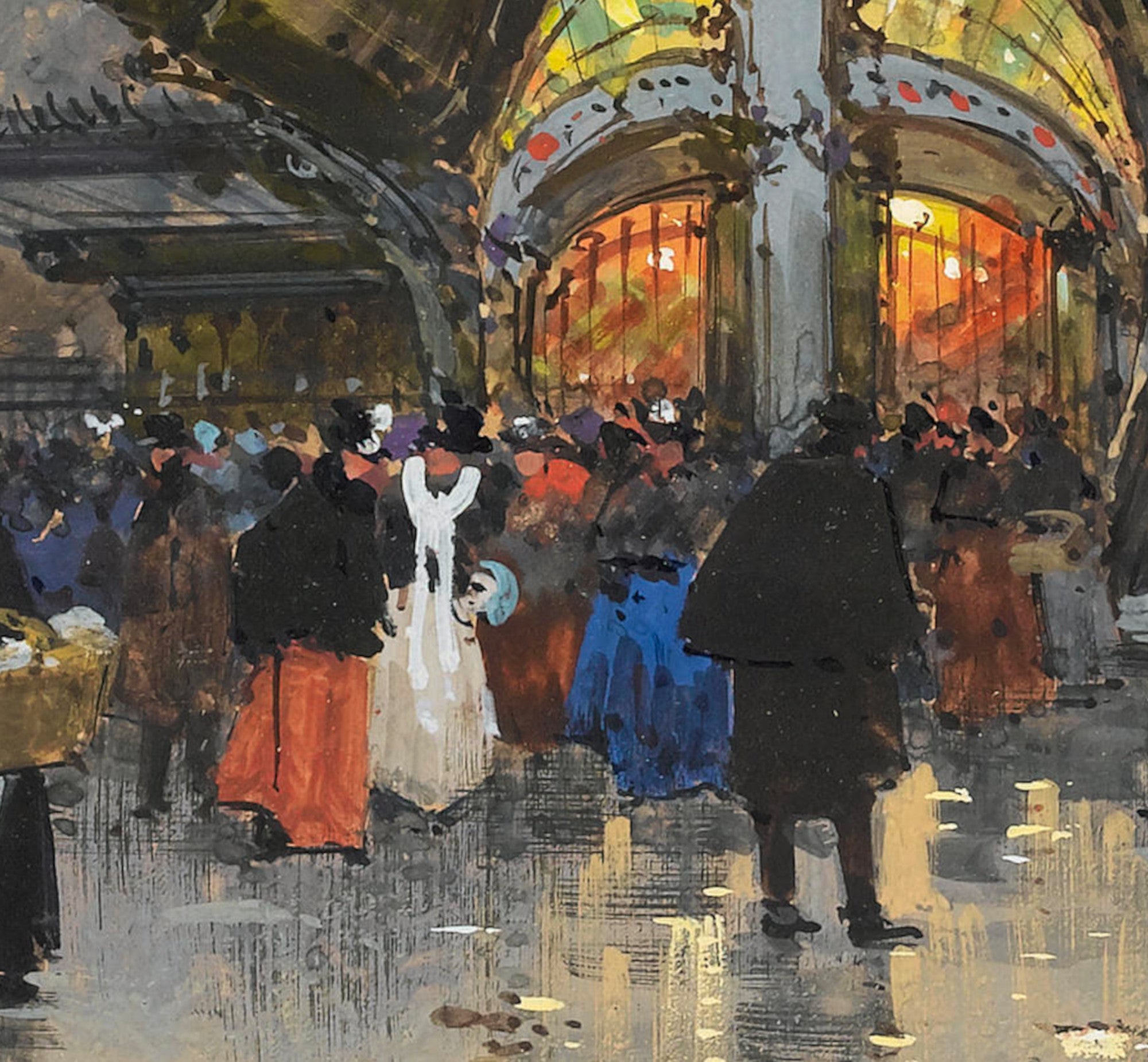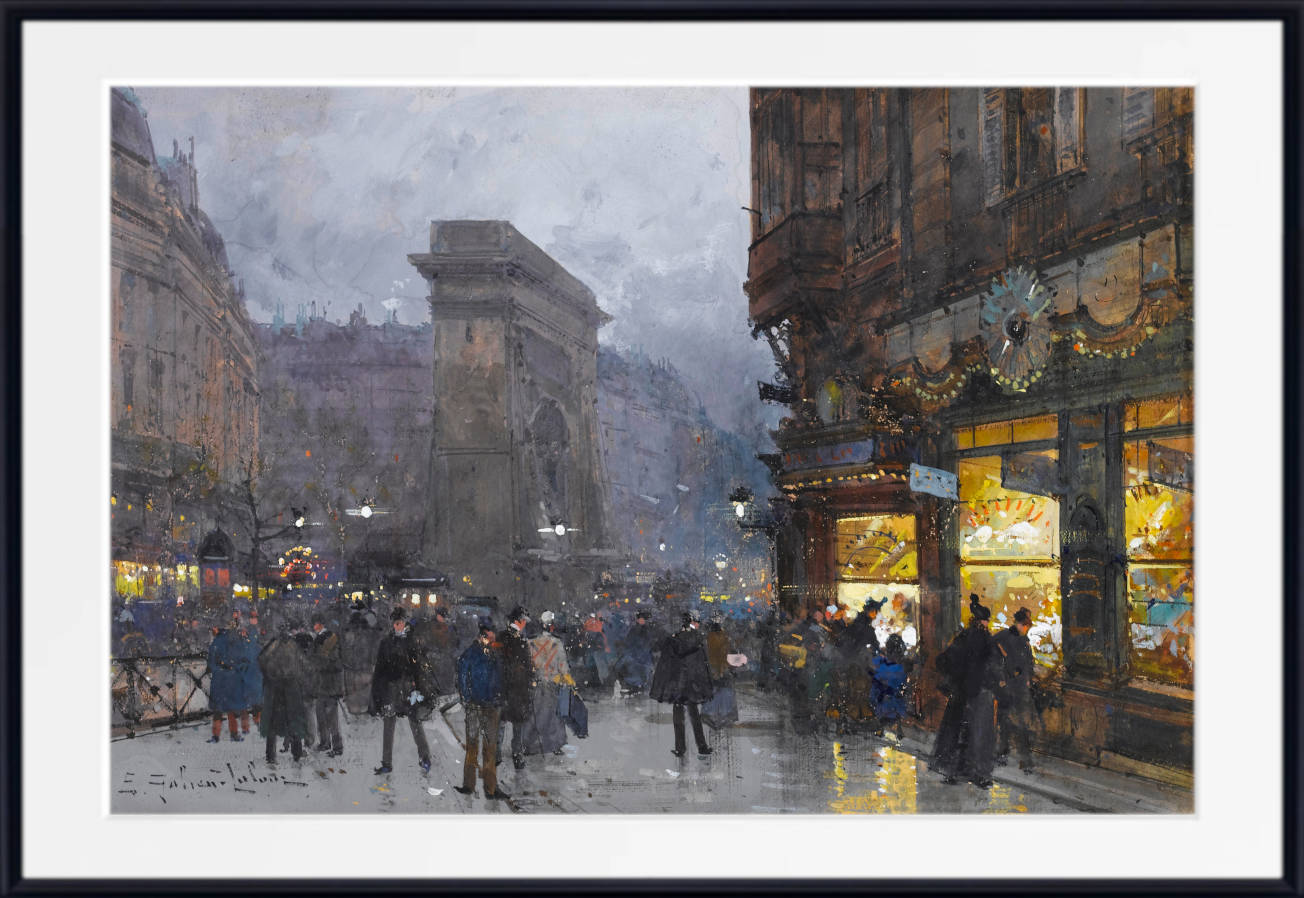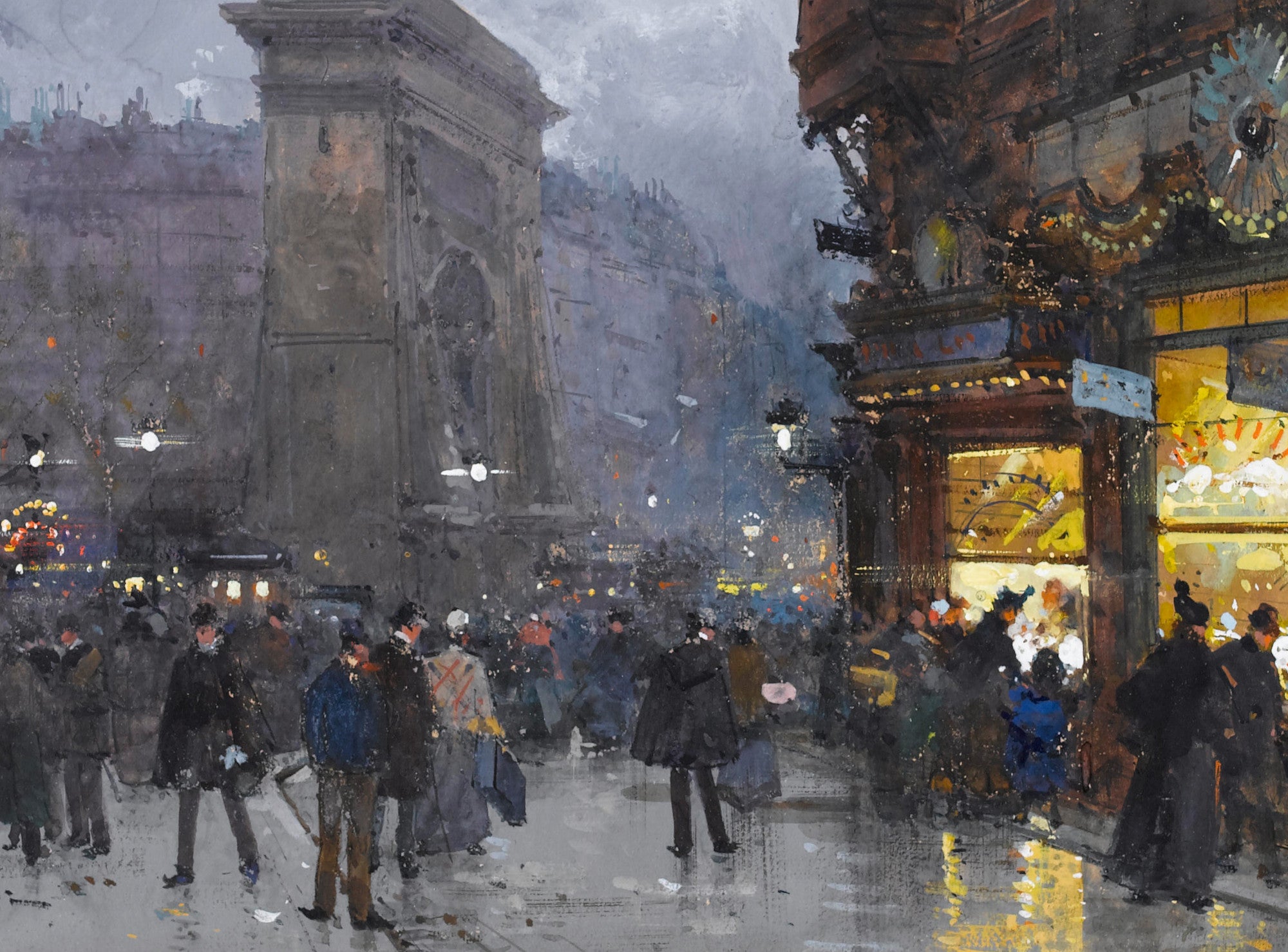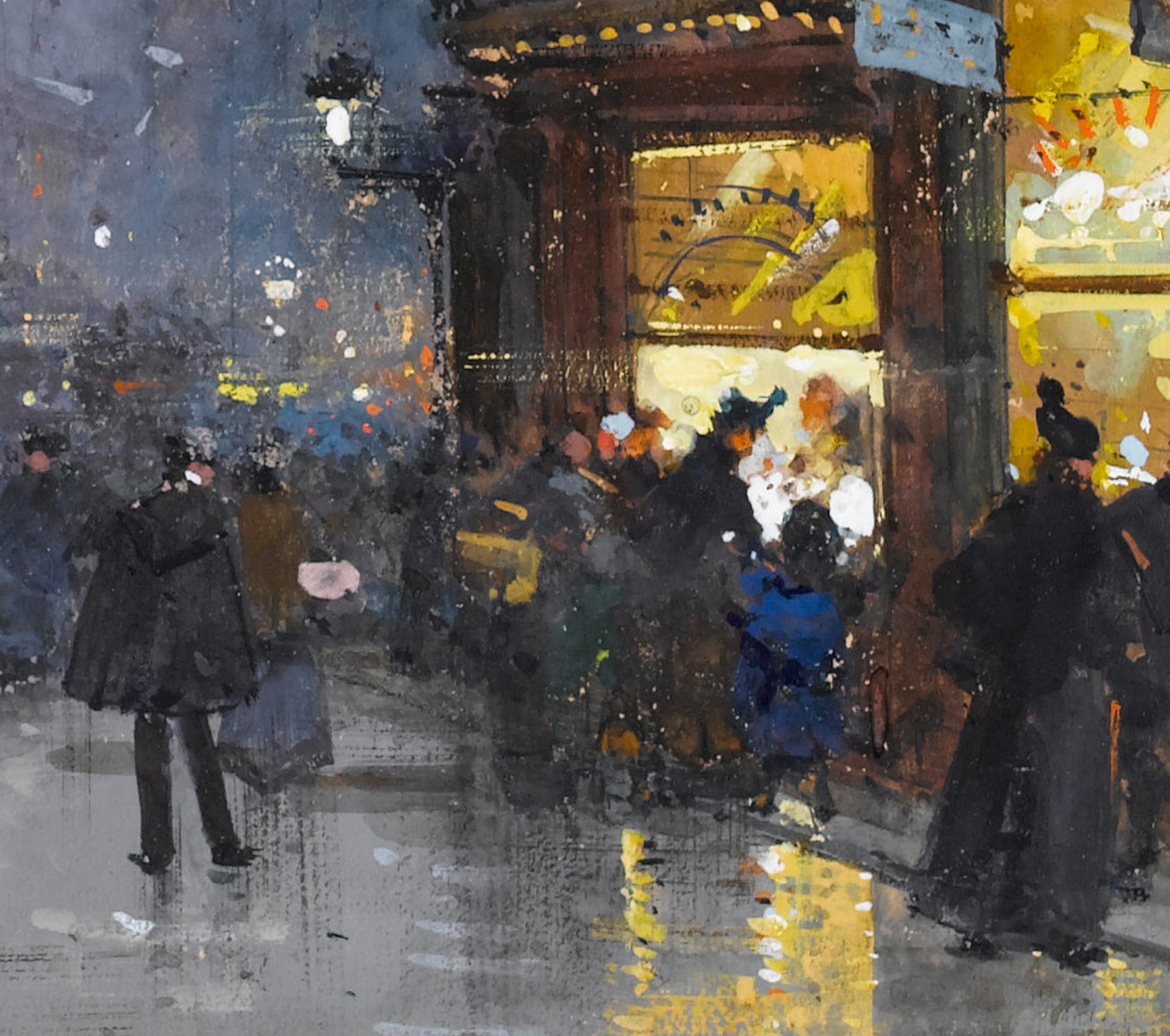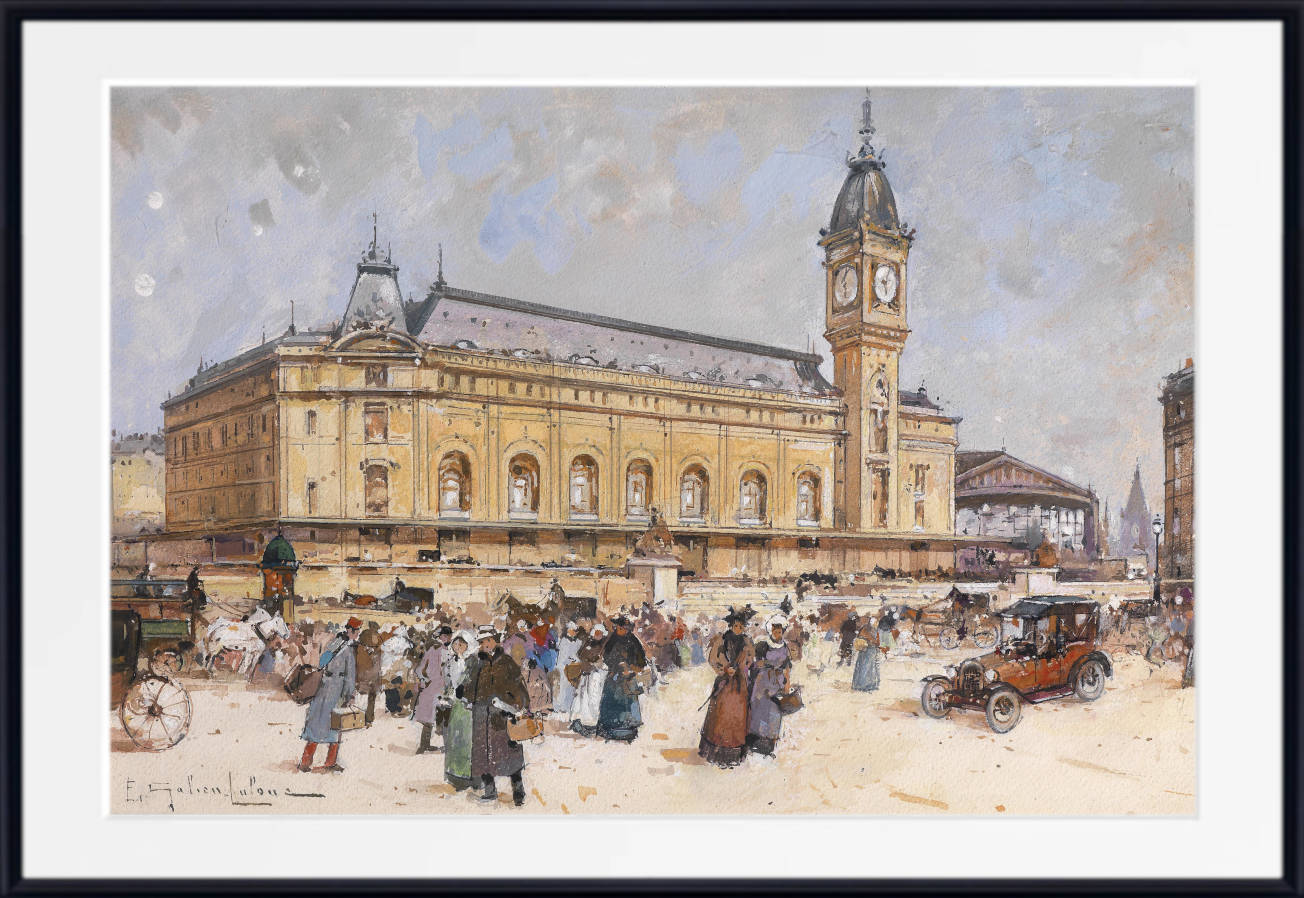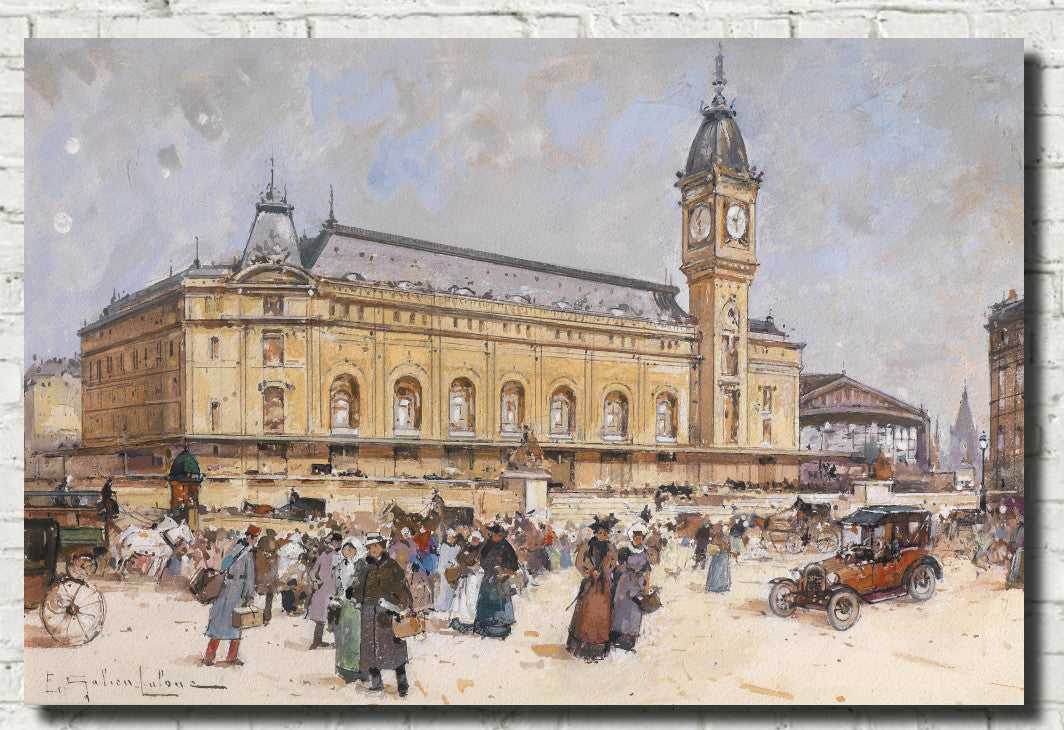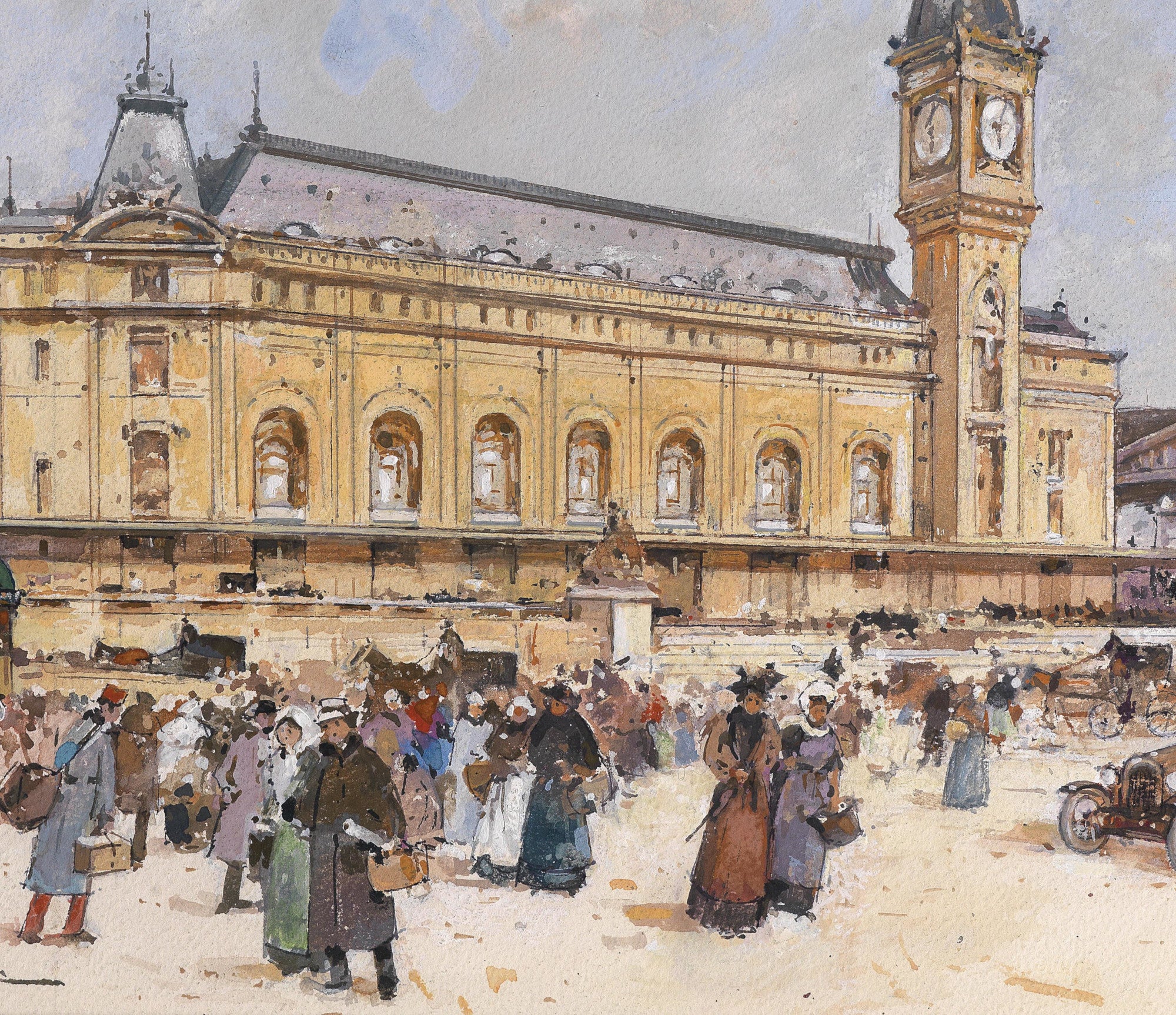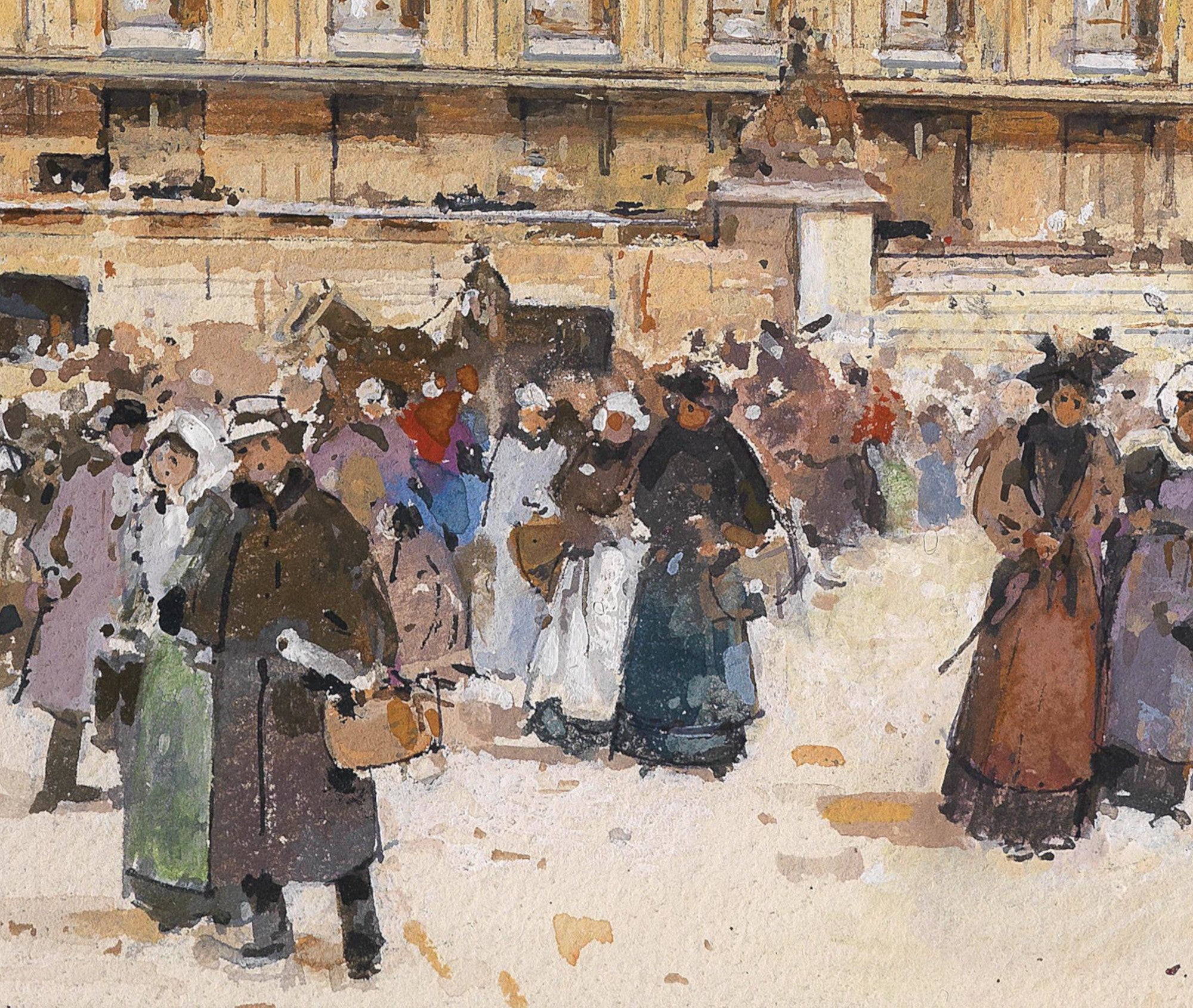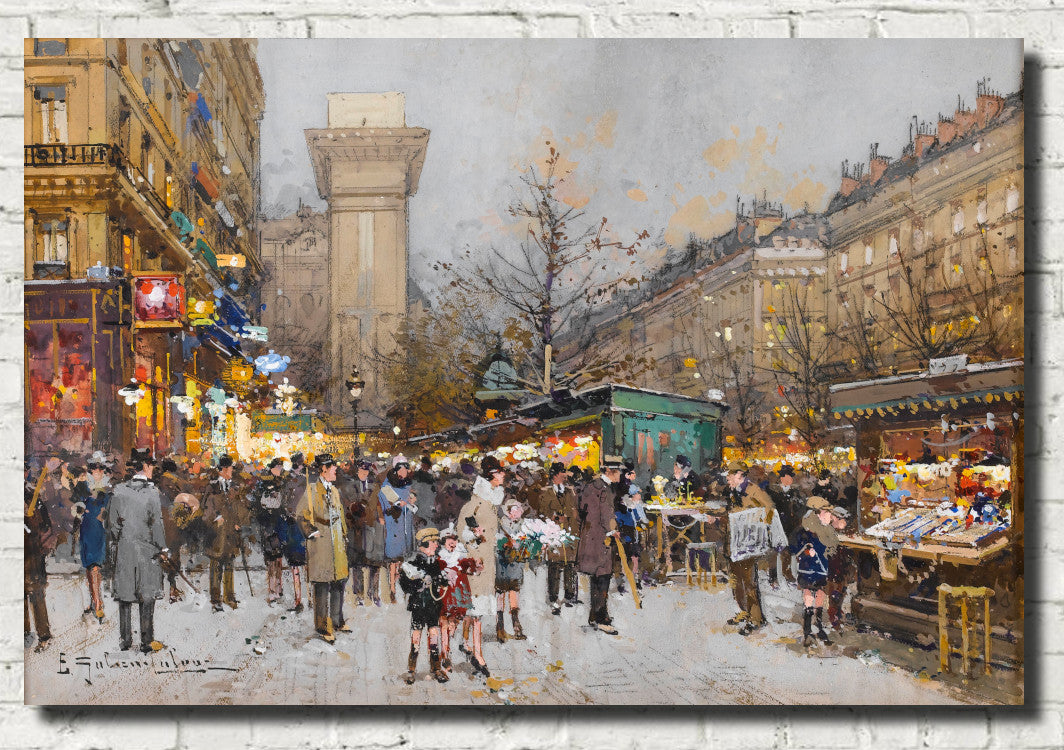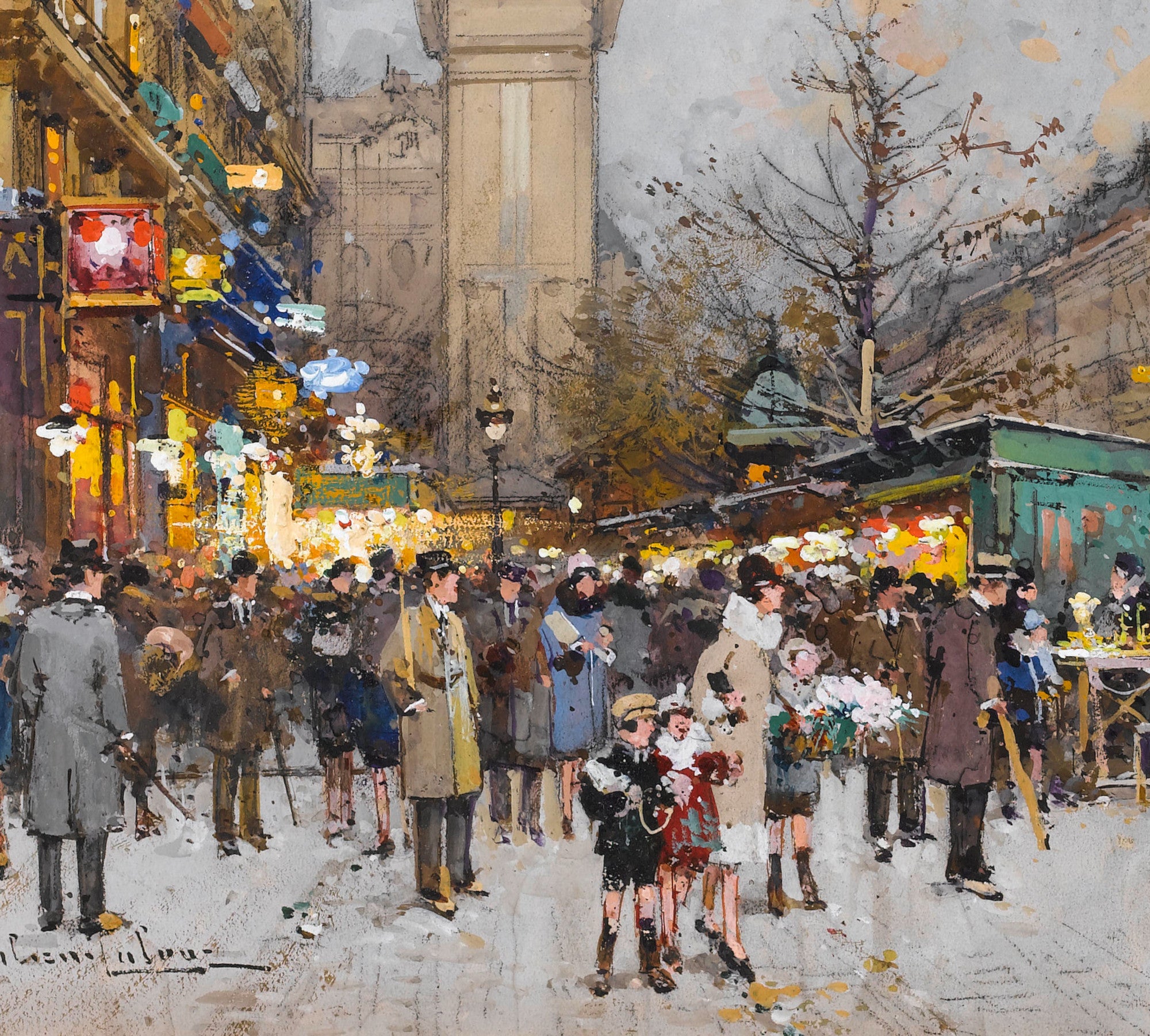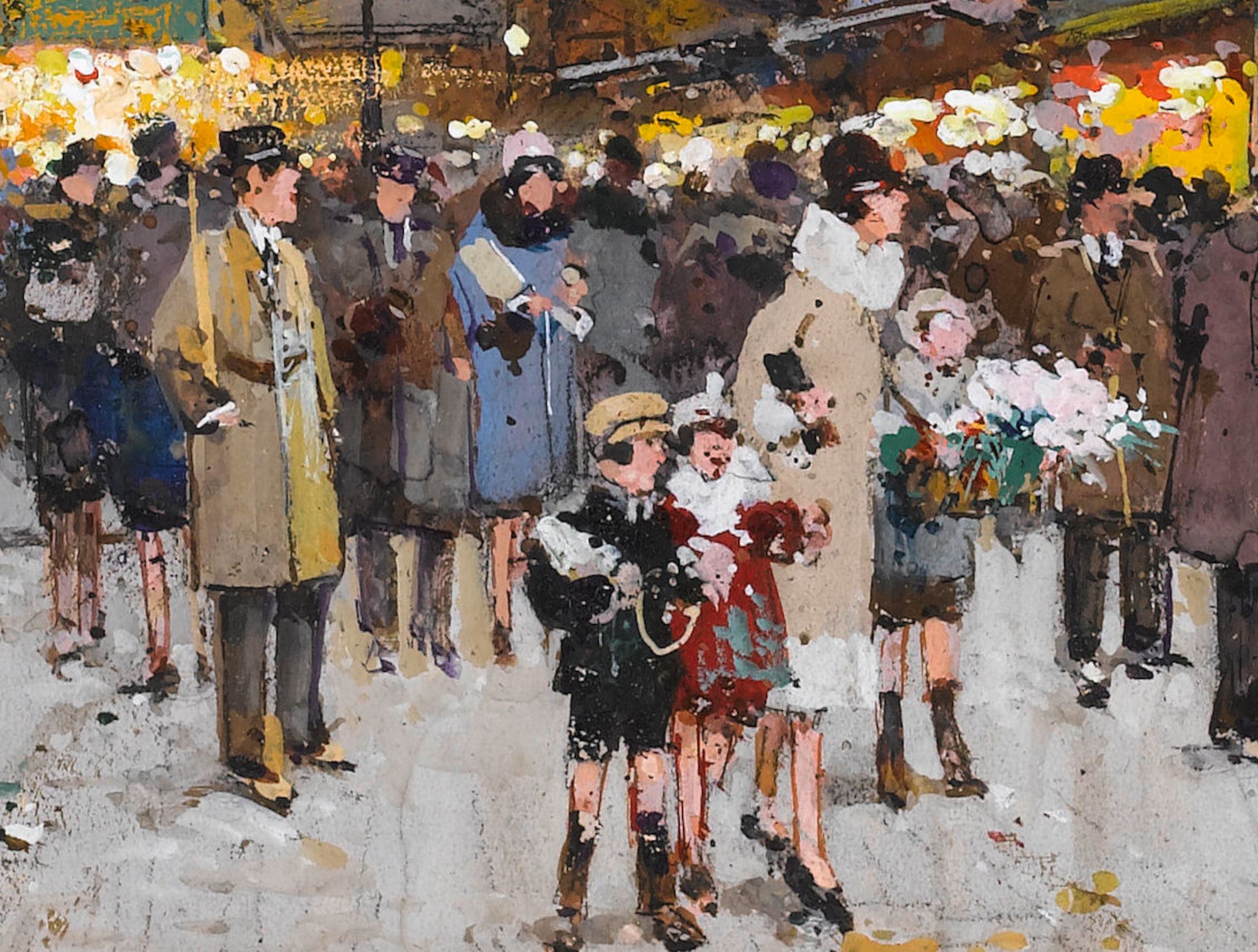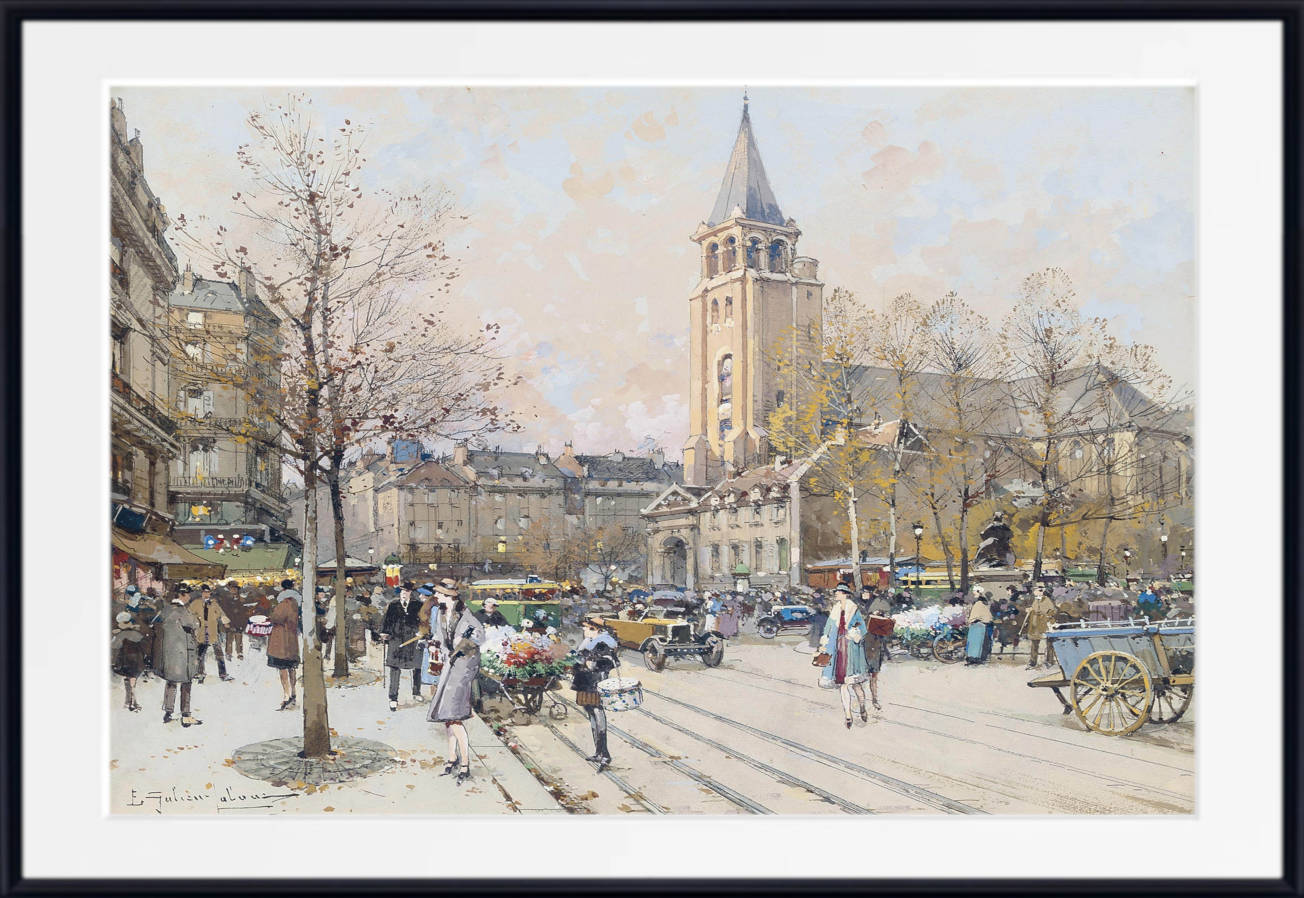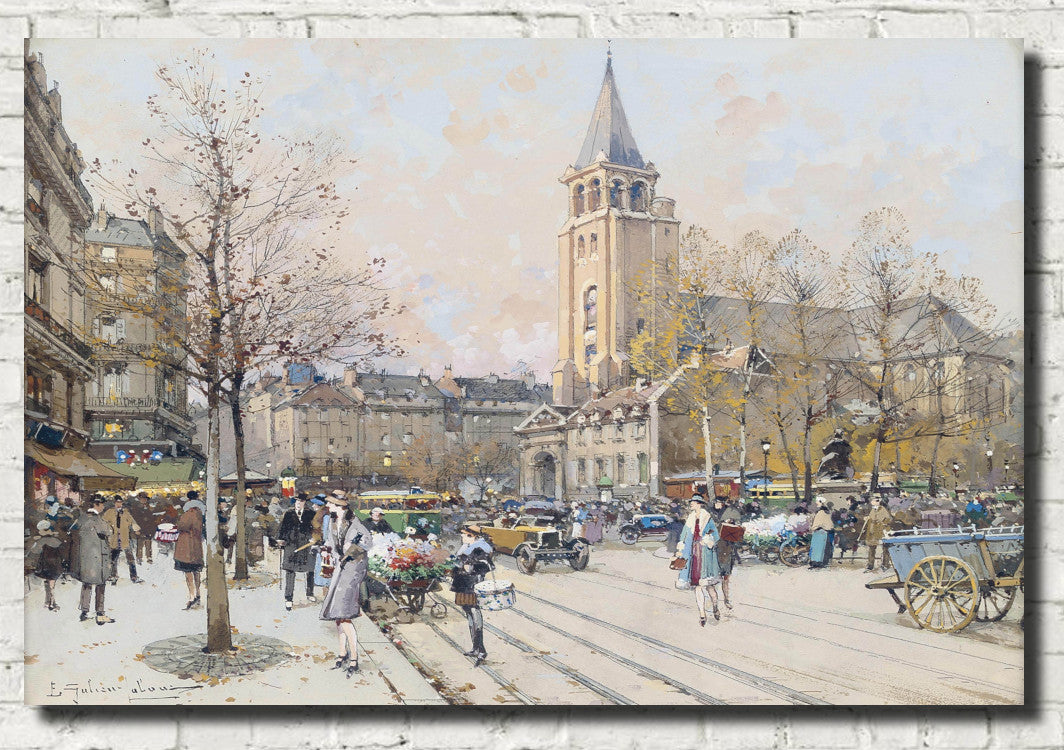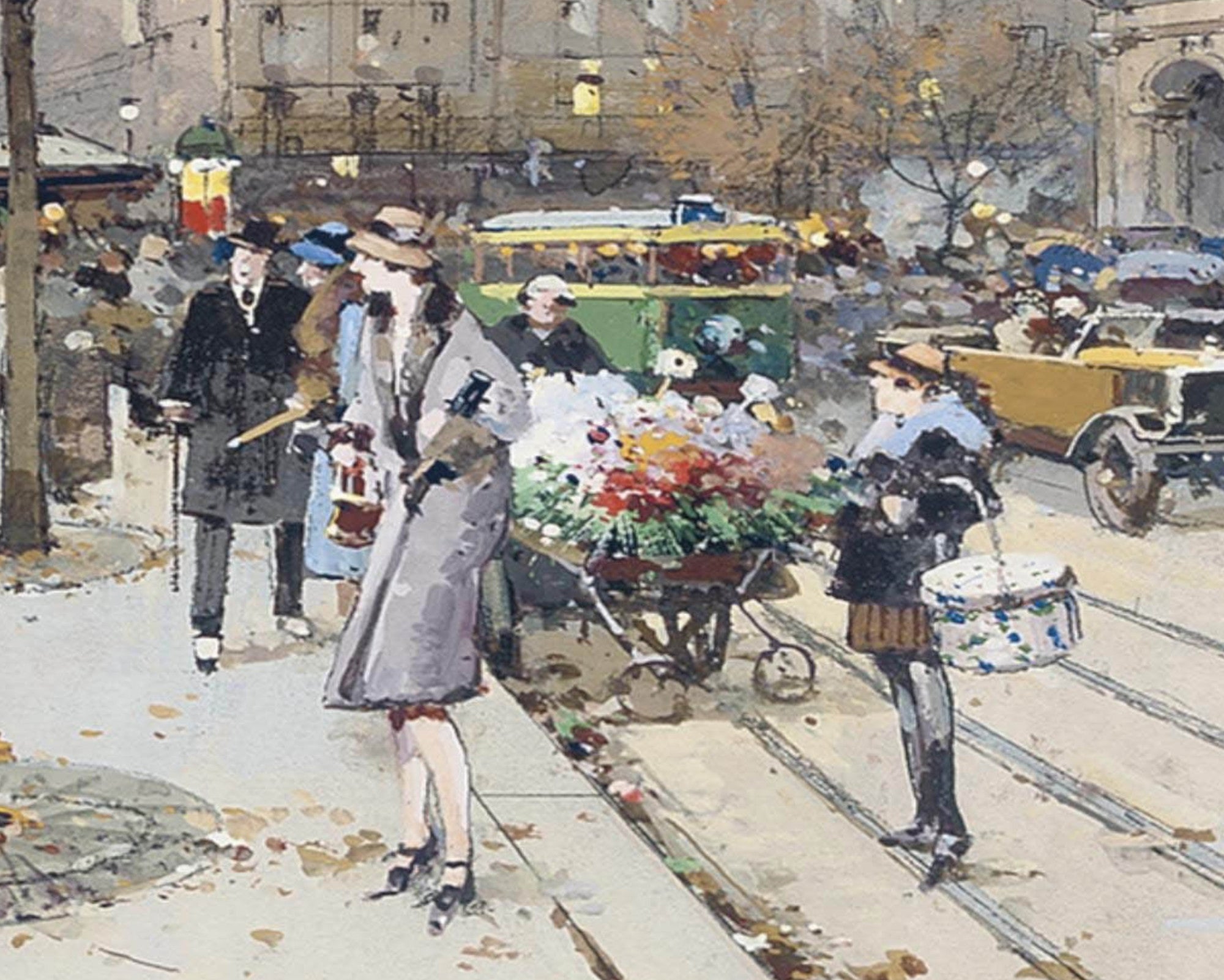In the realm of Parisian cityscape painting, few artists have captured the essence of the City of Light quite like Eugène Galien-Laloue. Born in 1854 in Paris, Galien-Laloue became renowned for his exquisite gouache paintings that transport viewers to the bustling streets of Belle Époque Paris. His works serve as a visual time capsule, preserving the charm and vitality of a bygone era through meticulous detail and atmospheric mastery.
The Artist and His Medium
Eugène Galien-Laloue's choice of gouache as his primary medium set him apart from many of his contemporaries. Gouache, an opaque watercolor paint, allowed him to achieve both delicate subtleties and bold, vibrant colors in his cityscapes. This versatile medium perfectly suited his style, enabling him to capture the play of light on wet pavements, the soft glow of street lamps, and the vivid hues of flower stalls with remarkable precision.
Mastery of Technique
Galien-Laloue's technical skill was unparalleled. His ability to render intricate architectural details, capture the nuances of light and shadow, and convey the hustle and bustle of city life in a relatively small format demonstrated his exceptional talent. Many of his works were small enough to be sold as postcards to tourists, yet they contained a wealth of detail that could rival much larger canvases.
A Window to Belle Époque Paris
The period known as the Belle Époque, spanning from the late 19th century to the outbreak of World War I, was a time of peace, prosperity, and cultural innovation in Paris. Galien-Laloue's paintings serve as a visual chronicle of this golden age, depicting a city in the midst of modernization yet still clinging to its romantic charm.
Iconic Landmarks
Galien-Laloue frequently painted Paris's most famous landmarks, including the Eiffel Tower, Arc de Triomphe, and Notre-Dame Cathedral. However, he had a unique ability to present these iconic structures not as isolated monuments, but as integral parts of the living, breathing city. In his paintings, the grand architecture of Paris serves as a backdrop to the daily life of its inhabitants.
The Pulse of Parisian Life
What truly sets Galien-Laloue's work apart is his attention to the human element of the Parisian streetscape. His scenes are populated with a diverse cast of characters: elegant ladies in fashionable dresses, gentlemen in top hats, street vendors pushing carts, and children at play. These figures, though often small in scale, bring his cityscapes to life and offer viewers a glimpse into the social fabric of Belle Époque Paris.
Changing Seasons, Changing City
One of the most captivating aspects of Galien-Laloue's oeuvre is his depiction of Paris through the changing seasons. From sun-dappled spring afternoons to snowy winter evenings, he captured the city in all its moods and weather conditions.
Spring and Summer Scenes
In his spring and summer paintings, Galien-Laloue's Paris bursts with color and life. Flower markets bloom with vibrant bouquets, trees along the boulevards are lush with green foliage, and Parisians stroll leisurely under clear blue skies. These scenes evoke the joie de vivre that Paris is famous for, showcasing the city at its most inviting and romantic.
Autumn and Winter Cityscapes
Galien-Laloue's autumnal and winter scenes are equally enchanting, if more subdued. He masterfully captured the golden light of late afternoon in fall, with trees turning shades of amber and russet. His winter paintings, featuring snow-covered streets and bundled-up pedestrians, demonstrate his skill in rendering the soft, diffused light of overcast days and the warm glow of shop windows against the gray Parisian sky.
The Changing Face of Paris
As an artist working during a time of significant urban development, Galien-Laloue documented the changing face of Paris. His paintings show a city in transition, where horse-drawn carriages share the streets with early automobiles, and gas lamps coexist with electric lights.
Haussmann's Paris
Many of Galien-Laloue's most famous works depict the grand boulevards and uniform building facades that resulted from Baron Haussmann's massive urban renovation project. These wide, tree-lined avenues became iconic symbols of modern Paris, and Galien-Laloue captured their grandeur and the new patterns of urban life they facilitated.
Modernity and Tradition
While celebrating the modernity of the new Paris, Galien-Laloue also preserved glimpses of the old city in his work. Quaint street corners, traditional markets, and timeless human interactions remind viewers of the enduring spirit of Paris beneath its evolving exterior.
Legacy and Influence
Eugène Galien-Laloue's paintings continue to captivate art lovers and historians alike. His work provides not only aesthetic pleasure but also valuable historical documentation of Paris during a pivotal period in its development.
Collector's Treasure
Today, Galien-Laloue's gouaches are highly prized by collectors. Their combination of artistic merit and historical significance makes them valuable both as works of art and as windows into the past. The small size of many of his paintings, originally intended to make them accessible to tourists, now adds to their charm and collectibility.
Inspiration for Future Generations
Galien-Laloue's meticulous approach to cityscape painting has inspired generations of artists. His ability to capture the atmosphere and character of a place, not just its physical appearance, continues to influence urban landscape painters around the world.
Conclusion
Eugène Galien-Laloue's Paris, as seen through his gouache paintings, offers viewers a journey through time to the glittering world of the Belle Époque. His works are more than mere representations of the city; they are intimate portraits that capture the soul of Paris during a time of great change and cultural flowering. Through his delicate brushwork, vivid colors, and keen eye for detail, Galien-Laloue preserved a vision of Paris that continues to enchant and inspire, allowing modern viewers to step back in time and experience the City of Light in all its turn-of-the-century splendor.
Related Articles
Scenes of Paris
Eugène Galien-Laloue
Paris Landmarks in Art

